
Thinking about heading over to Italy to explore some Old World wines? The choice of where to go can be a hard one to make. Italy is one of the world’s top destinations for wine, food, and agrotourism. That’s a good thing. The downside? Some regions have become overrun with tourists especially during the April to November, and holiday peak travel seasons.
If you’re looking to experience Old-World Italian charm minus the long lines, overbooked hotels, and maddening throngs of out-of-towners, consider Umbria in central Italy.
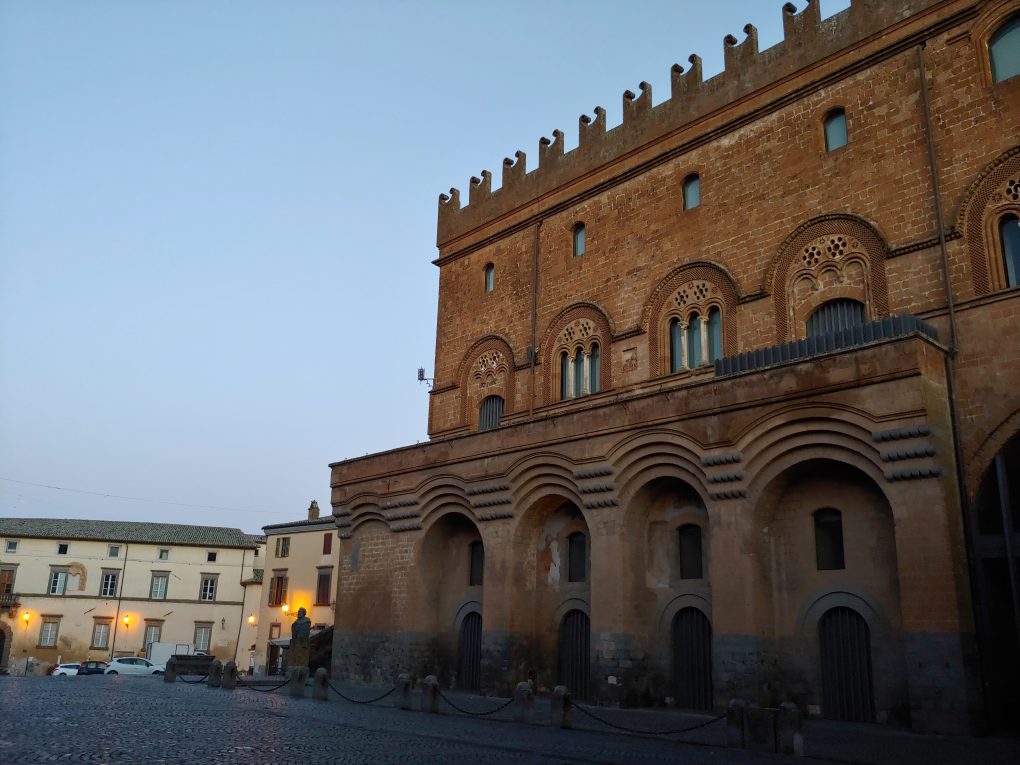
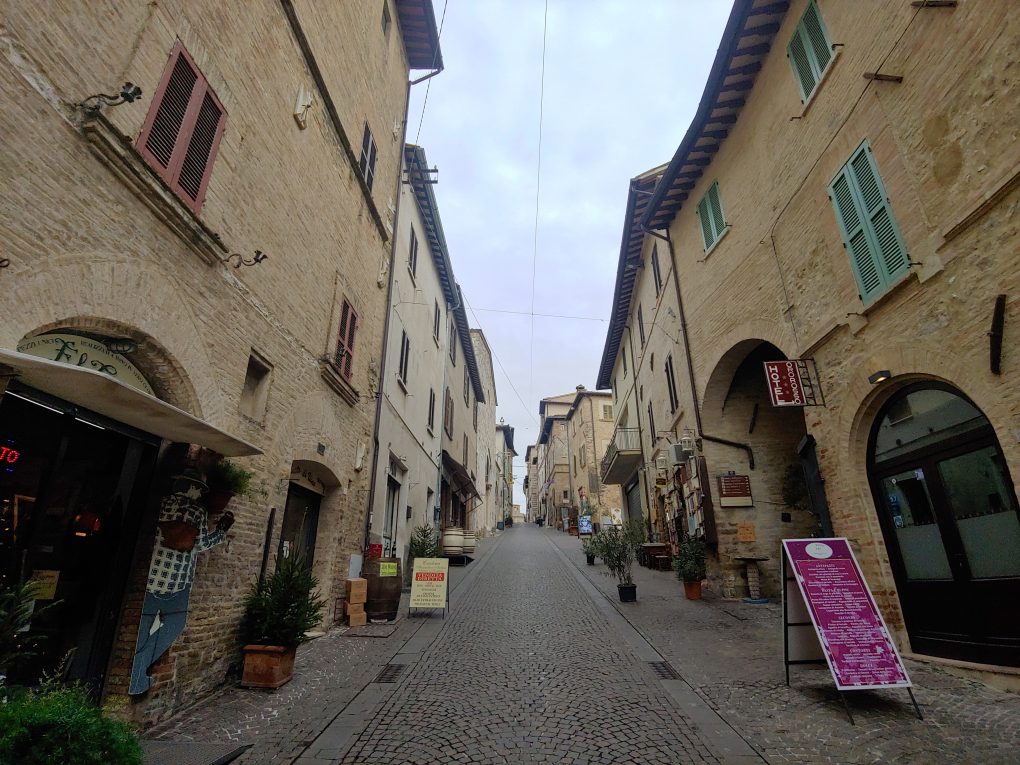
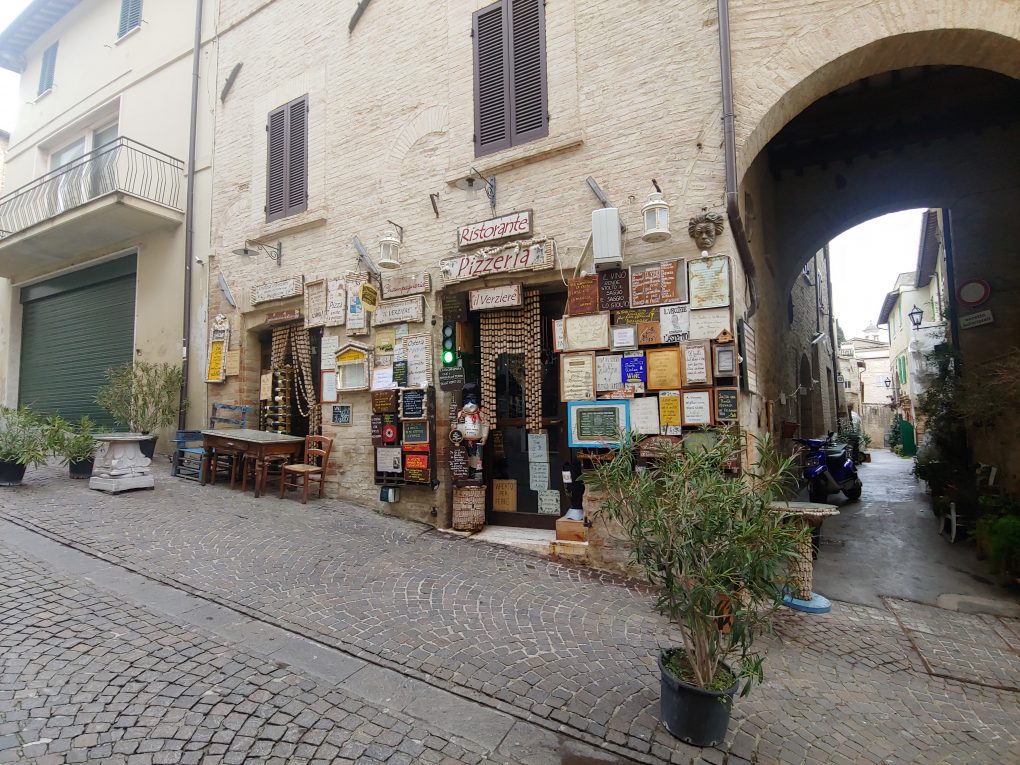
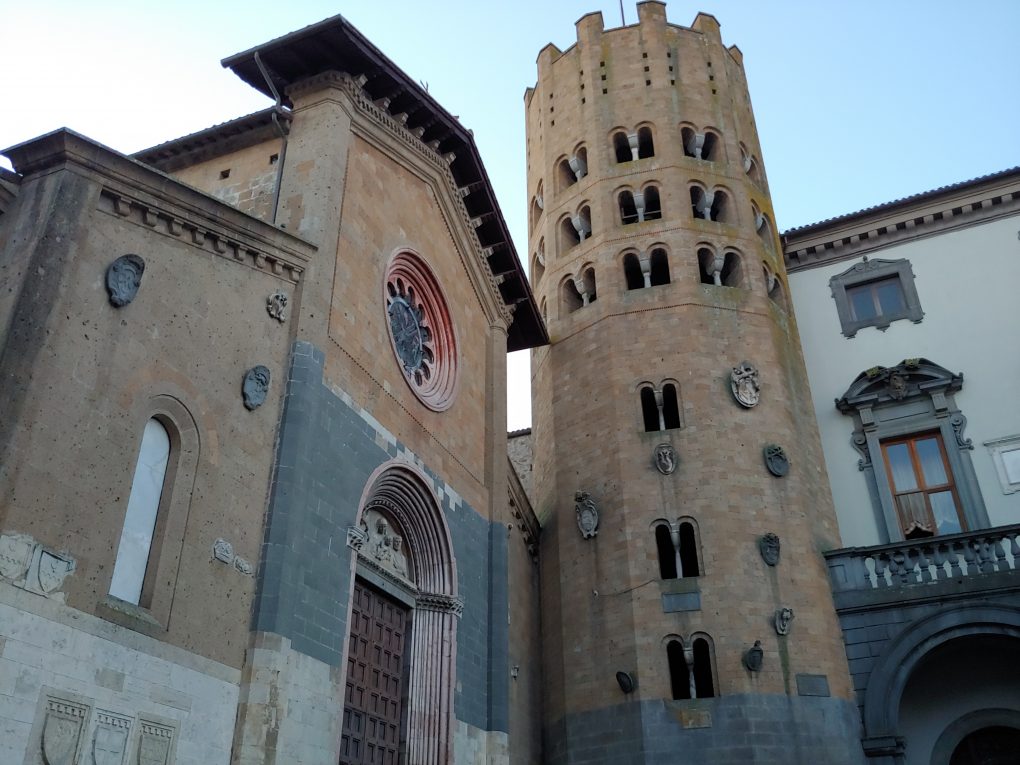
Umbria is an historic wine producing region that’s roughly an hour’s drive from Fiumicino airport in Rome. Here, you can still drink wines made from autochthonous grapes found virtually nowhere else, while enjoying regional cuisine including fish from freshwater lakes, and beef from Chianina cattle, with locals.
Mind you, there’s nothing wrong with tourists, but when you’re in Italy, odds are you’ll want to drink in the local culture, with well, locals. You can find wineries throughout Umbria but they are concentrated in four major areas: Orvieto, Montefalco, Torgiano, and Trasimeno.
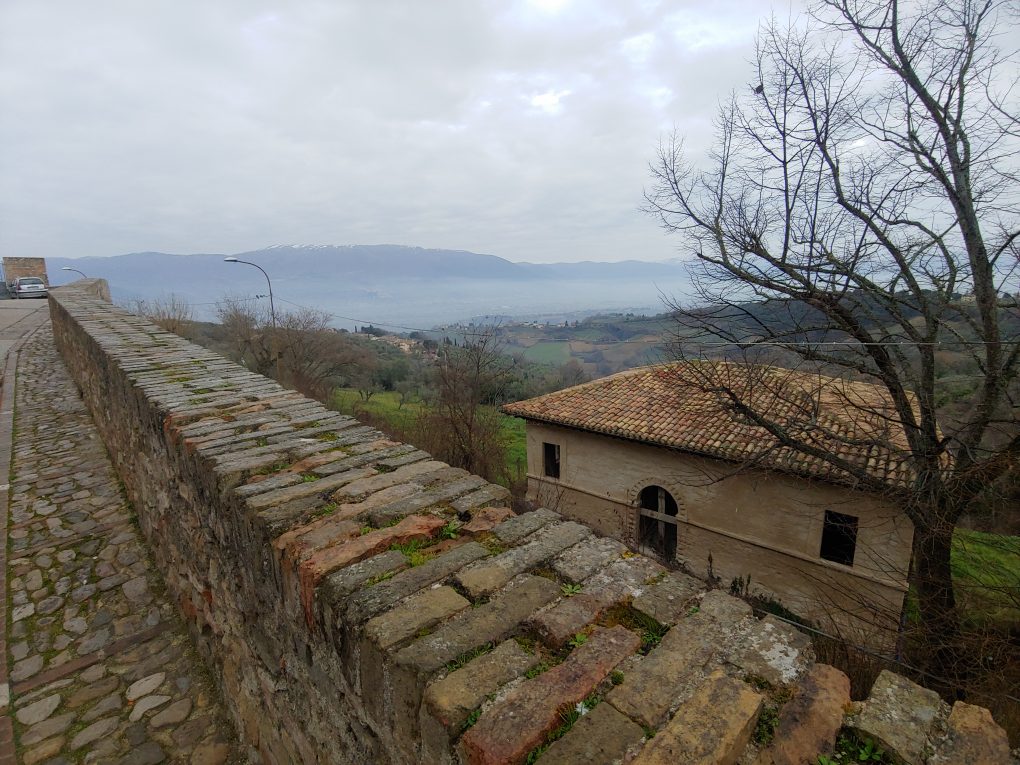
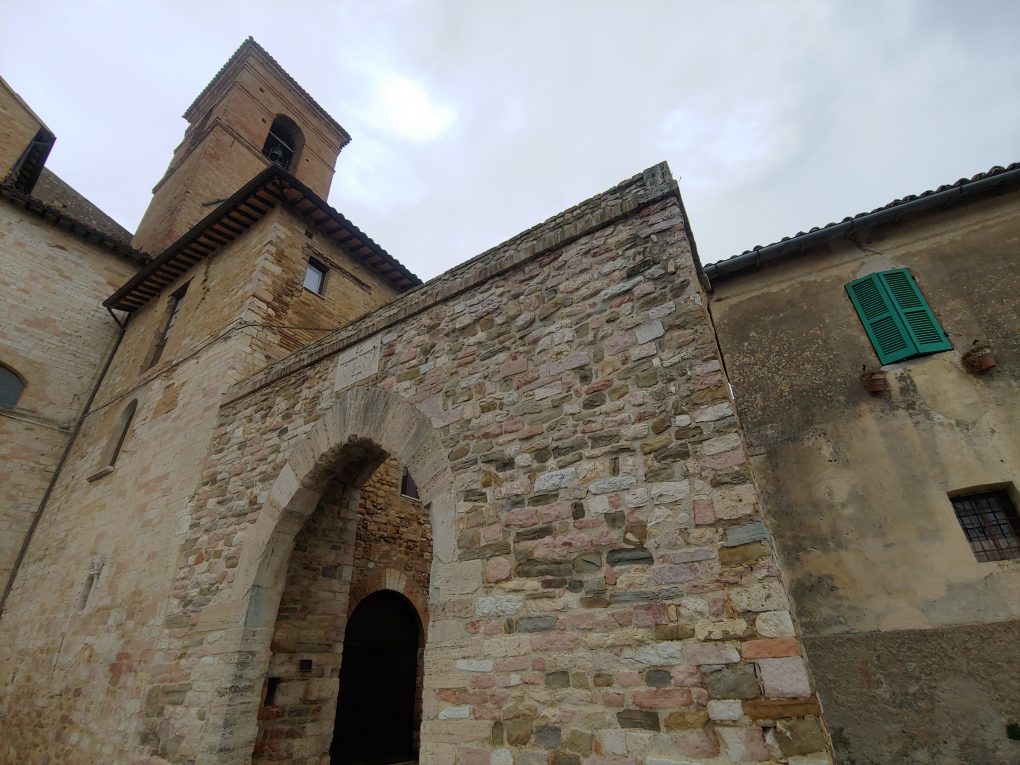

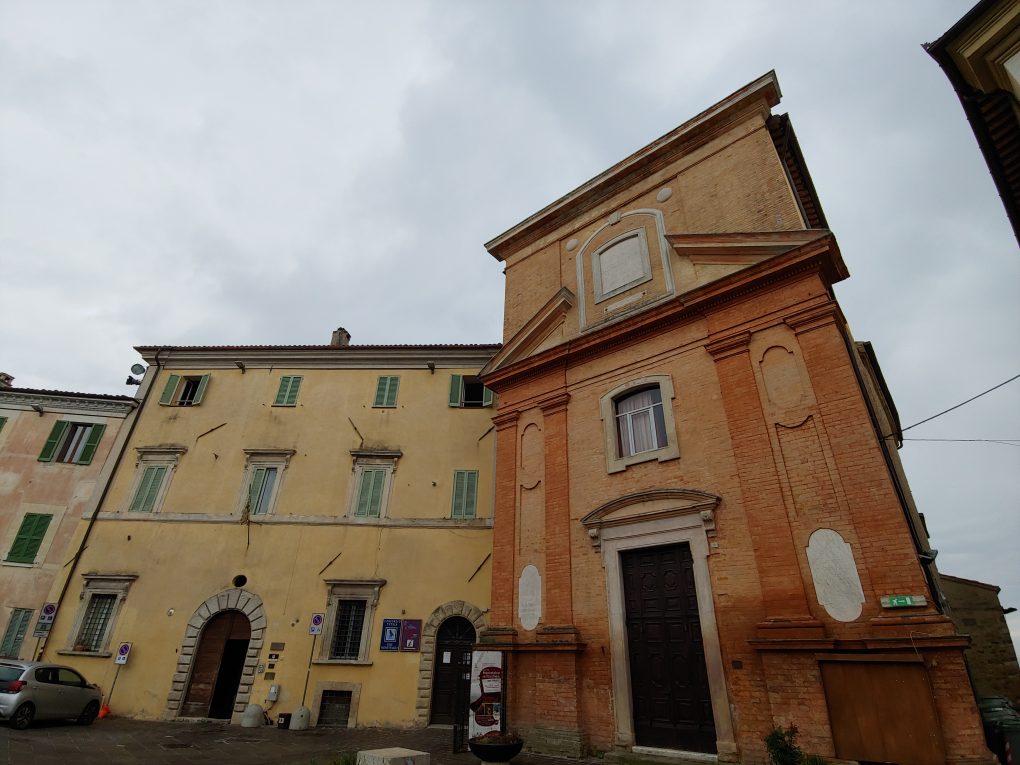
These areas are connected to each other by way of winding roads through a picturesque landscape of flowing rivers, and verdant hills and valleys dotted over with vineyards, farms, and ancient stone and Terrecotta structures dating back to the Roman, and even the Etruscan eras. It’s an adventure for any avid motorist. But if you’re from the city like me and don’t drive often, or you’re an inexperienced driver who’s just not up to the challenge, or maybe still, if you just want to sit back and enjoy the scenic ride, car companies such as “Around Umbria” that will take you, well, around Umbria. They’ll even pick you up from Fiumicino airport. If you’re trying to picture exactly where Umbria is, it might help to know that it’s contiguous to its famous winemaking neighbor Tuscany, home to the world-renowned Brunello wine made from 100% Sangiovese, arguably Italy’s most important red varietal. I say this not just to orient you geographically, but also to give you a sense of the terroir in Umbria. Since Umbria is adjacent to Tuscany, it might come as no surprise that Sangiovese is grown in much of Umbria, given the similarities the two regions share in terms of soil quality and composition, the type of climate, and other factors influencing grape cultivation. One difference between Umbria and Tuscany? The secret is out about Tuscany as a fine wine destination but not Umbria. Not yet.
Sangiovese is an important grape throughout Italy, and no less so in Umbria. In fact, Umbria is home to a number of wine grapes that are grown in different parts of Italy including Malvasia, Montepulciano, and Canaiolo, among others, as well as international varietals such as Chardonnay, Merlot, and Cabernet Sauvignon. But autochthonous grapes are also cultivated in Umbria, and these varietals are the pride of the region. They are Grechetto di Orvieto, Trebbiano di Spoletino, Sagrantino, and Trasimeno Gamay. Here’s a brief overview of the origin, characteristics, and flavor profile of each autochthonous varietal.

Grechetto di Orvieto
This white varietal is grown throughout Umbria and particularly in the hilltop area of Orvieto in Terni province. Orvieto accounts for about 80% of total wine production in Umbria. Grechetto is a naturally aromatic, relatively low-yielding grape, and evidence of its cultivation in Umbria dates back to the time of the Etruscans. Grechetto is frequently blended with other regional white varietals such as Procanico (Trebbiano Toscano), Malvasia Bianca, and Canaiolo Bianco to make Orvieto and Orvieto Classico wines. Orvieto production is chiefly concentrated in Orvieto, Viterbo province in Lazio, and the area around Corbara Lake. Orvieto DOC regulations dictate that a wine made in these areas can qualify as a DOC only if it is comprised of a maximum 60% Grechetto or Procanico (or a combination of these two varietals), with other DOC permitted regional grape varieties such as Malvasia Bianca, Verdello, and Drupeggio (Canaiolo Bianco) (or a combination of these grapes), making up the rest of the blend.
Procanico is an inherently acidic grape, while Grechetto possesses a naturally rich and complex, floral and fruity flavor profile, highlighted by grassy, herbaceous, and nutty elements. The combination of these two varietals tend to produce wines that have a refreshing acidity and exhibit summer fruit-dominant flavors.
Orvieto are characteristically light and crisp, with a balanced acidity, refreshing aromas of white flowers, and citrus and orchard fruit, and notes of ripe lemon, apple, and peach, coupled with a delicate nuttiness and minerality. Orvieto with greater concentrations of Grechetto tend to be richer and more complex given the inherent qualities of the grape. As a result, many producers have been making single-varietal wines using 100% Grechetto, and discovering that this varietal produces highly age-worthy wines that take on greater roundness and weight with time.
Grechetto di Todi (also known as Pignoletto), is a white varietal with its own DOC in Emilia-Romagna, that is often blended with Grechetto di Orvieto. This grape is fuller, richer, and less acidic than its counterpart. A blend of the two sub-varieties results in wines that reflect the best qualities of each grape.
International varietals such as Sauvignon Blanc, Chardonnay and Riesling are also cultivated here, but they, and other non-regional grapes, are classified as Indicazione Geografica Tipica (IGT), to differentiate them from DOC wines.
Orvieto was originally produced solely as a dolce (sweet) wine. Procanico grapes were left to botrytize in tufo rock caves after being harvested to promote the development of muffa nobile (noble rot). The introduction of this fungus would partially dessicate the grape, thereby increasing its sugar concentration. Wines produced from these grapes tend to have a silky, almost glycerin texture, give off beautiful floral and herbaceous aromas, and exhibit luscious ripe and candied citrus and orchard fruit, as well as honey and acacia notes. The dolce, along with an abboccato (semi-sweet) version, are now produced in years when harvests are considered exceptional.

Sagrantino
A thick and dark-skinned, late ripening, and low yield red grape grown almost exclusively in the hilltop town of Montefalco and parts of Perugia. Most of the around 400 hectares of vineyards that are dedicated to the cultivation of Sagrantino are situated at about 700 to 1500 feet above sea level. The climate is characterized by cold winters, hot summers, cooling breezes coming down from the Apennine mountain range, and moderate rainfall, as well as a considerable difference between day and nighttime temperatures.
Sagrantino’s origins in Umbria can be traced back to as early as the 16th century, when it was used for religious services. In fact, its name is said to have been derived from its use in the performance of the sacrament. Sagrantino wine was primarily made for this purpose for centuries. It was produced solely as a passito during this time.
Passito is a sweet wine that is derived from drying the grapes to some extent before processing them. Sagrantino is a structured, full-bodied, and tannic grape, with flavors of concentrated dark berry and black stone fruits, sweet spice, and earth. Meticulous cultivation and processing results in wines that bring out the lush fruit flavor profile of this grape, along with aromas and notes of spice, wood, and chocolate. Montefalco area winemakers might choose to age Sagrantino in stainless steel or concrete tanks to retain its acidity, and highlight its fresh dark fruit profile. They may also age the wine in second or third-use large oak barrels or tonneaux, as opposed to new French oak barriques, to soften the robust tannins that are naturally present in Sagrantino. Aging in used or neutral wood also adds roundness and complexity while minimizing the risk of making a wine that is excessively oaky, or overpowering. Montefalco Sagrantino was granted DOC status in 1979. It received DOCG status in 1992. Sagrantino can be made as a Rosso (still red) or a Passito (sweet wine made from semi-dried Sagrantino). Both the Montefalco Sagrantino Rosso and the Montefalco Sagrantino Passito must contain 100% Sagrantino that has been aged for at least 37 months in order to qualify as a DOCG. Moreover, the Rosso must have undergone at least a year of aging in barrel, followed by a minimum of 4 months of aging in the bottle. Many producers age their Sagrantino beyond the required timeframe.

Trebbiano Spoletino
A late-ripening, acidic, white varietal that is grown almost exclusively in the farmlands surrounding the city of Spoleto (hence the name), as well as Montefalco. Around 60 hectares of vineyards are dedicated to the cultivation of Trebbiano Spoletino. The area was granted a DOC in 2011 for sparkling, still, and sweet wines comprised of at least 85% Trebbiano Spoletino. Trebbiano Spoletino has been planted in these areas since the 1800s, using the Vite Maritata and Alberata vine training systems. These methods, (dating back to the Etruscan era), involve connecting grape vines to maple trees to support the upward growth of the vines. In the Alberata system, wires are run across pairs of maples “married” to vines, to enable the overhead growth of vines between them. Both systems usually yielded a lot of grapes, but they tended to be of lesser quality.
When global demand for finer quality wines increased sometime in the mid-twentieth century, these ancient vine training systems were largely replaced by the pergola, the spur cordon, the guyot, and other more modern methods that produced lower yields, but higher quality grapes.
Trebbiano Spoletino production fell to almost zero by the 1970s until renewed interest in the autochthonous varietal emerged 20 years later. Crafting Trebbiano Spoletino in all styles using both ancient and modern vine training methods has been increasing steadily along with the popularity of the grape. Single-varietal
Trebbiano Spoletino best showcase what this grape has to offer. Trebbiano Spoletino runs the gamut of flavor profiles. It can give off floral, grassy and herbaceous, as well as citrus, orchard, and tropical fruit aromas, and exhibit ripe lemon, grapefruit, apple, and white peach, as well as papaya, lychee, basil, and lemongrass, along with white and yellow flower notes. It can also demonstrate a bright and balanced acidity, a delicate crispness, and a soft minerality. It’s typically produced as a still white wine, but it’s also fantastic when it’s made as both a Spumante and a Passito. There are a lot of Trebbianos out there, including Trebbiano Toscano, and Trebbiano d’Abruzzo (a reputable grape in its own right), but don’t let the name fool you, because they’re not the same.

Trasimeno Gamay
A red varietal grown almost exclusively in the areas surrounding Lake Trasimeno, including the municipalities of Castiglione del Lago, Magione, Paciano, Panicale, Tuoro sul Trasimeno and Passignano sul Trasimeno, as well as portions of Citta della Pieve, Corciano, Perugia, and Piegaro. Lake Trasimeno is located in Perugia province. It borders the River Tiber to the North, and Tuscany to the west, where much of its vineyards are concentrated.
These productions areas have been overseen by the Consorzio Tutela Vini Colli del Trasimeno since 1997. The organization’s aim is to establish regulations that guarantee the origin and quality of wines from Trasimeno, and increase public awareness of Trasimeno Gamay. I hate to have to say this again, but don’t let the name fool you, because Trasimeno Gamay is actually not a Gamay. It’s a Grenache (Garnacha in Spanish). So why the deceptive appellation? Well, Trasimeno Gamay was introduced to the area around the mid-sixteenth century when Italian duke Fulvio Alessandro della Corgna married Spanish marquise Eleonora Alarcòn y Mendoza, following the signing of the
peace treaty Cateau-Cambrésis that brought an end to the 65-year war between France and Spain, and reinforced Spanish rule over Italy.
The Vite Maritata vine training system was the default method of wine grape cultivation in Italy during this time. However, the vite ad alberello method, (a French technique for pruning Gamay bush vines in Beaujolais) was used instead for planting Trasimeno Gamay, Hence, the mix-up.
Now we know that Trasimeno Gamay is actually part of the Grenache family of grapes that include Cannonau from Sardinia, Granaccia from Liguria, and Tai Rosso from Colli Berici. Trasimeno Gamay has a smooth and velvety texture, and soft tannins. It typically gives off luscious aromas of red and dark berries, black cherries, and mocha, and bright notes of ripe raspberries, blueberries, and blackberries, along with dark chocolate.
Trasimeno Gamay may be produced as a single varietal, or as a blend, with permitted varietals that include Sangiovese, Ciliegiolo, Pinot Noir, and Cabernet Sauvignon, among others. The dominant grape in the wine, as well as the type of blend, determines the labeling. Trasimeno Gamay can be produced as a frizzante (gently sparkling), a still red, and a rose’.
Associations or “consorzios” have been established to oversee and regulate the origin and quality of wine production in each of these areas.

The Consorzio Tutela Vini di Montefalco represents an eclectic group of producers from Montefalco, a municipality of Perugia province, the capital of Umbria. The winemaking villages surrounding Lake Trasimeno, another municipality of this capital province, are represented by the Consorzio Colli del Trasimeno. Torgiano, a municipality lying roughly six miles from Perugia, is another notable wine production area.
In fact, Torgiano was the first winemaking area in Umbria to be granted Denomination of Origin (DOC) status by the Italian Wine Commission in 1968. It’s represented by the Consorzio Tutela Vini di Torgiano.
Wines produced in Orvieto, a municipality located in the neighboring province of Terni that is known for its crisp and fruit-driven white varietals, are presided over by the Consorzio Tutela Vini di Orvieto. Each commune makes wines from autochthonous, regional, and international varietals that best reflects the terroir. Nevertheless, each area is an inextricable part of Umbria, and its producers are collectively committed to promoting global awareness of Umbrian wines as a whole. In a way, it’s like the Roman Empire way back when, bringing the independent city states together, and uniting them for one common purpose.
Some of these wineries produce over a million bottles annually, while others, a few thousand. Big or small, every producer strives towards their own best possible interpretation of the varietals in their area. Many are also working farms. Sheep and Chaiana cattle grazing in open pastures, and olive groves, fruit orchards, and bean and grain fields thriving alongside vineyards, help to maintain the natural ecosystem. Preserving the environment is top of mind among Umbrian winemakers, and the use of chemical fertilizers and pesticides is kept to a minimum and employed only when absolutely necessary at some wineries, while others have banned their use entirely.
Instead, natural fertilizers, as well as ecologically-friendly pest control methods are employed including the introduction of bee, ladybug, and other insect species to prey on those that harm vines. Producers also plant different flower species among the vines to help irrigate the soil during particularly dry or hot growing seasons.
The presence of flowers in vineyards also promote pollination and aid in keeping unwanted insects at bay. These and other natural processes are effective while posing little to no threat to an environment already negatively affected by climate change.

According to Lorenzo, proprietor of Montegiove, a venerable winery perched 500 meters (asl ) on an impressive estate in Orvieto that I will talk more about later in this article, Italian winemakers, (unlike their French counterparts), didn’t record the dates of their vintages as a conventional practice until well into the mid-twentieth century. He showed me an old family wine ledger to illustrate this point. Wines were labelled as “old” without any reference to specific dates, while a much more recent ledger clearly documented the vintage year of every wine on record.
Producers can ferment in stainless steel or concrete tanks, oak casks or barrels, or clay or amphora vessels, depending on the grape, and the style they envision for the particular wine they are trying to make. But their collective aim is to preserve the grape’s natural properties, be it the fresh acidity and minerality, and floral, citrus, and orchard fruit, as well as honey and grassy elements of autochthonous white varietals such as Grechetto and Trebbiano di Spoletino, or the juicy berry and dark fruit, chocolate, and earth, as well as the herbaceous character of the Sagrantino, or the floral, and rich mixed berry and black fruit profile of Trasimeno Gamay. Winemakers might round out the acidity of the Grechetto, or soften the edges of the naturally tannic Sagrantino. They may also enhance one inherent flavor characteristic, while making another more subtle. But the goal here is to make wines that reflect the identity of the grape and the terroir that gave birth to it, so that a wine made with 100% Sagrantino tastes like a Sagrantino and not say, a Cabernet Sauvignon, a Trebbiano Spoletino, a Trebbiano Spoletino, and not a Sauvignon Blanc, a Grechetto, a Grechetto, and not a Chardonnay, and so forth.
I made my way to Orvieto immediately after arriving in Italy. The ancient city of Orvieto has a 3000-year old history dating back to Etruscan times. It’s situated at the summit of a limestone and volcanic rock cliff, some 300 meters (asl). It was early afternoon by the time I landed in Rome, so I made my way to the wineries first because the best time to go wine tasting is during the day when they’re open, and when you can actually see the vineyards.

I visited two wineries that afternoon. We ascended some 450 meters (asl) to Tenuta Vitalonga, (“vita longa” meaning “long life,” was Luigi Maravalle’s toast of choice to welcome each new vintage), is an organically-certified winery that has belonged to the Maravalle family since 1952.
The winery is located on the slope of a hill in Ficulle, a municipality situated on the western border between Umbria, Lazio, and Tuscany. The south-facing sand and clay soil-dominant vineyards, surrounded by woods and ravines, stand at elevations between 450 and 350 meters (asl). A persistent, gentle breeze sweeping over the vineyards, hot and dry summers, moderate rainfall in autumn and winter, and a large day-to-nighttime temperature differential, naturally aerate the vineyards and provide good drainage, eliminating the need for chemical-based pesticides.
The Italian varietals Sangiovese and Montepulciano, and the international grapes Chardonnay, Merlot, Cabernet Sauvignon, and Cabernet Franc are grown on the clay (upper elevations), and sand (lower elevations) dominant-soil. The Tenuta Vitalonga portfolio consists mainly of red wine in a territory known primarily for Orvieto, the white blend of Procanico, Grecchetto, and Malvasia Bianca that bears the name of its production area. Why? According to Gianluigi and Pierfrancesco Maravalle, two brothers who run the winery with their parents, Fabio and Gigliola, winemaking is about the terroir, and the land in Vitalonga is best suited for cultivating these varietals.
This is in keeping with the philosophy at Tenuta Vitalonga which is one of biodiversity, and respect for the land, including the oak trees, olive groves, and dense woods that surround the property, along with its wildlife.
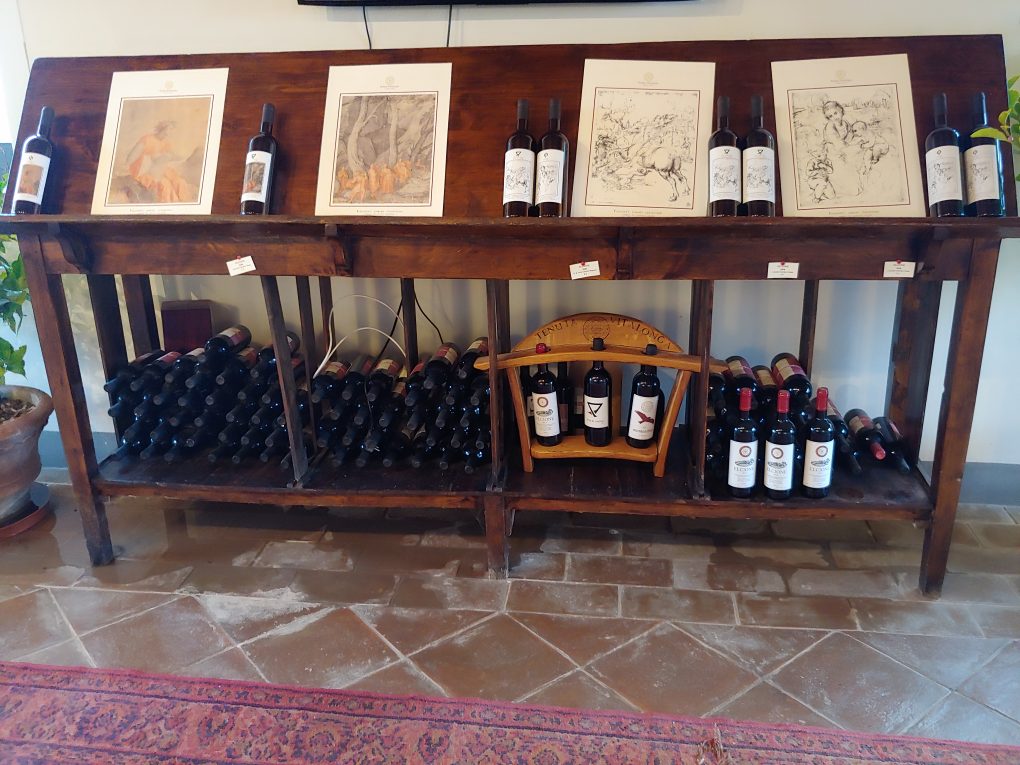
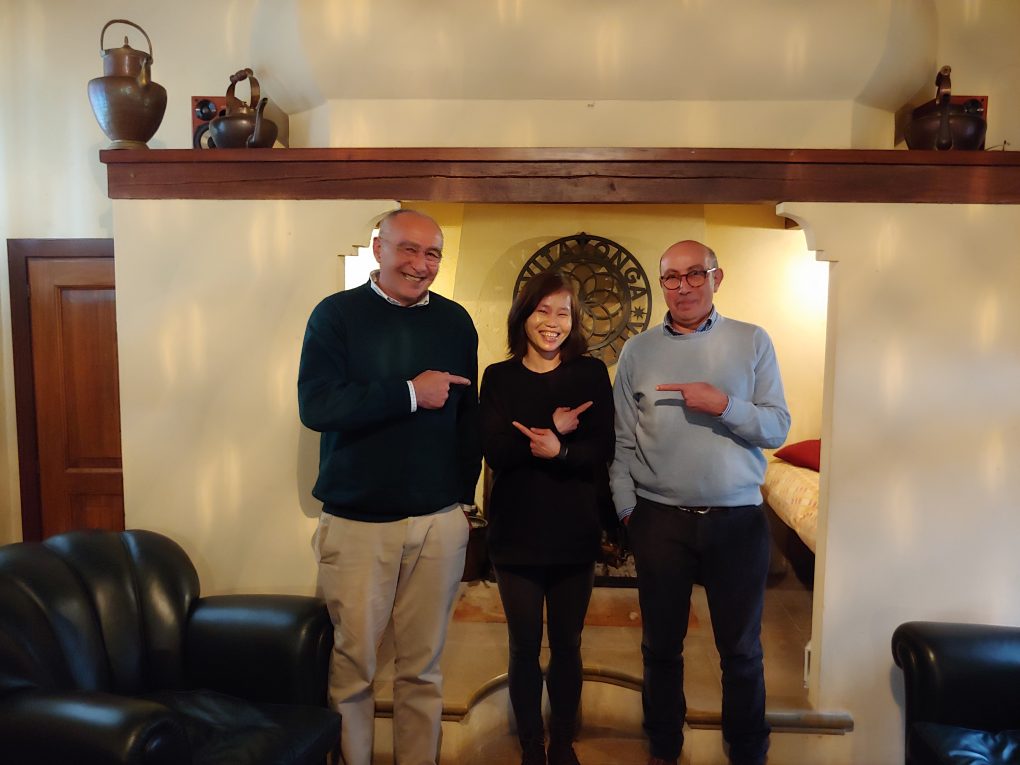
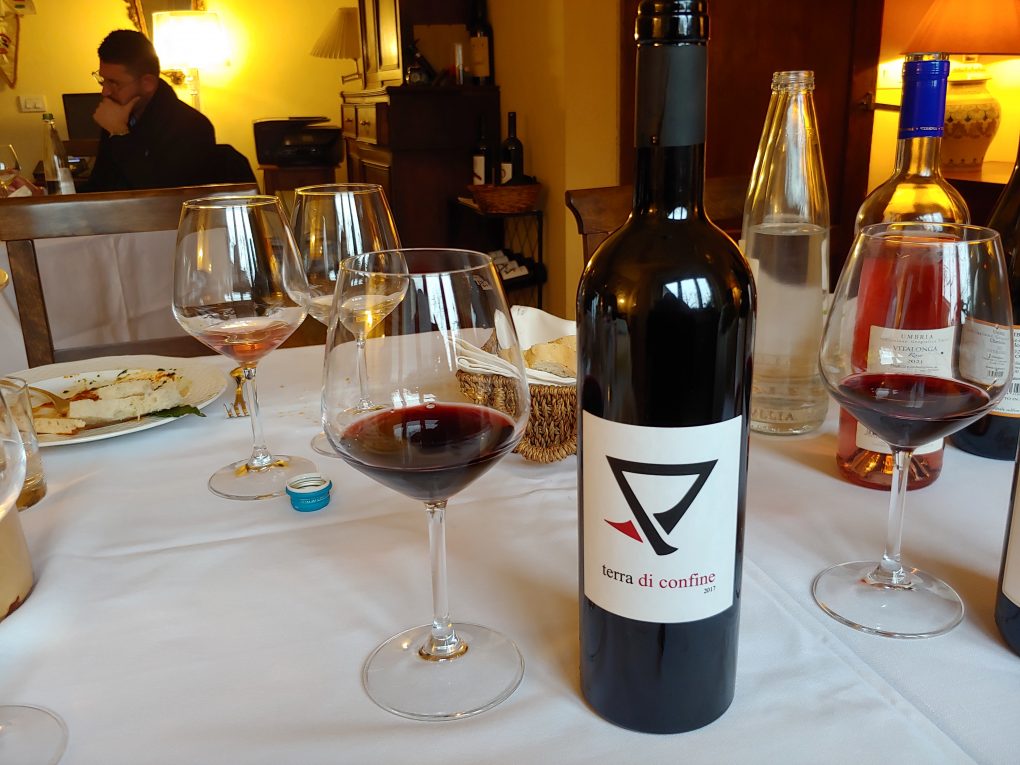
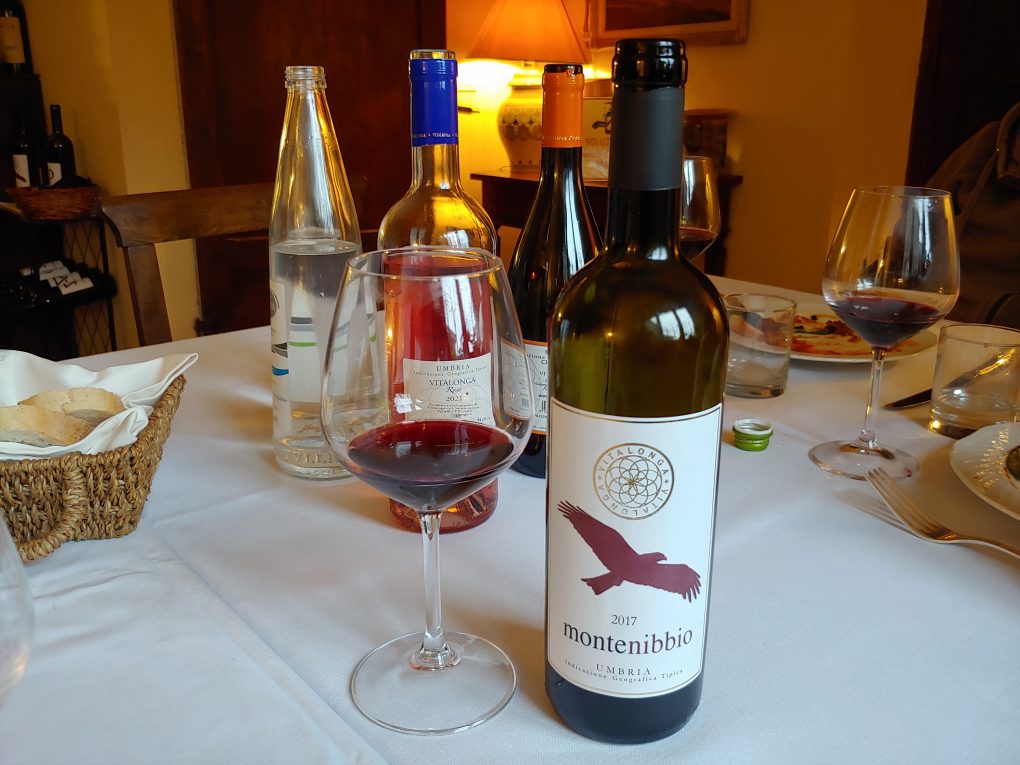
There’s a guesthouse offering a huge fireplace with an inglenook, and a swimming pool with a view looking out over the vineyards, as well as the Osteria Vitalonga serving farm-to-table Umbrian cuisine at the estate. Gianfrancesco and the restaurant’s excellent chef, prepared a fantastic three-course lunch to pair with the Tenuta Vitalonga wine portfolio. Here’s the list.
Maravalle Tenuta Vitalonga Chardonnay, Umbria IGT
Chardonnay
Fermented in stainless steel tanks
Elegant and well-structured, with a bright acidity and a complex minerality
Aromas of ripe citrus and tropical fruits, and vanilla
Notes of lemons, green apples, papayas, and butter, as well as roasted nuts
Maravalle Tenuta Vitalonga Elcione Rose’, IGT, Umbria
Blend of Merlot, Cabernet Sauvignon, and Sangiovese
Fermented in stainless steel tanks
Fresh, with salinity and minerality
Aromas of roses, grapefruits, mixed berries, and pomegranates
Notes of citrus fruits, strawberries, raspberries, and cranberries
Maravalle Tenuta Vitalonga Montenibbio, IGT, Umbria
Blend of Merlot and Sangiovese
Aged nine months in French oak barriques and six months in bottle
Soft and round, with balanced tannins
Aromas of violets, red fruits, and spices
Notes of dark flowers, mixed berries, cherries, black stone fruits, and herbs
Maravalle Tenuta Vitalonga, Terre di Confine, IGT, Umbria
Blend of Merlot and Montepulciano
Aged one year in French oak barriques and two years in bottle
Elegant and complex wine with well-rounded tannins
Aromas of preserved red fruits, raspberries, and sweet spices
Notes of ripe red and dark berries, and black stone fruits
Maravalle Tenuta Vitalonga, Phiculle IGT, Umbria
Blend of Montepulciano and Cabernet Franc
Aged 15 months in French oak barriques and two years in bottle
Refined and structured, with a full-bodied, velvety texture, and well-rounded tannins
Aromas of black cherries and stone fruits, toasted wood, balsamic, and dried herbs
Notes of mixed berries, plums, earth, and black pepper
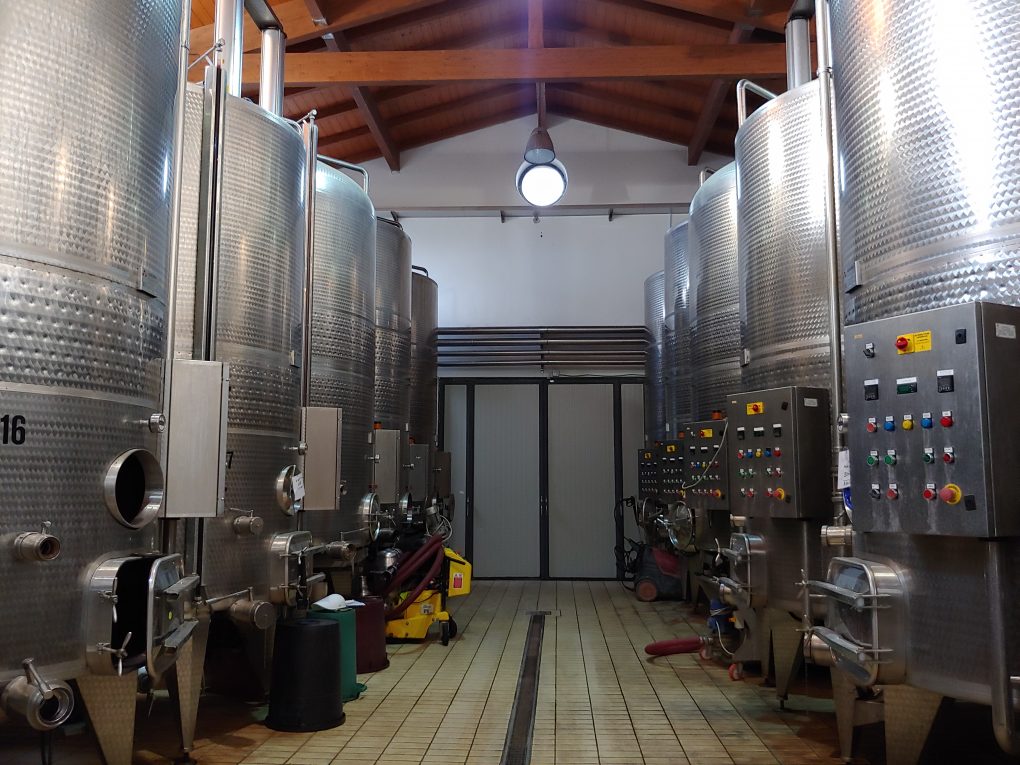
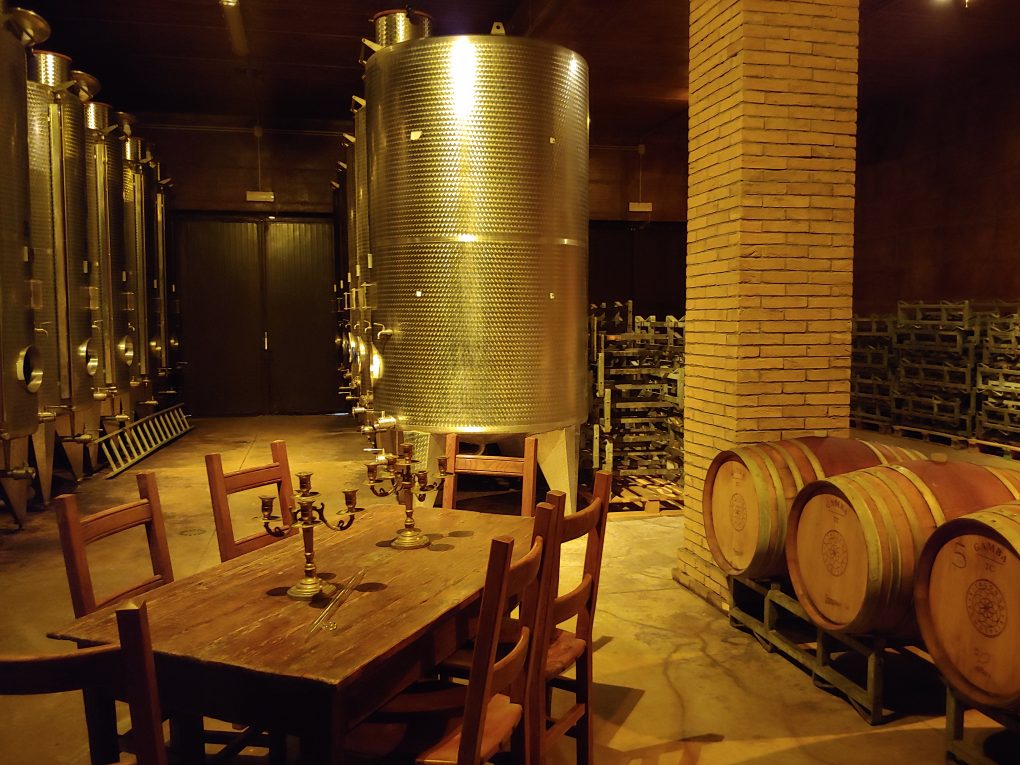
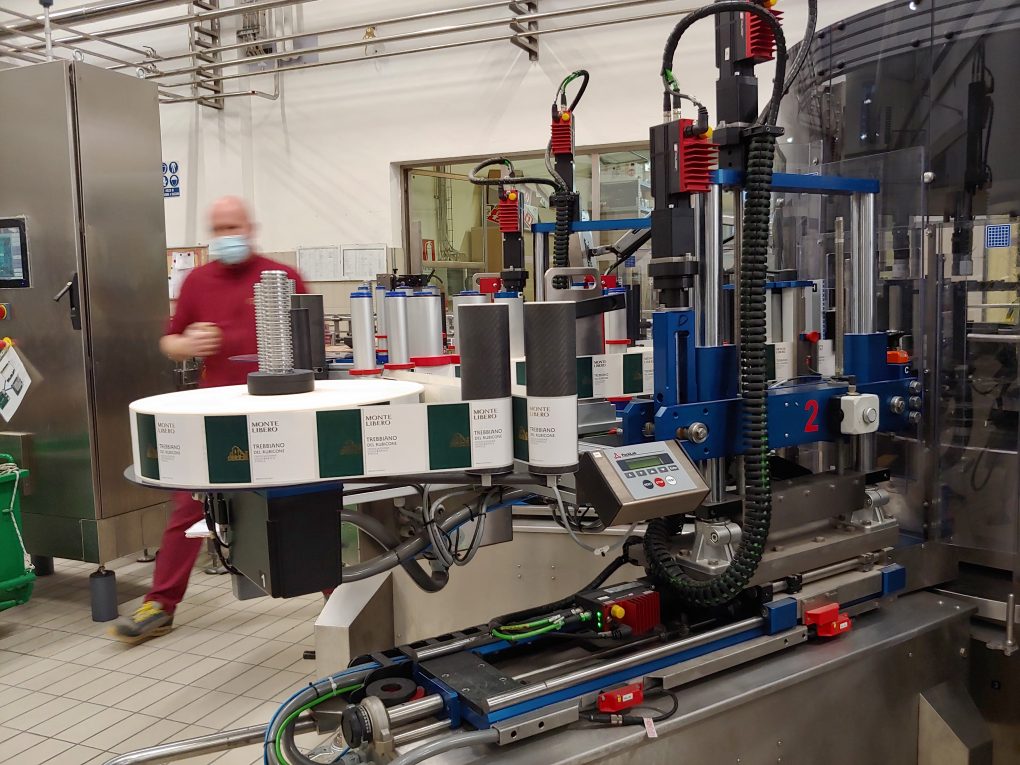
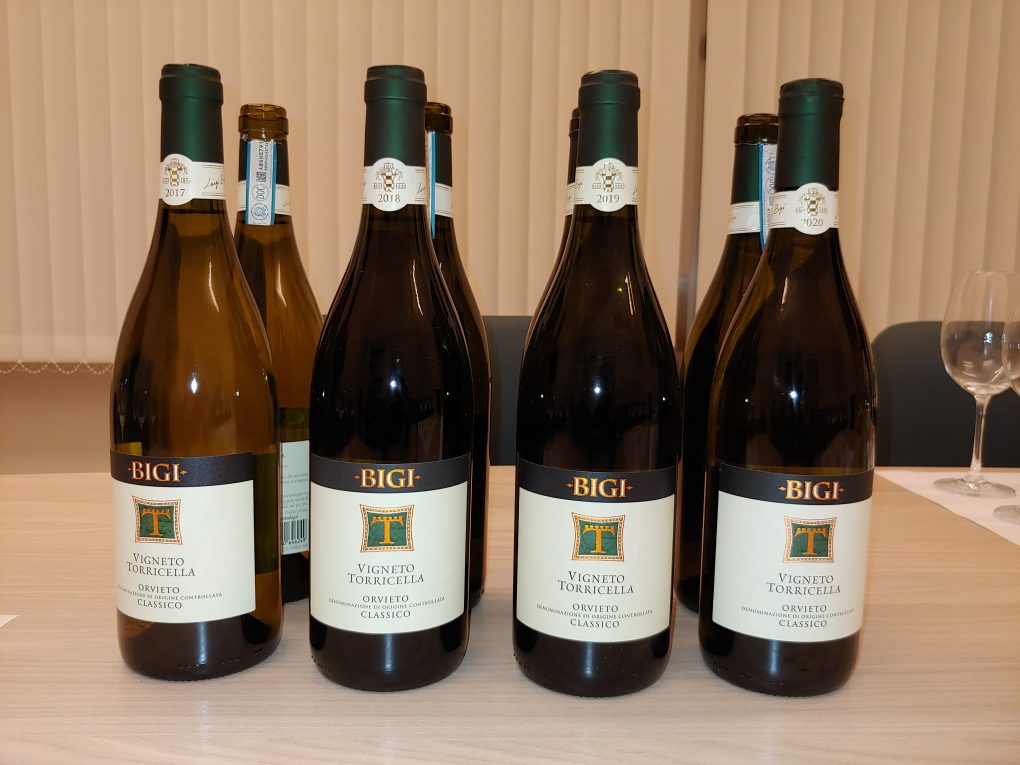
Now from a small family-owned winery, to one that’s part of Italy’s second largest corporate cooperative. Casa Vinicola Luigi Bigi winery is one of 15 wineries belonging to the Gruppo Italiano Vini (GIV) conglomerate. Conglomerates like GIV play an important role in the Italian wine industry because they not only promote and sell their portfolio of wines in the local and international market, but, as a cooperative, they also provide outlets for small growers to sell their grapes under larger labels, who would otherwise lack the resources or capacity to manufacture their own wine.
Bigi, like a number of other wineries under GIV, also make wines from grapes grown solely on their own vineyards. The history of Bigi winery extends back to 1880 when it was housed in La Trinità, a former Franciscan monastery. It now occupies a modern winemaking facility with a 30,000 hectoliter production capacity. Its 136 hectares of vineyards are situated between 150 and 450 meters (asl) within the DOC Orvieto Classico DOC zone, and more than two-thirds are dedicated to the cultivation of white varietals. Sangiovese and other regional grapes, as well as international varietals are also planted to craft rose’ and red single-varietal, and blended wines.
Paolo Nardo has been in charge of wine production at Bigi winery since 2017. He brings with him years of dedicated oenological study and training. Paolo guided me through a vertical tasting of the Vigneto Torricella Orvieto Classico Secco DOC. This wine is made from a blend of Procanico, Grechetto, Verdello, Malvasia Toscana, and Drupeggio grown on a vineyard of the same name, overlooking Lake Corbara. Lake Corbara is actually a reservoir, created in the mid-twentieth century when a dam was built at the Tiber River to generate hydroelectric power, and to prevent floods in Rome. Lake Corbara is also an important water source teeming with local fish and wildlife. Aesthetically, it accentuates an already idyllic landscape.
Tasting vintages 2017 to 2020, along with an unfiltered 2021 consecutively, revealed the breadth of flavor profiles and the aging potential inherent in this wine, as well as the influence of the terroir and the size of the yield on the quality of the grape. The 2020 vintage had weight and complexity, and exhibited aromas of white flowers, orchard fruits, and fresh herbs, and notes of green apples, apricots, peaches, and acacia. The 2019 possessed comparably muted forms of these same characteristics, due perhaps to the particularly high yield of grapes harvested that year. Fundamentally, both the 2020 and the 2019 vintages were typical examples of well-crafted Orvieto Classico. The same flavor characteristics were present in the 2018 and 2017 vintages, but additional elements including honeysuckle, jasmine, and petrol, had begun to develop, demonstrating the capacity of Orvieto Classico to evolve with age. The unfiltered 2021 was soft and light-bodied, and gave off candied fruit aromas, and notes of citrus and orchard fruits.

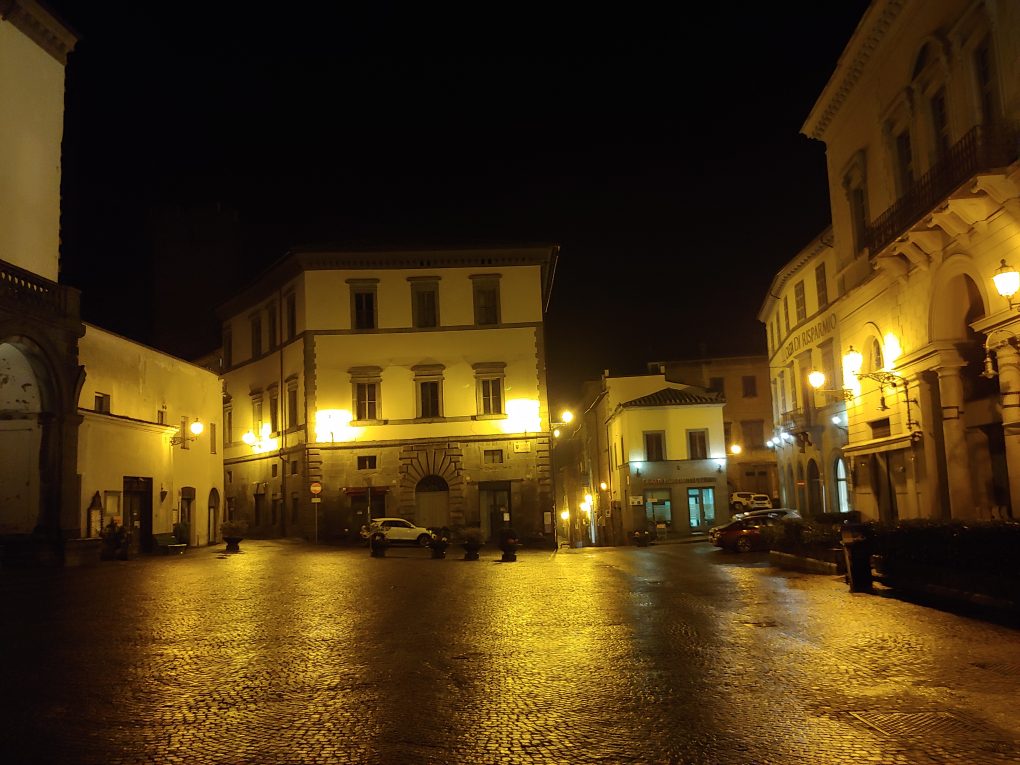


I reached the city in time for a delightful dinner with the producers of the Consorzio Tutela Vini di Orvieto at Pizzeria Charlie Orvieto.
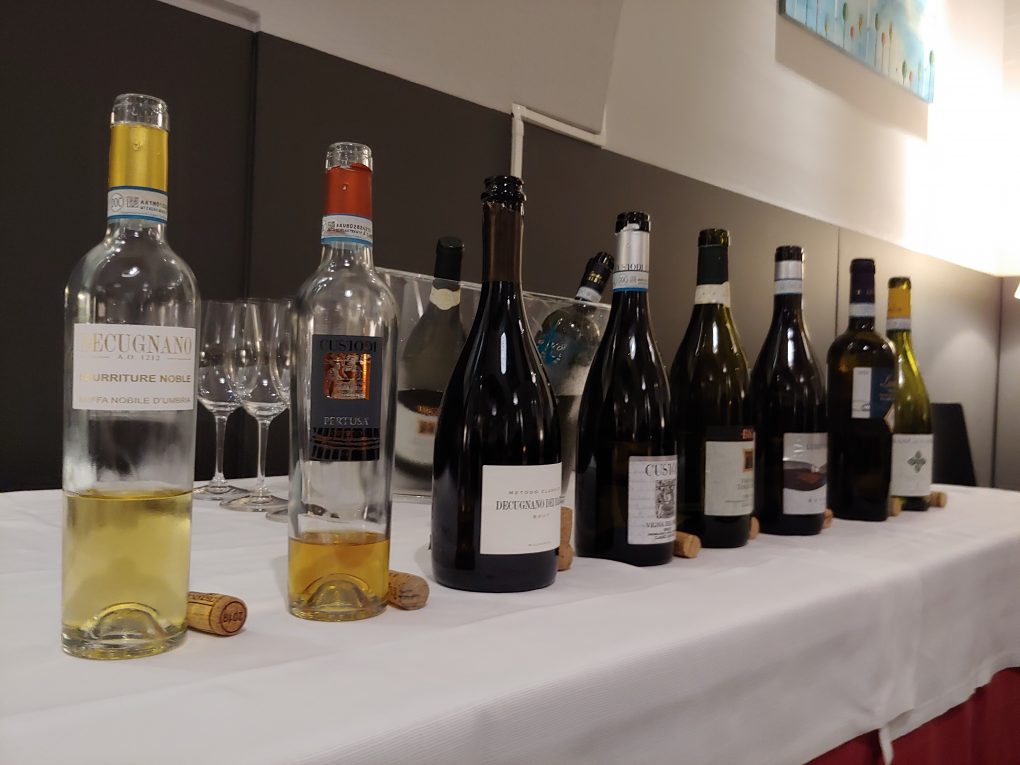
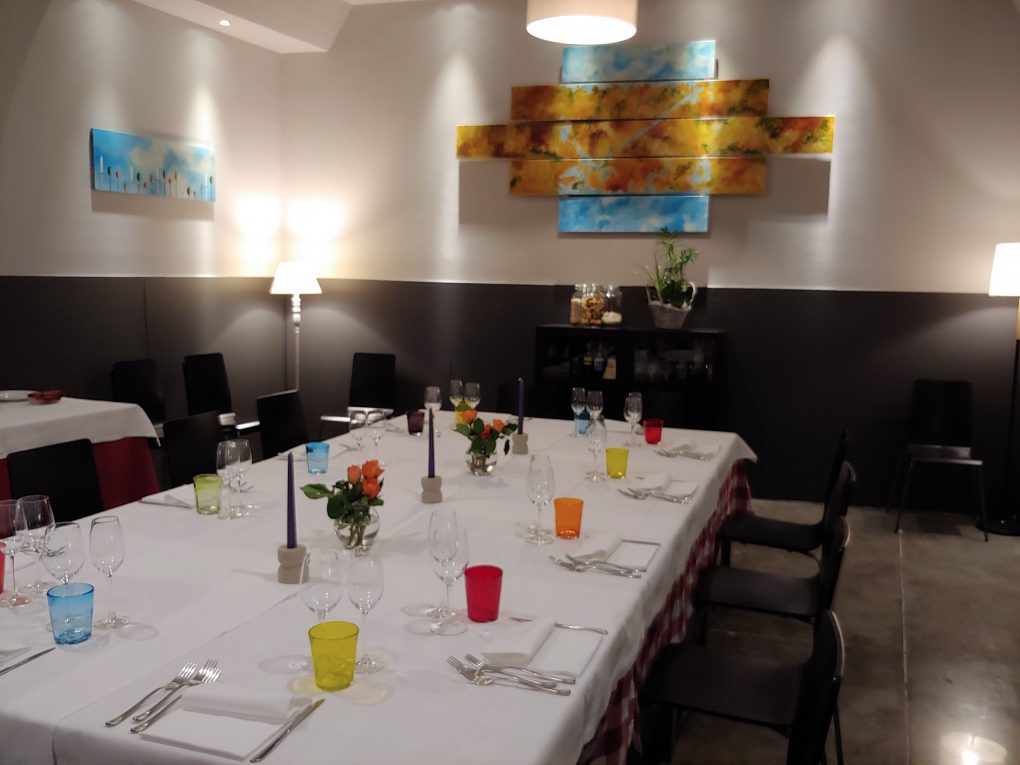
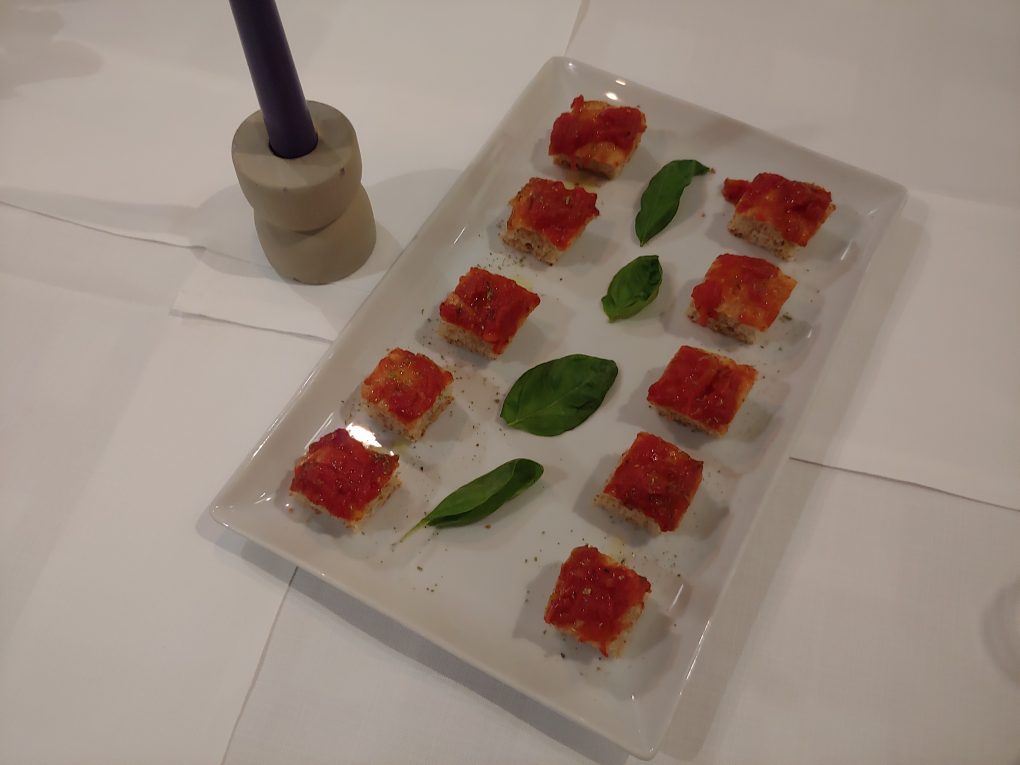

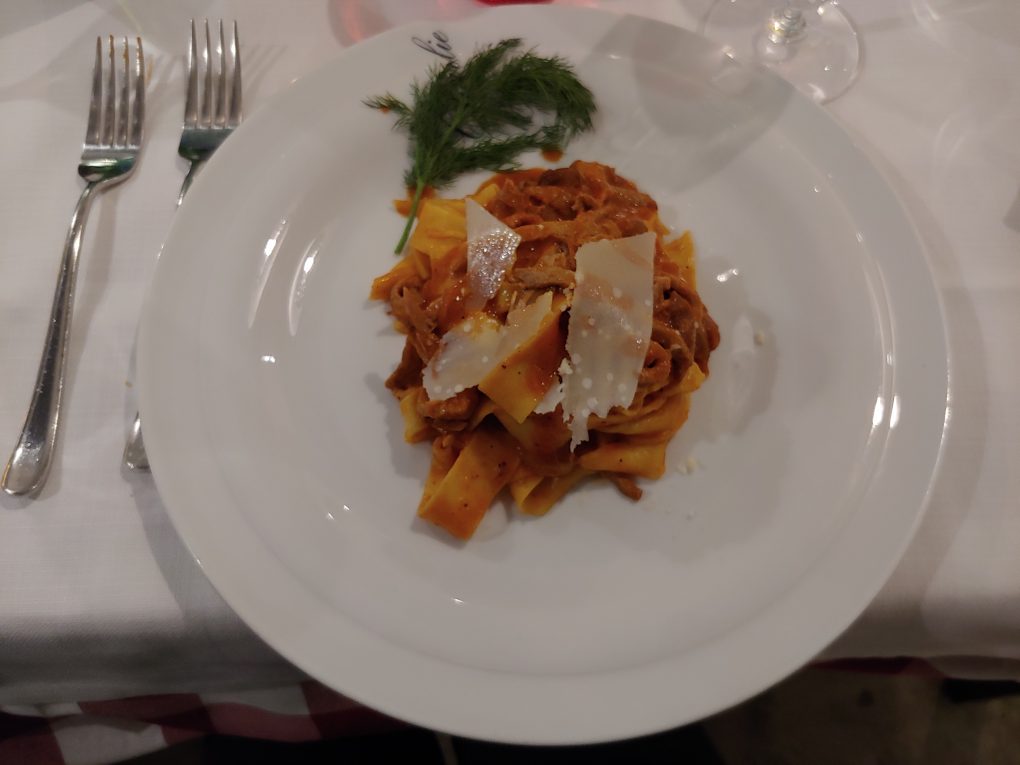
The restaurant served a multi-course meal featuring local and regional specialties, paired with a sparkling, and a number of dry white, and dessert wines from the Consorzio’s producers. It was nighttime when I emerged from the restaurant. A little rain had fallen, and fog had settled over everything. I was staying at the charming Grand Hotel Italia Orvieto, housed in a 19th century stone building, steps away from the center square in the old part of town (the modern part of Orvieto, developed hundreds of years later, is located in the valley beneath it). The hotel was only a seven minute-walk from the Duomo di Orvieto, a Gothic architectural marvel of a Roman Catholic cathedral dating back to the 14th century. I couldn’t resist taking a look before turning in for the night, so I made my way up the winding corridors lined with centuries-old buildings that, wet with rain, glimmered against the reflected light of the street lamps. The whole area seemed cast in a dreamlike glow. I remember thinking for a moment that this was just about the most romantic thing I had ever seen. Maybe it was, or else I was sleep-deprived. Either way, it was a surreal sight.
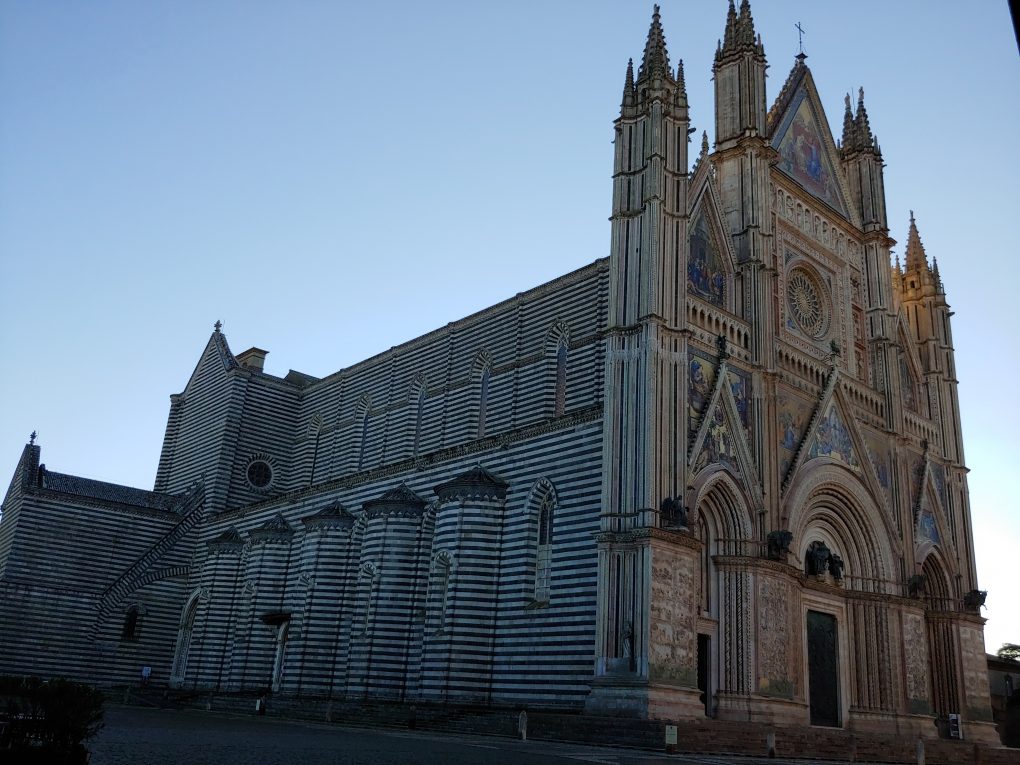
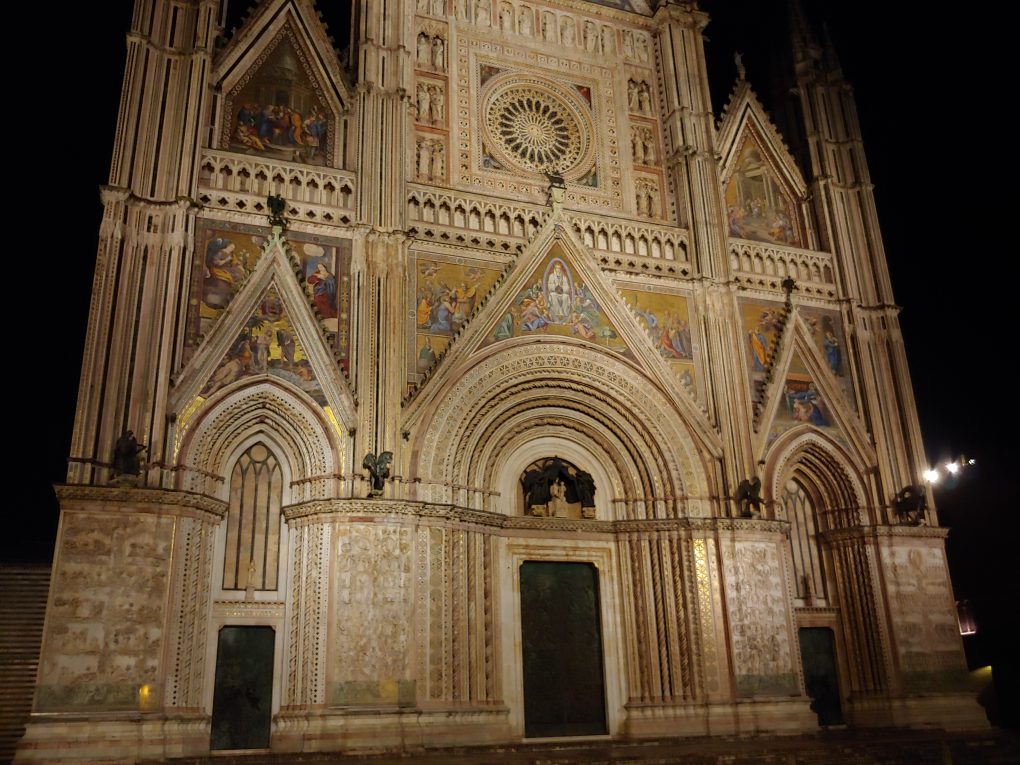
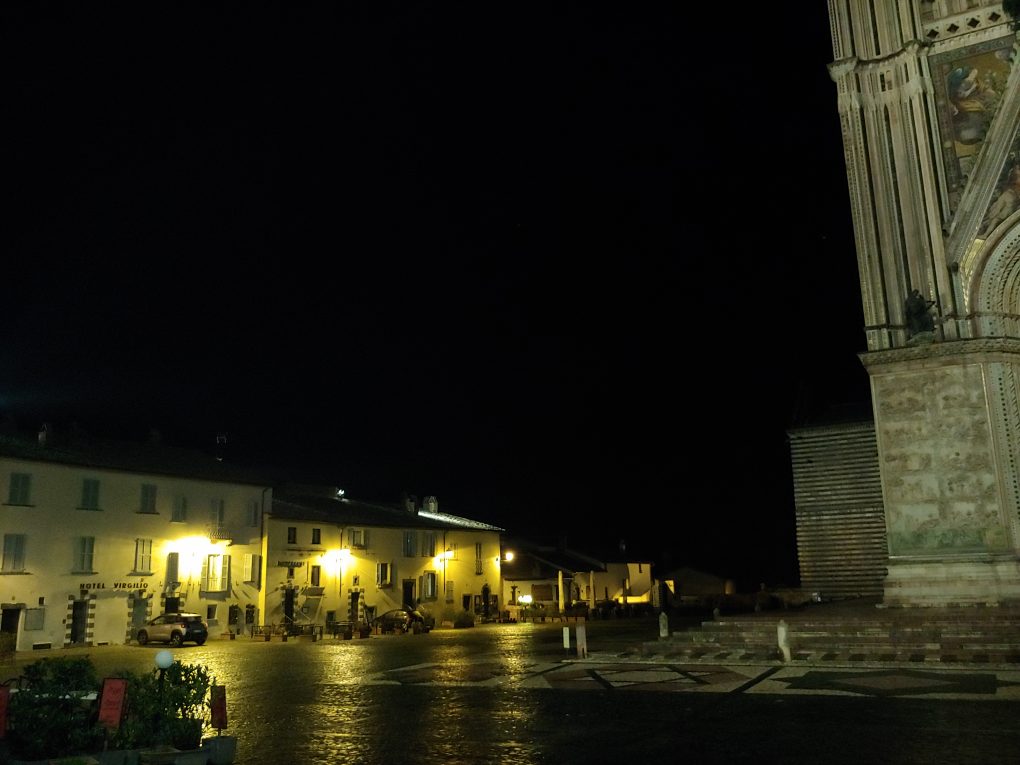
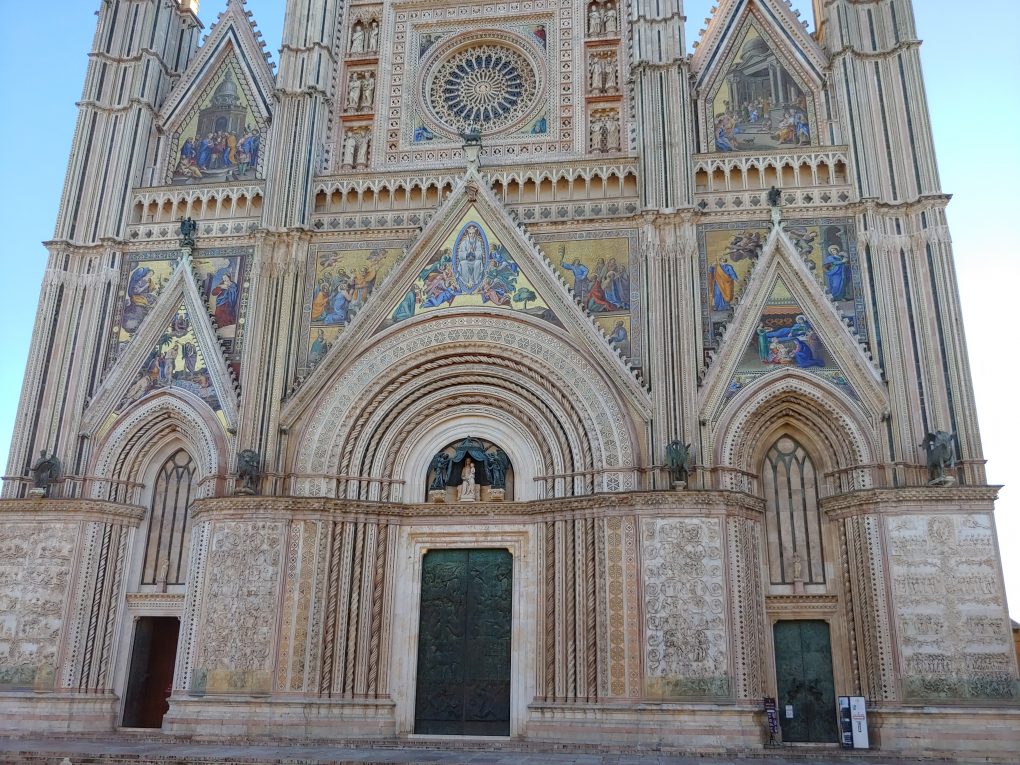
Night or day, the Duomo was a sight to behold. I returned to the cathedral the following morning. I wanted to view the frescoes begun by Fra Angelico in 1447, and completed by Luca Signorelli in 1502, at the Chapel of San Brizio. Unfortunately, the cathedral didn’t open until 10:30am. in February and I had to leave the city before then if I were to get to Cantina Castello di Corbara on time.
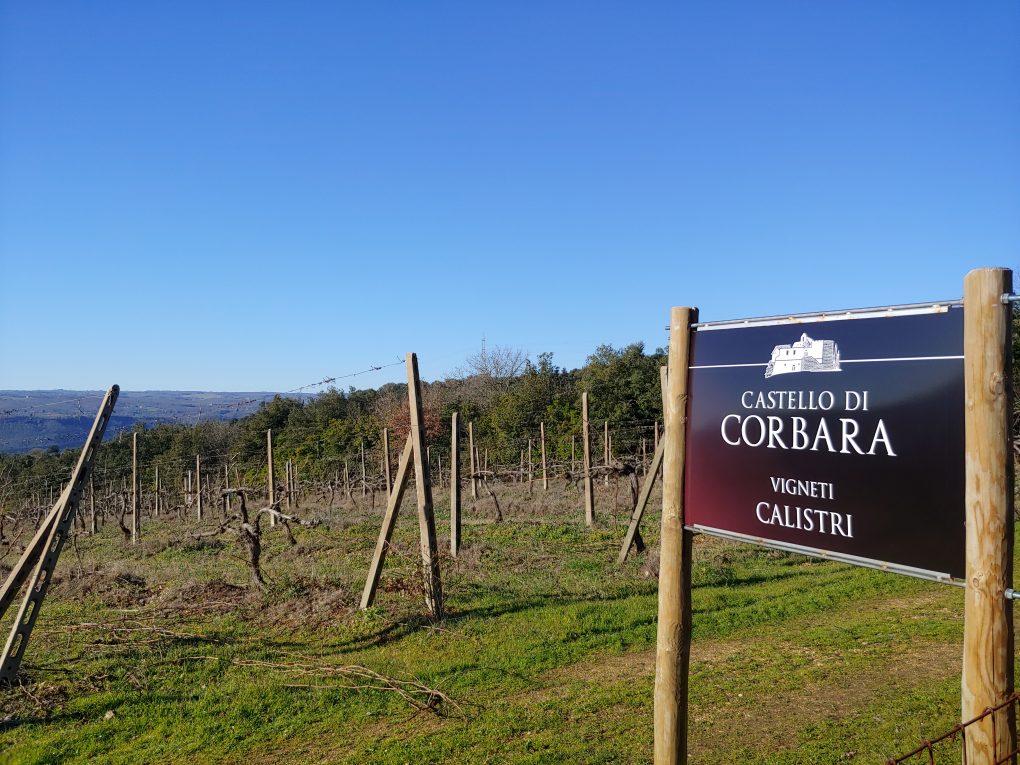
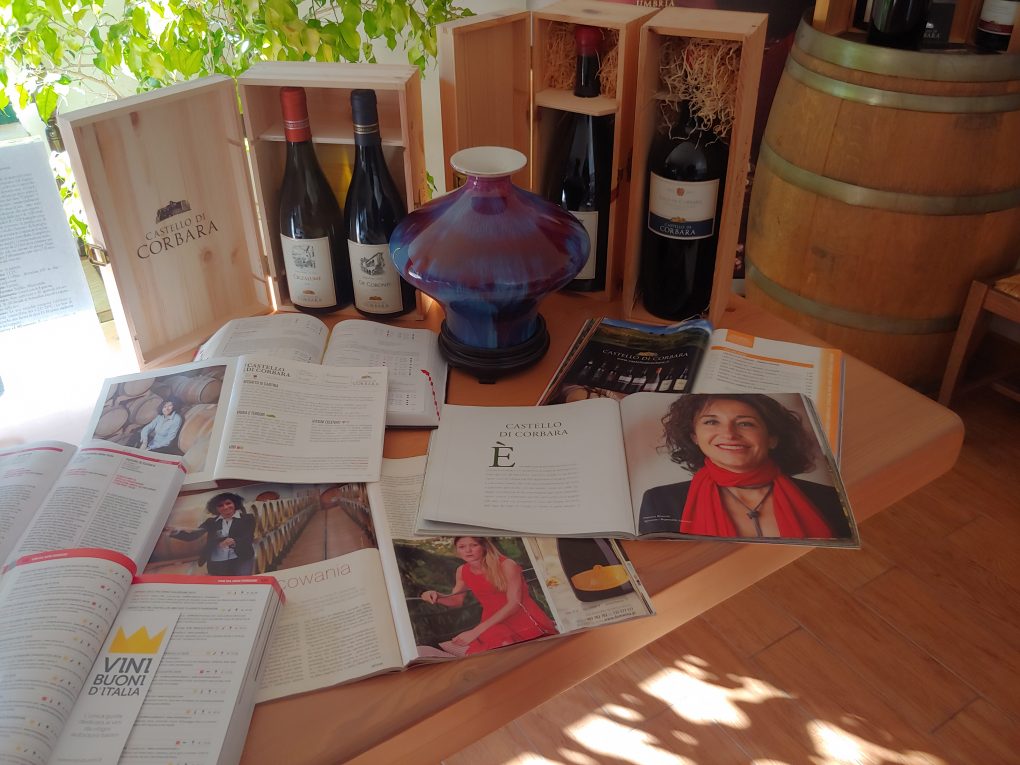

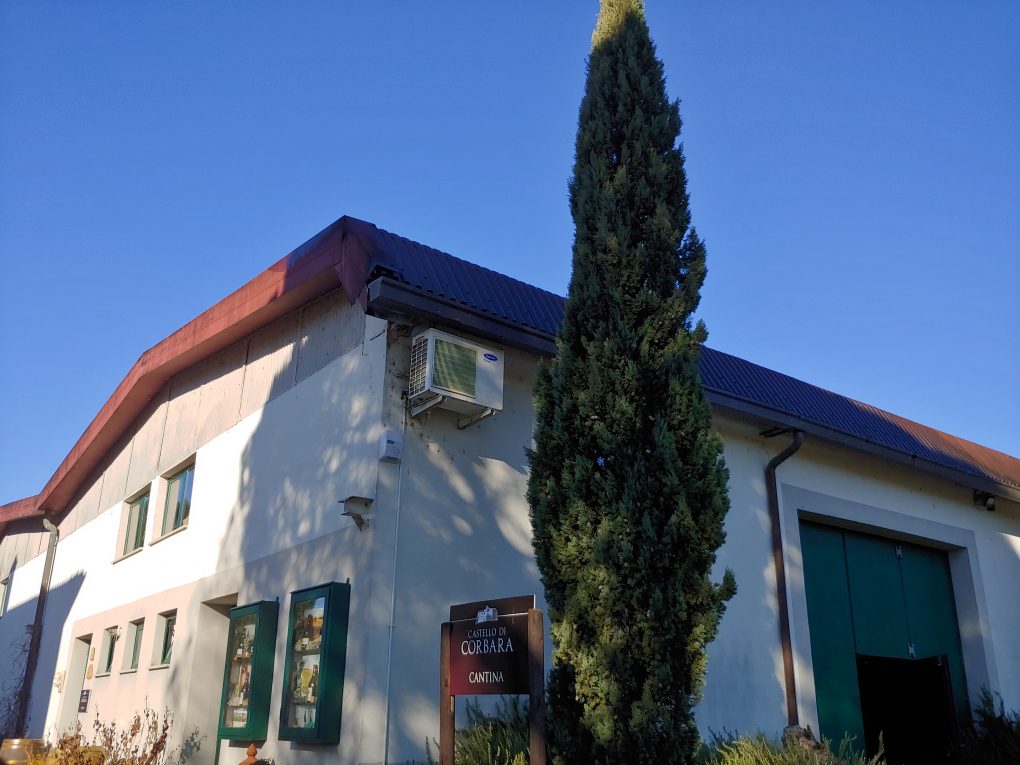
Cantina Castello di Corbara, located between Orvieto and Lodi province, and overlooking Lake Corbara, is situated on a site dating back to the Etruscan era. The Lazio family has owned this 1000 year-old estate since the 1990s. White and red autochthonous, regional, and international varietals are cultivated on the estate’s 13 vineyards. The sand, silt, and clay soil-dominant vineyards are situated between 100 to 350 meters (asl). They lie completely within the Orvieto DOC zone, allowing the white wine blends made from autochthonous and regional varietals grown in these vineyards to be labelled Orvieto Classico DOC, and Orvieto Classico Superiore DOC. The winery produces single-varietal wines, as well as blends. Grapes are handpicked and vinified separately, and every care is taken to minimize the use of machinery and chemicals throughout the winemaking process. Here are some notes and highlights about a selection of the wines I tasted at Cantina Castello di Corbara.
Castello di Corbara Orvieto Classico Superiore DOC
Blend of Grechetto, Procanico, and Malvasia Bianca
Fermented in stainless steel tanks
Crisp, with a balanced acidity, and a refreshing minerality
Aromas of fresh white flowers, and citrus and orchard fruits
Notes of green apples, pears, and apricots, as well as acacia, and almonds
Castello di Corbara Grechetto, IGT Umbria
Grechetto
Fermented in stainless steel tanks
Well-balanced, with good weight, a soft acidity, and a delicate minerality
Aromas of chamomile, honeysuckle, orchard fruits, and nuts
Notes of white flowers, green apples, peaches, and grass
Castello di Corbara Orzalume Grechetto Sauvignon, IGT Umbria
Blend of Grechetto and Sauvignon Blanc
Fermented in stainless steel tanks, and aged five months in French oak casks and four months in bottle
Well-rounded, with a soft acidity and a pleasing minerality
Aromas of ripe citrus and orchard fruits, and sweet spice
Notes of lemons, oranges, and apples, as well as peaches and vanilla
Castello di Corbara Lago di Corbara DOC
Blend of Sangiovese, Merlot, and Cabernet Sauvignon
Fermented in stainless steel tanks, and aged one year in Slavonian oak barriques and five to six months in bottle
Well-balanced, with good weight, a soft acidity, and a delicate minerality
Aromas of chamomile, honeysuckle, and orchard fruits, along with nuts
Notes of white flowers, green apples, and peaches, along with grass
Castello di Corbara, Sangiovese Merlot, IGT Umbria
Blend of Sangiovese and Merlot
Fermented in stainless steel tanks, and aged three to five months in French oak barriques and Slavonian oak casks
Well-rounded, and full-bodied, with smooth tannins
Aromas of red and dark berries, plums, and vanilla, as well as mocha
Notes of raspberries, blackberries, and plums, as well as roasted chestnuts, and tobacco
Castello di Corbara, Calistri, Lago di Corbara
Sangiovese harvested from a 50 year-old vineyard
Fermented in stainless steel tanks, and aged 16 months in French oak barriques and seven to nine months in bottle
Silky and smooth texture, with a good acidity, and soft tannins
Aromas of dark flowers, ripe red and black fruits, and tobacco, along with licorice
Notes of violets, cherries, and mixed dark berries, along with oak and dried herbs
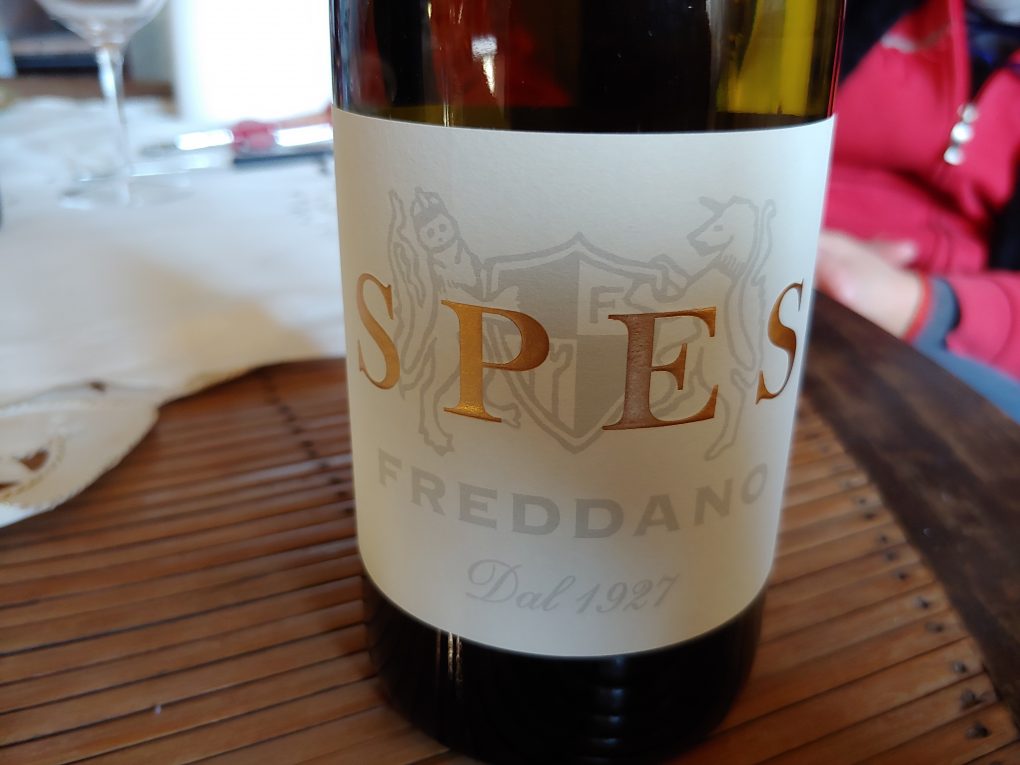
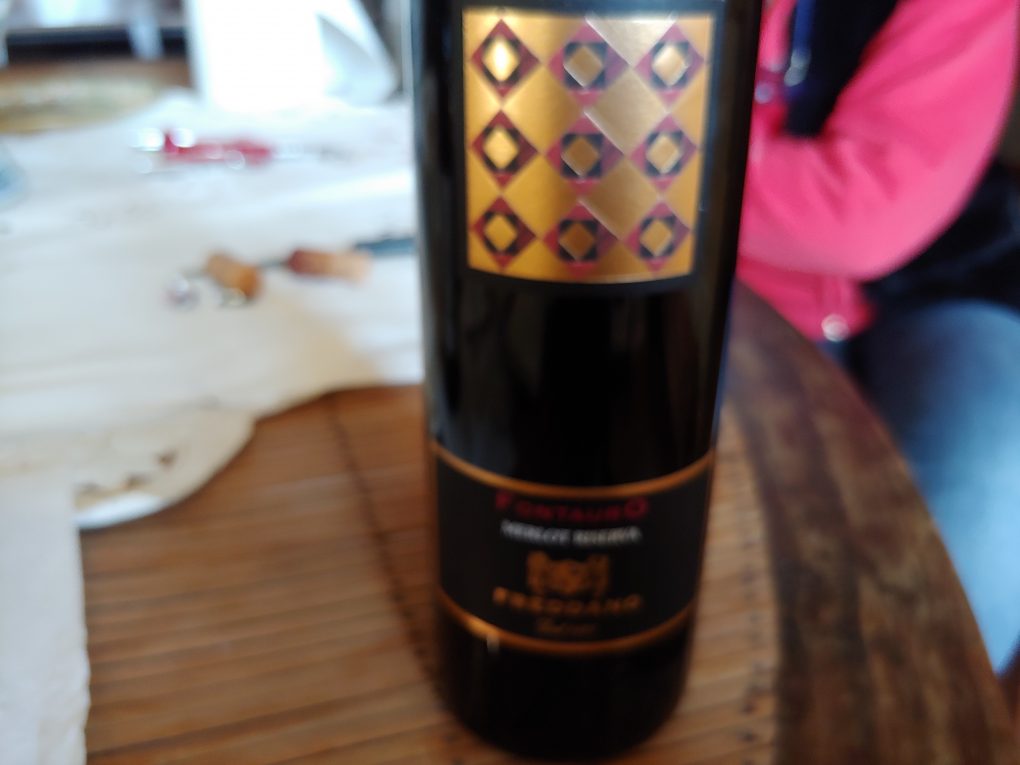
My next stop was Tenuta Freddano, standing at 350 to 400 meters (asl) in the village of Fossatello, and overlooking Lake Corbara. The winery has an almost century-old history of winemaking in the Orvieto Classico tradition begun by Italian-American Sante Freddano in 1931, and continuing with Guilio in 1987. Guilio began bottling wine made from grapes grown on the estate for commercial consumption, and sold them at the 4 stores he subsequently opened in the center of Orvieto. In 1995, Guilio began converting the estate to organic wine production. Tenuta Freddano has been certified organic and vegan since 2001. Chiara Fiorentini and her family assumed ownership of Tenuta Freddano in December 2019. They have spent the last two particularly challenging years renovating the estate. Guilio continues to contribute his valuable experience and know-how to the care and maintenance of the vineyards and cellar. Absolutely no herbicides, chemical fertilizers, or pesticides are used in the winemaking process. Instead, the winery fosters biodiversity in its sand, clay, and limestone soil-rich vineyards to maintain a balanced ecosystem that nourishes and aerates the soil, and wards off harmful insects. Planting roses, grass, and herbs alongside vines help to balance the nitrogen in the soil, and introduce insects such as ladybugs and bees (species that aid in the cultivation of grapes), into the vineyards. Grechetto, Malvasia Bianca, Procanico, Vermentino, Chardonnay, and Merlot are cultivated and hand-harvested in these vineyards. I tasted four wines from their portfolio that were paired with regional cheeses and meats.
Tenuta Freddano, Torrale Bianco, Lago di Corbara DOC
Vermentino
Fermented in stainless steel tanks
Crisp, with good acidity, and a refreshing minerality
Aromas of white and yellow flowers, lemons, and apples, along with papayas
Notes of citrus, orchard, and tropical fruits, broom, and fresh herbs
Tenuta Freddano, Spes Bianco, Orvieto di Classico Superiore DOC
Blend of Grechetto, Procanco, and Malvasia Bianca
Fermented in stainless steel tanks
Fresh, with a balanced salinity, and a soft acidity
Aromas of orchard and tropical fruits, and fresh grass
Notes of peaches, pineapples, and lychees, along with elderberries
Tenuta Freddano, Fontauro Rosso Riserva, Lago di Corbara DOC
Merlot
Fermented in stainless steel tanks and aged one year in French oak barriques
Rich, and full-bodied, with soft tannins
Aromas of mixed berries, dark fruits, and balsamic
Notes of raspberries, blackberries, and blueberries, as well as fragrant spices
Tenuta Freddano, Campo de Massi Rosso, Lago di Corbara DOC
Merlot
Fermented and aged in stainless steel tanks
Bright, with a good acidity, and soft tannins
Aromas of red berries, herbs, and spices
Notes of raspberries, cherries, and plums, as well as earth
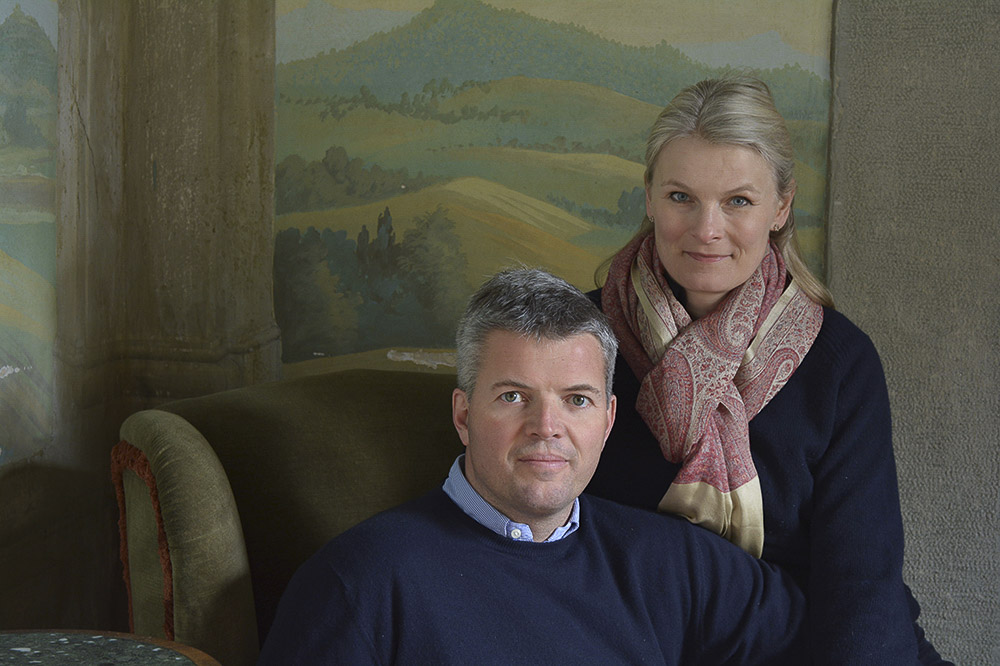

I was off to Castello di Montegiove next, located on a hilltop some 600 meters (asl). The castle dates back to the 13th century, and is surrounded by roughly 1200 hectares of oak forest and olive groves that are teeming with local flora and fauna, as well as stretches of pastures and fields that are dotted over with stone farmhouses. The inspiration for the name Montegiove comes from the discovery of two votive terracotta heads of Jupiter, the Roman god of thunder (also known as Giove/Jove), on the site where the castle now stands. The estate has had a rich history of ownership through the centuries, passing from the hands of the aristocratic Bulgarelli family, the counts of Marsciano, to other notable members of nobility, a mercenary, and even a local saint before being acquired by the Marquesses Misciattelli in 1780. It has remained in the Misciattelli family ever since. Towards the end of the 1800s, the Marquess Lorenzo Misciattelli converted the centuries-old castle into a residence, and installed a winery on the estate. His son Paolo Misciattelli Mocenigo Soranzo continued to renovate the estate and incorporate modern agricultural techniques into the cultivation of traditional products. The estate is now overseen by the Marquess Lorenzo Peter Misciattelli Mocenigo Soranzo who carries on the legacy of producing quality, locally-grown-and-crafted products, while nurturing and preserving the land for future generations. Lorenzo has overhauled the vineyards on the estate, reducing the number of hectares being planted to focus on quality as opposed to quantity, while preserving the oldest vines (some of which are over 50 years old). The clay and limestone soil-rich vineyards (reminiscent of the soil type found in neighboring Siena province in Tuscany) situated at 380 to 620 meters (asl), are ideally suited for the cultivation of Sangiovese, Montepulciano and Sagrantino, along with Canaiolo, Barbera, and Merlot, as well as Cabernet Sauvignon. The winery also produces Orvieto Classico DOC wines from regional white varietals including Grechetto, Procanico, and Malvasia Bianca, as well as Drupeggio, and Verdello. I sampled the portfolio at Castello di Montegiove. An Orvieto Classico DOC, a rosato, and a Sagrantino blend were among my favorites.
Castello di Montegiove, bi.an.co, Orvieto Classico DOC, 2020
Blend of 50% Procanico, 30% Grechetto, and 20% Drupeggio, Verdello, and Malvasia Bianca (combined)
Fermented in stainless steel tanks
Full-bodied and structured, with a soft minerality
Aromas of white flowers, citrus and orchard fruits, and fresh vegetation
Notes of lemons, green apples, and peaches, as well as chamomile and grass
Castello di Montegiove, ro.sa.to, Umbria Rosato IGT (produced using the saignee’ method)
Blend of 60% Sangiovese, 20% Canaiolo, and 20% Montepulciano
Fermented in stainless steel tanks
Refreshing and crisp, with a subtle minerality and salinity
Aromas of red berries and fruits, and mixed herbs
Notes of strawberries, raspberries, and cherries, as well as blood oranges, anise, and elderflowers
Castello di Montegiove, Elicius, Orvietano Rosso DOC, 2013
Blend of 70% Montepulciano and 30% Sagrantino
Fermented in stainless steel and concrete tanks, and aged 18 months to two years in French oak barriques and tonneaux and at least two years in bottle
We left Orvieto and arrived in Torgiano a little over an hour later. Torgiano is a municipality in Umbria located roughly 10 kilometers from Perugia. You’ll pass several towns and cities along the way, including Assisi. Assisi is world famous for the UNESCO World Heritage Site, the Basilica of Saint Francis of Assisi, a centuries-old Christian pilgrimage destination.
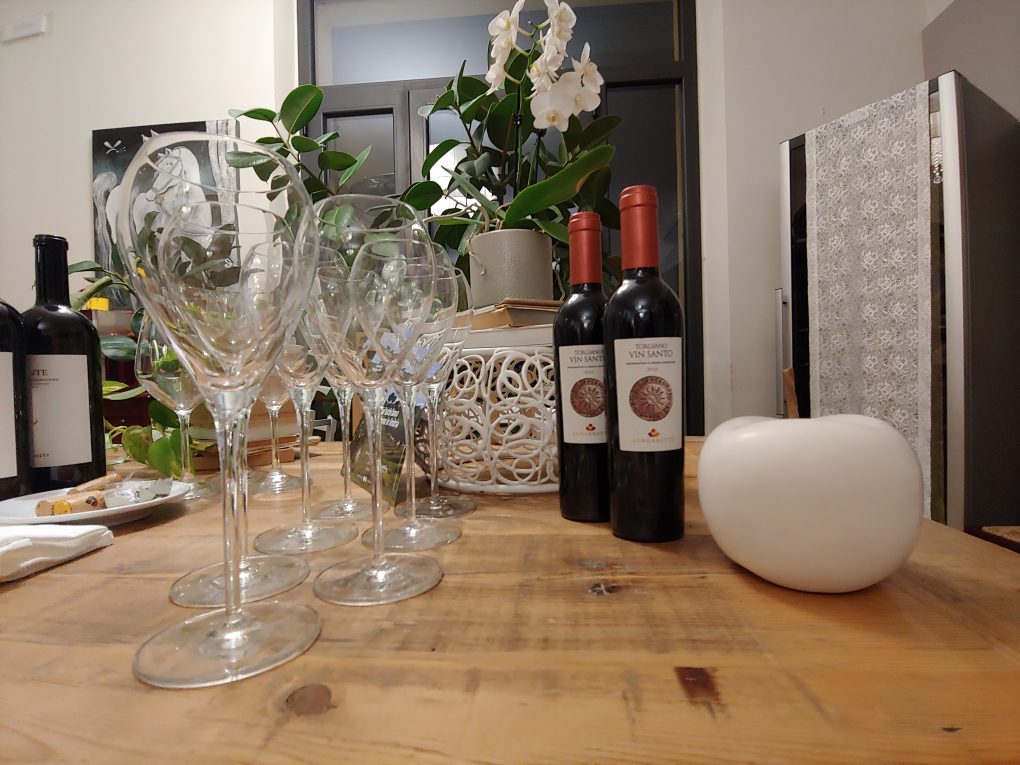
There are four wineries in Torgiano and each one offers a different interpretation of the area’s unique terroir. The first winery I visited in Torgiano was Cantine Giorgio Lungarotti. The Lungarotti family has been making wine in Torgiano since the 18th century. They are credited with having positively transformed the way wine is made in Torgiano, and elevating both the regional and global status of its wines. Giorgio Lungarotti precipitated this transformation in 1949, when he acquired additional territory and planted local grapes in the newly established vineyards. He also offered to employ the farmers who currently sharecropped on the estate, and concentrated the focus of his agricultural initiatives on wine production. Giorgio dedicated himself to the science of winemaking, studying the relationship between grape, vine, and terroir, and then applying the modern processing techniques that were essential to making quality wines. In 1962, Giorgio integrated a number of independent winemakers under the Cantine Giorgio Lungarotti SpA brand, and debuted its first wine, the Lungarotti Rubesco Rosso di Torgiano. In 1968, largely due to Giorgio’s efforts, Torgiano was the first area in Umbria to receive a DOC for its reds and whites. Torgiano was granted a DOCG in 1990. In 1974, Giorgio and his wife, the art historian Maria Grazia Marchetti, established the MUVIT (Wine Museum of Torgiano), in the center of town.
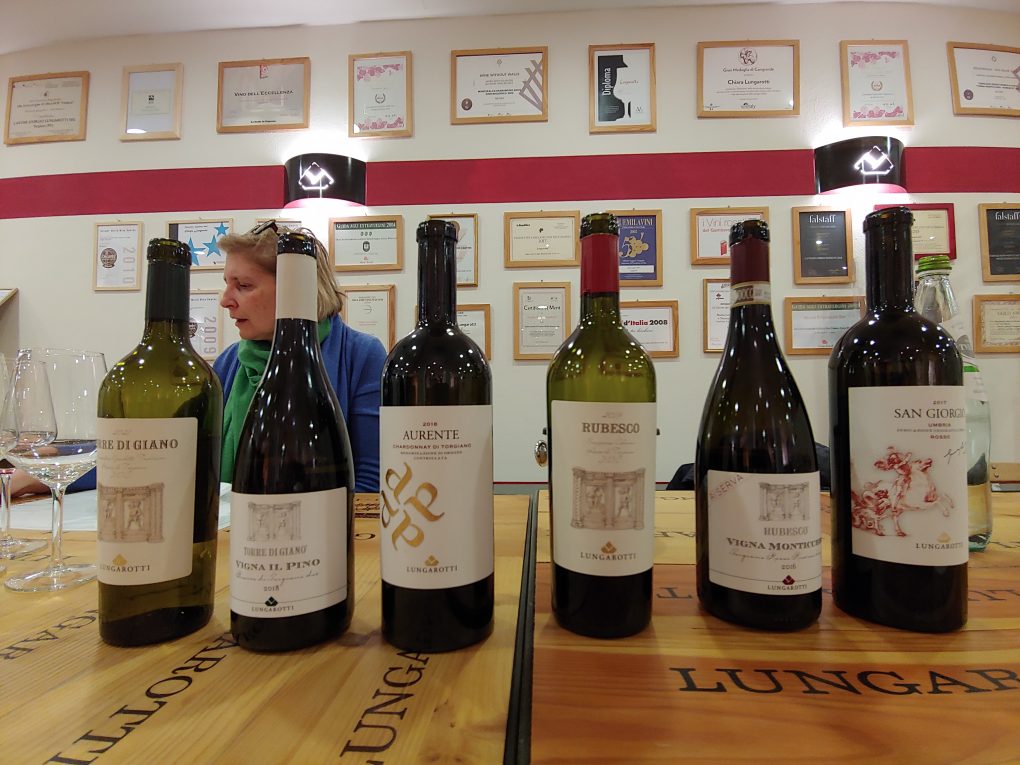

In the decades that followed, Giorgio and his family have continued to spearhead innovation in wine production techniques, and they remain a leader in establishing the benchmark for ecologically-friendly, quality wine production in Torgiano. Sisters Chiara Lungarotti and Teresa Severini are currently in charge of operations, upholding the principles of ecologically-friendly, fine wine production that have become part of the Lungarotti legacy. Some of the company’s portfolio of wines are featured below.
Lungarotti, Torre di Giano, Bianco di Torgiano, DOC 2021, Tenuta di Torgiano
Blend of Vermentino, Grechetto, and Trebbiano grown on clay-rich soil
Fermented in stainless steel tanks
Elegant and well-structured, with a soft acidity and a subtle minerality
Aromas of citrus and orchard fruits, and nuts
Notes of lemons, oranges, and green apples, along with almonds and slate
Lungarotti, Torre di Giano Vigna il Pino, Bianco di Torgiano DOC 2018, Tenuta di Torgiano
Blend of Vermentino, Grechetto, and Trebbiano grown on clay and limestone-rich soil
Fermented in stainless steel tanks, and aged three months in French oak barriques
Structured and complex, with a subtle salinity and minerality
Aromas of white flowers, citrus and orchard fruits, and scented wood
Notes of lemons, pears, and linden flowers, as well as honey
Lungarotti, Rubesco, Rosso di Torgiano DOC 2019, Tenuta di Torgiano
Blend of Sangiovese and Colorino grown on clay and limestone-rich soil
Aged one year in French oak casks and one year in bottle
Medium-bodied, with bright tannins, a subtle minerality, and a fresh acidity
Aromas of dark flowers, red fruit jam, and sweet spices, along with tobacco
Notes of violets, raspberries, and cherries, along with plums and black pepper
Lungarotti, Rubesco Riserva, Vigna Monticchio, Torgiano Rosso Riserva DOCG 2016, Tenuta di Torgiano
Sangiovese grown on sandy and clayey soils situated at 300 meters (asl)
Aged one year in fine-grain French oak barriques and five years in bottle
Elegant and balanced, with well-rounded tannins, and a subtle minerality
Aromas of violets, cherries, and plums, as well as coffee and dried herbs
Notes of red fruit jam, dark stone fruits, and licorice, as well as pepper
Tenute Baldo Agricola was next on my agenda. The winery, once a cooperative working in conjunction with another winery, has been an independent entity since the mid-twentieth century. Tenute Baldo is now overseen by oenology and production manager Luca Mosconi, and quality manager Dr. Andrea Sansoni.
The winery has 40 hectares of vineyards dedicated to the production of DOC and DOCG wines in Torgiano. Of these, 24 hectares are situated in the hills lying located between 230 and 270 meters (asl). The clay and calcareous soil-dominant vineyards situated to the north are ideal for planting age-worthy Sangiovese, Cabernet Sauvignon, and Merlot. The sand and silt soil-dominant vineyards located to the south are planted with Sauvignon Blanc, Chardonnay, Procanico, and Grechetto. The remaining 16 hectares of the silt and clay soil-dominant vineyards situated in the plains are planted with Chardonnay and Sangiovese.
The 20 hectares of vineyards in Bevagna are devoted to the cultivation of the autochthonous grape Sagrantino. Of these, 13 hectares consist of clay and silt soil-dominant vineyards located in the hills of Torre del Colle. The remaining seven hectares of sand and silt soil-dominant vineyards are situated in the valley. The winery engages in ecologically sustainable production practices in all its vineyards to ensure that they, and the surrounding natural environment, remain healthy and viable for generations to come. Grapes are hand-selected, and there is minimal use of mechanical intervention. Chemical pesticides and other additives are avoided in favor of cover cropping with grass and vegetation to aerate the soil, nourish the vines, and increase their root surface, as well as promote drainage. I was impressed with the winning portfolio at Tenute Baldo, where youthful spirit and sheer talent fuel a passion for winemaking that results in some truly beautiful wines. The philosophy at this Torgiano winery? Make autochthonous wines that reflect classic Umbrian traditions, while keeping a finger on the pulse of innovation.

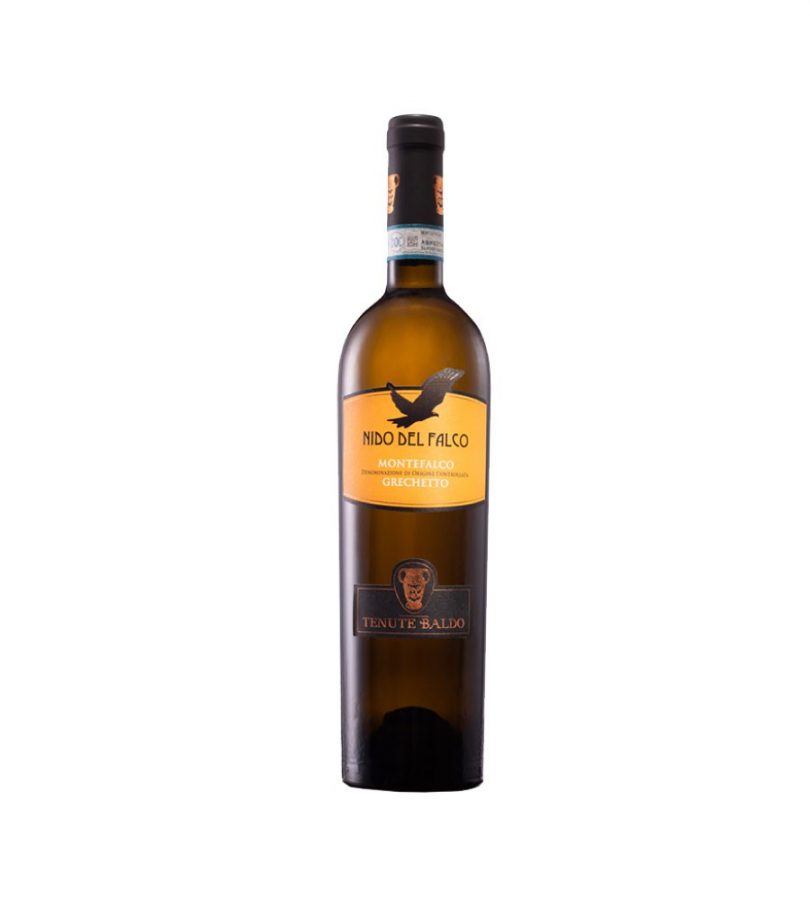
Tenute Baldo, Figlio Della Luna, Bianco di Torgiano DOC
Blend of Chardonnay, Sauvignon Blanc, and Trebbiano Torgiano
Fermented in stainless steel tanks and aged one month in bottle
Fresh and well-rounded, with a silky texture
Aromas of yellow flowers, and citrus, orchard, and tropical fruits
Notes of limes, green apples, and bananas, along with pineapples and acacia
Tenute Baldo, Nido del Falco, Montefalco Grechetto, DOC
Grechetto
Fermented in stainless steel tanks
Well-balanced, supple, and soft
Aromas of preserved orchard and white-fleshed stone fruits, chamomile, and nuts
Notes of ripe apples, peaches, and apricots, as well as acacia honey, and almonds
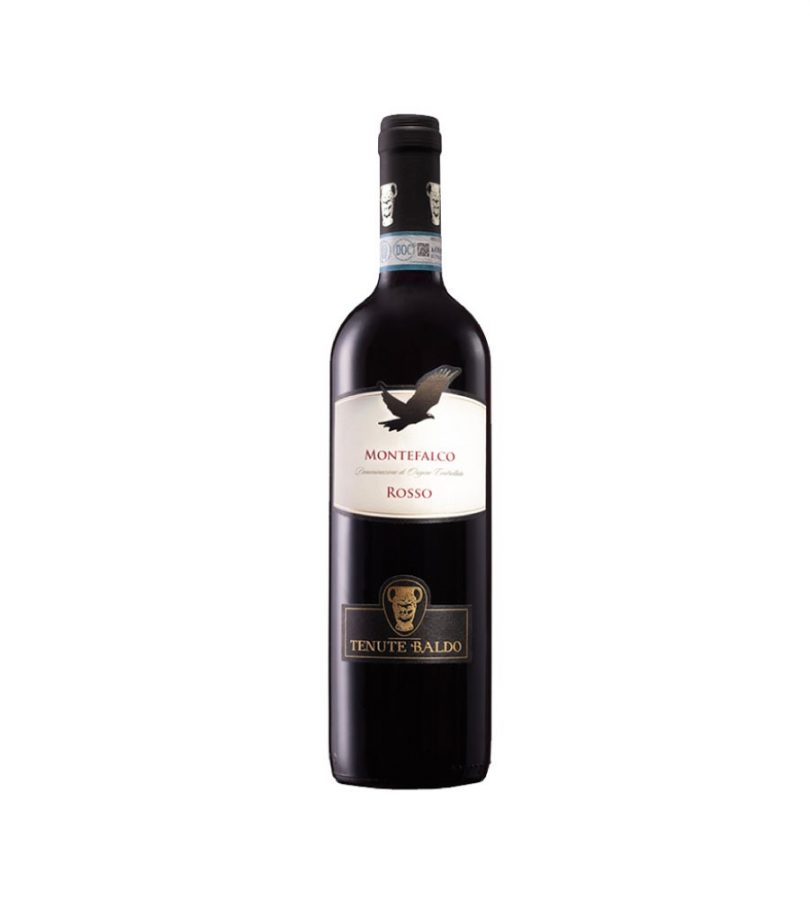
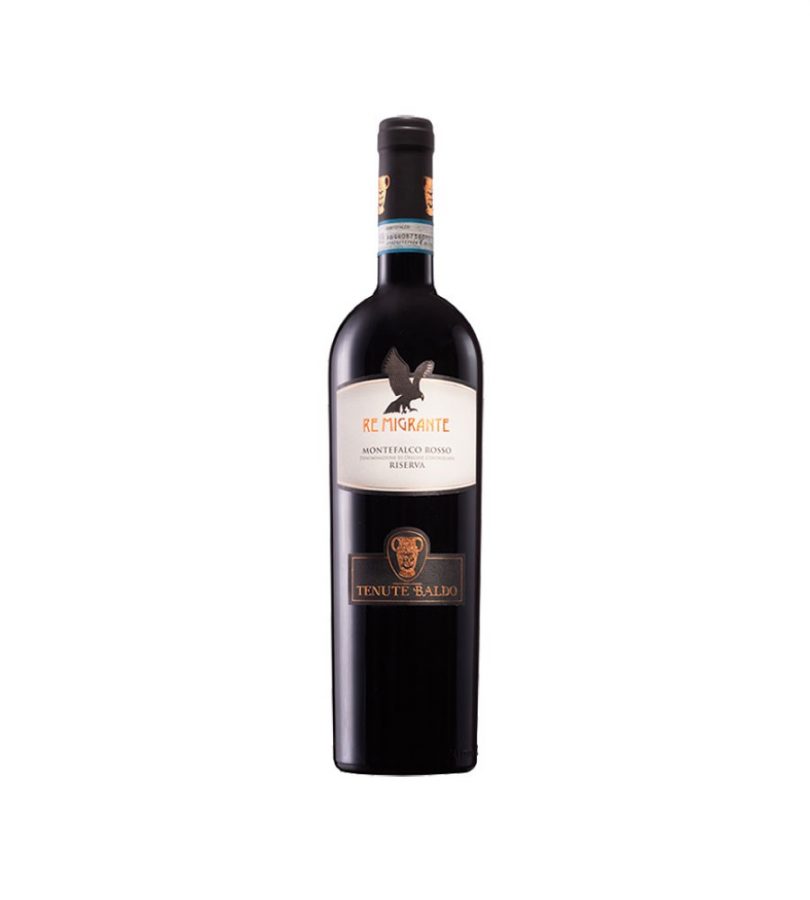
Tenute Baldo, Montefalco Rosso DOC
Blend of Sangiovese and other regional red varietals
Fermented in stainless steel tanks and aged six months in oak casks and three months in bottle
Round, with a velvety texture, soft tannins, and a good acidity
Aromas of mixed red and dark berries and stone fruits, and scented wood
Notes of raspberries, blueberries, and cherries, along with fresh herbs and spices

Tenute Baldo, Auravitae, Rosso di Torgiano DOC
Blend of Sangiovese, Cabernet Sauvignon, and Merlot
Fermented in stainless steel tanks, and aged six months in French barriques and three months in bottle
Intense, with dense and concentrated flavors
Aromas of dark berries, plum jam, and dried herbs,
along with black pepper
Notes of ripe oranges, blackberries, and dark cherries, along with fresh pine
Tenute Baldo, Remigrante, Montefalco Rosso Riserva, DOC
Blend of Sangiovese, Merlot, and various regional red varietals
Aged 18 months in French oak barriques and six months in bottle
Rich and complex, with silky tannins, and a subtle minerality
Aromas of fresh red and black fruits, sweet spices, and scented wood, as well as mocha
Notes of cherries, dried orange peels, and cinnamon, as well as oak
Tenute Baldo, Preda del Falco, Montefalco Sagrantino DOCG
Sagrantino
Fermented in stainless steel tanks, and aged six months in French oak casks and barriques, and one year in bottle
Well-rounded, dense, and richly textured
Aromas of citrus, berry, and dark stone fruits, scented wood, and spices
Notes of ripe oranges and blackberries, preserved plums, and rhubarb, along with black pepper
Tenute Baldo, Spirito della Vite, Torgiano Rosso Riserva DOCG
Blend of Sangiovese, Cabernet Sauvignon, and Merlot
Fermented in stainless steel tanks, and aged two years in French oak barriques and one year in bottle
Intense and rich, with a velvety texture, and soft tannins
Aromas of preserved red berries and dark stone fruits, sweet spices, and cocoa
Notes of candied raspberries and cherries, cinnamon, and vanilla, as well as oak and chocolate
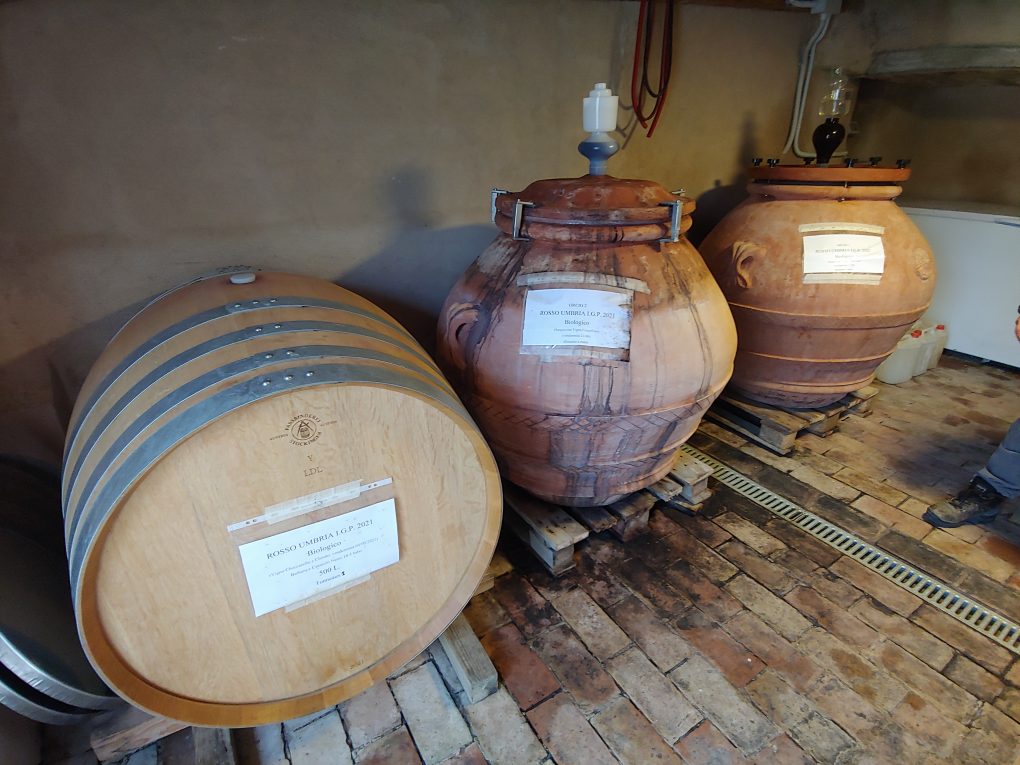
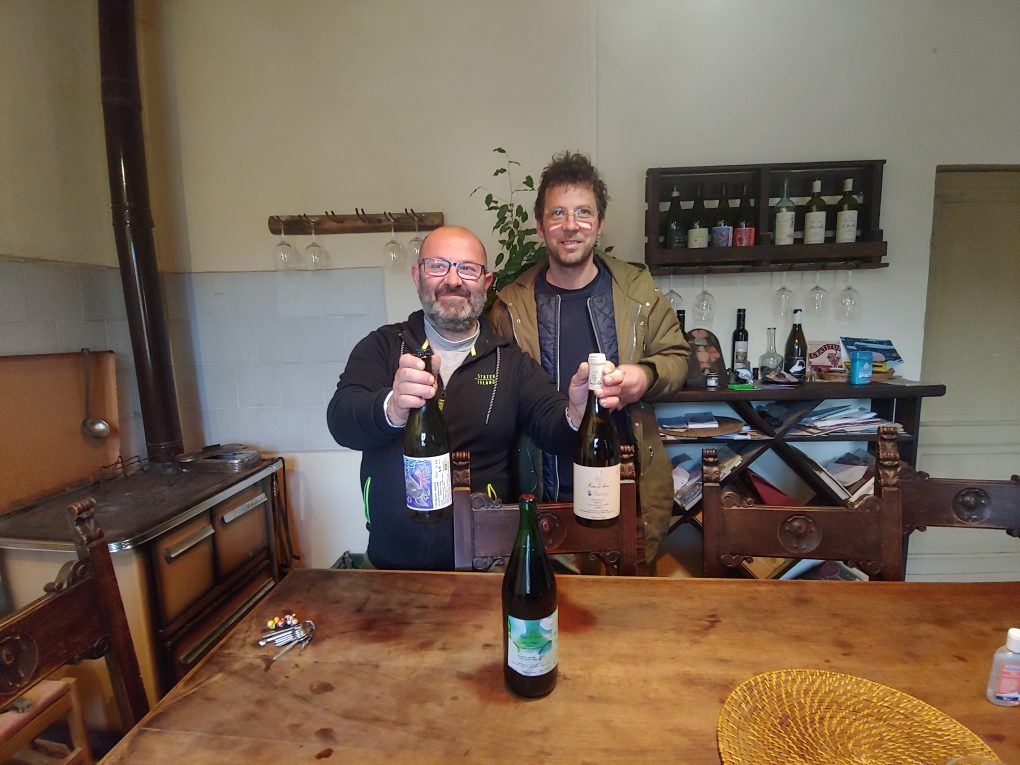
Then onto Fattoria Mani di Luna. The winery was established 10 years ago by Rocco Trauzzola, Simone Lazzarin, and Alessandro de Filippis. They came from different backgrounds, but were united by a shared passion for the wine, the terroir, and the natural environment that reflect the history of the land. The hillside-based, calcareous and sand soil-dominant vineyards are situated 200 to 400 meters (asl), and the lower-lying ones are situated in a valley between the Chiascio and the Tiber rivers.
The winery engages in biodynamic methods of wine production. Biodynamic techniques include using composts as opposed to commercial fertilizers to nourish the soil, and planting different types of vegetation, and attracting auspicious species of insects into the vineyard to aerate the soil and serve as natural pesticides. The trio choose to plant their grapes in accordance with the lunar cycle because they view this ancient method of timekeeping as being the most closely aligned with the rhythm of the natural world. Moreover, traditional winemaking techniques including hand-harvesting and foot-treading of grapes are employed at the winery in an effort to keep machine intervention at a minimum.

Terre Margaritelli was my last winery stop in Torgiano. It’s part of the Margaritelli family legacy in the area, extending back to 1870 with roots in timber and commercial railway transport. The winery, established in 1950, was born out of founder Fernando Margaritelli’s aspirations to make wine for personal consumption and to be enjoyed by family and friends. It evolved in 2000 when his son Giuseppe expanded the property, adding an experimental vineyard, and adapting the existing ones, along with the processing facilities, to the production of organic wines. The winery and its vineyards are situated on a hill standing between 200 and 280 meters (asl) in the DOCG of Miraduolo. The vineyards play host to 16 different types of grapes.
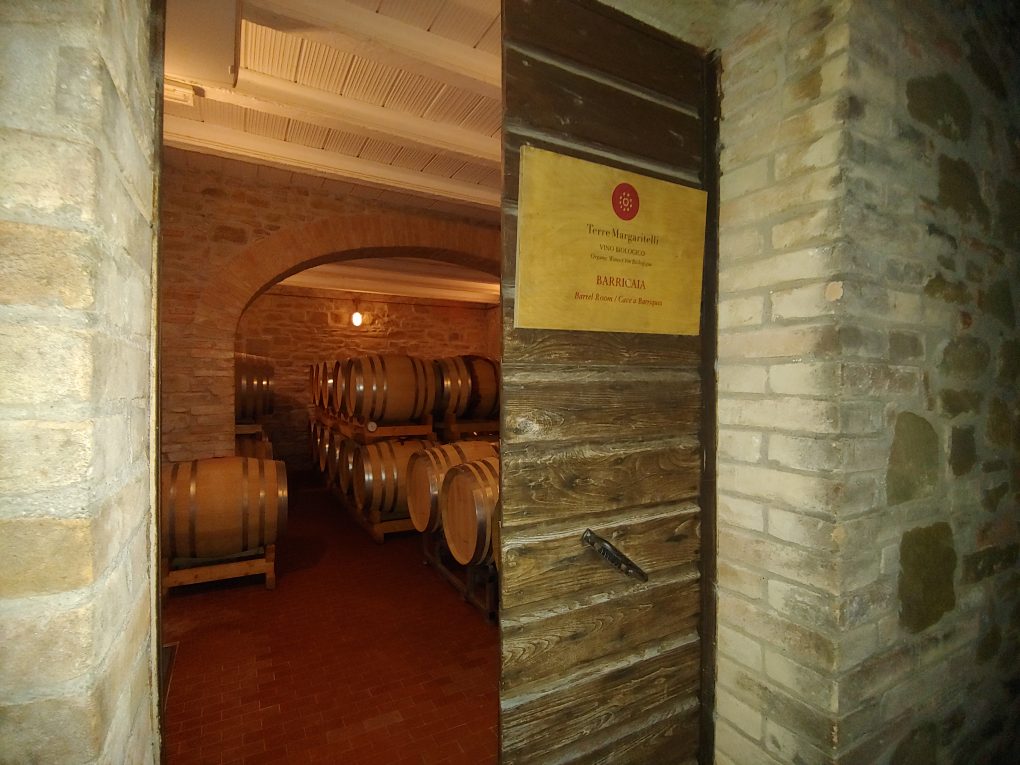
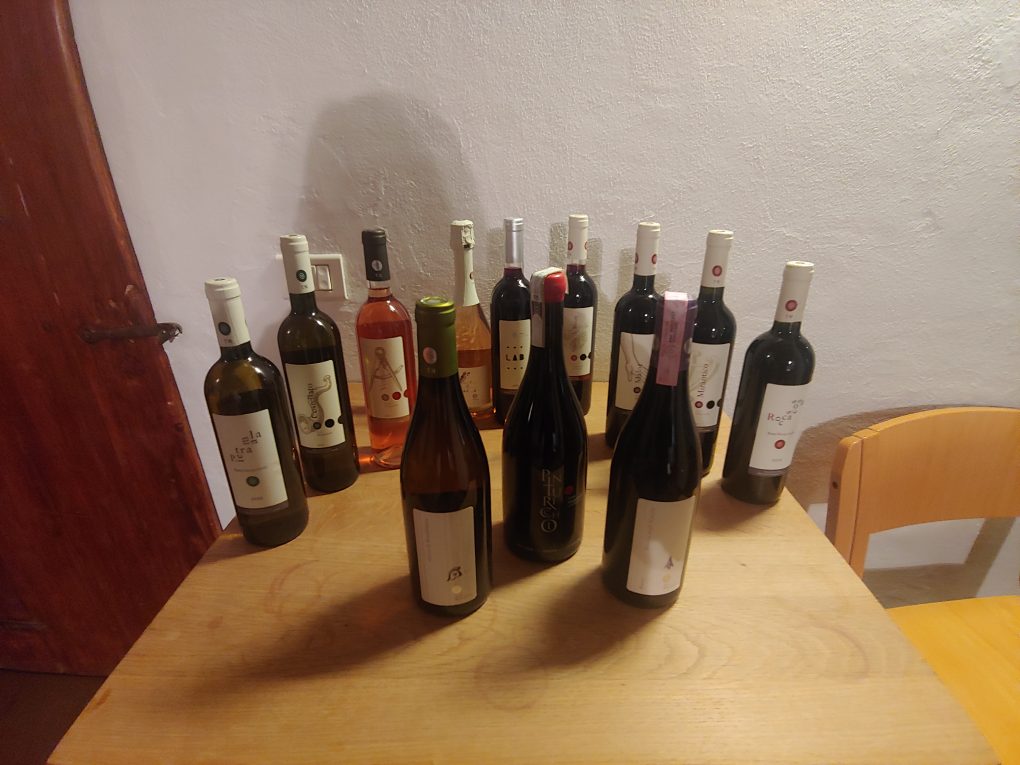
These include the white varietals Procanico, Grechetto, Chardonnay, Traminer, Pecorino, Fiano, Semillon, and Viognier, and the red varietals Sangiovese, Canaiolo, Merlot, Cabernet Sauvignon, Cabernet Franc, Malbec, Tannat, and Petit Verdot. Margaritelli’s eclectic portfolio of wines reflects the diversity of its plantings. Moreover, it demonstrates the winery’s dedication to studying both regional and international varietals in order to understand their potential as single varietals and blends, as well as the relationship between different grapes and the terroir.

There’s inspiration behind the naming of each wine in the Margaritelli portfolio. I had the pleasure of trying a number of them and learning the stories behind some of the labels.
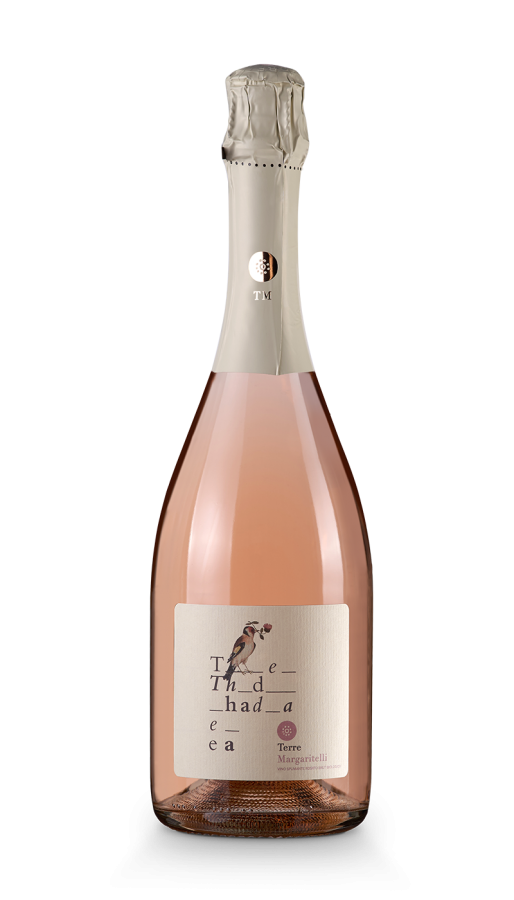

Terre Margaritelli, Thadea, Spumante Rosato Brut
Thadea was the name of the daughter born out of an illicit relationship between the married Emperor Charles V of Spain who often spent time in Montefalco, and the widowed Orsolina della Penna, a noblewoman from Perugia. Orsolina gave birth to Thadea in secret and entrusted her to the care of a governess appointed by Charles V. Charles V privately acknowledged Thadea as his daughter. Nevertheless, Thadea was never officially recognized as his heir despite Orsolina’s attempts to establish her daughter’s birthright in the eyes of the law.
Sangiovese
Fermented in stainless steel tanks, and aged three months in bottle (Charmat method)
Crisp and lively, with fine and energetic bubbles, a soft acidity, and a subtle minerality
Aromas of dark flowers, red berries and fruits, and fresh grass
Notes of rose petals, strawberries, and raspberries, as well as pomegranate
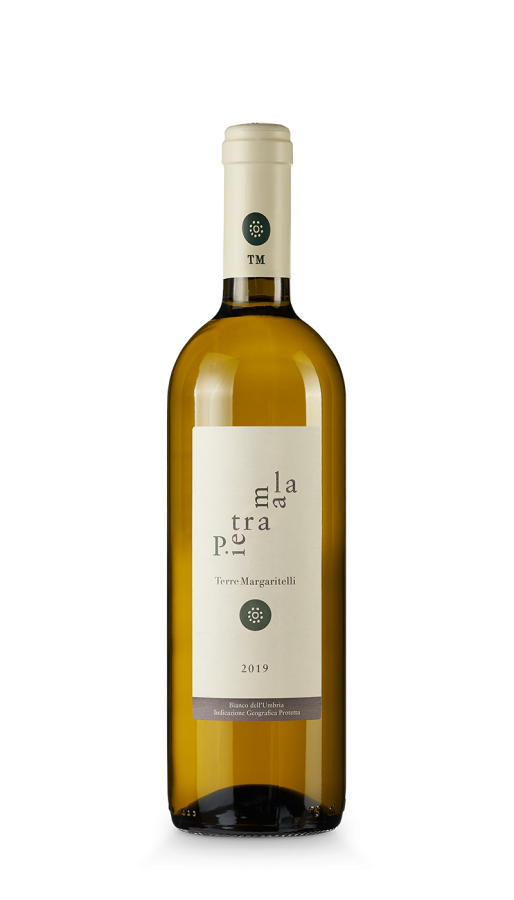
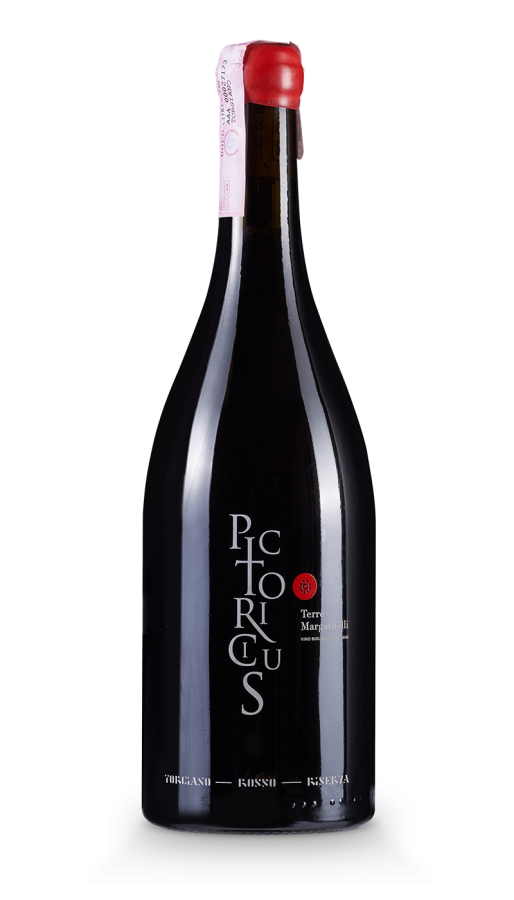
Terre Margaritelli, Pietramala, IGT Umbria
Blend of Procanico, Traminer, and Pecorino
Fermented in stainless steel tanks
Refreshingly acidic, with a balanced salinity and minerality
Aromas of white flowers, citrus and orchard fruits, and fresh herbs
Notes of lemons, grapefruits, and green apples, as well as peaches, honey, and vanilla
Terre Margaritelli, Greco di Renabianca, IGT Umbria
Grechetto
Aged in French oak barriques from the Bertranges forest, and one year in bottle
Well-balanced, with a lively, fruit-driven character, and a bright acidity
Aromas of yellow flowers, citrus and orchard fruits, and nuts, as well as fresh vegetation
Notes of limes, green apples, and apricots, as well as almonds, scented wood, and grass
Terre Margaritelli, Venturosa, Rosato DOC Torgiano
The name is a combination of the Italian word for adventure (aventura) and pink (rosa), and refers to the winery’s experimentation with rosato production. This rosato was produced using the “pressurage” method. It’s a technique that involves leaving the grape juice in contact with the skins during the pressing process. The result is a wine with a pink tinge that is often associated with the “salmon” hue typical of Provencal rose’.
Sangiovese
Fermented in stainless steel tanks and aged two months in bottle
Crisp, with a good acidity and minerality
Aromas of dark flowers, red berries, and fresh herbs
Notes of violets, roses, and strawberries, along with raspberries and slate
Terre Margaritelli, Lab, Tannat, 2019
The Margaritelli Lab series, as the name suggests, is comprised of wines crafted from the winery’s experimental vineyard. Unconventional grapes (those not usually planted in Torgiano, in Umbria, or even in Italy), are often cultivated in this vineyard. The wines made from varietals cultivated in this vineyard enable the winery to broaden its understanding of different non-regional varietals and their relationship to the terroir. The 2019 Lab was crafted from 100% Tannat. Tannat is predominantly grown in parts of France and Uruguay. It’s a naturally acidic and powerfully tannic red grape that is often blended with Cabernet Sauvignon and Cabernet Franc, and aged in oak to soften its tannic edges. You’re not likely to come across many single-varietal Tannat wines outside of France and Uruguay.
Tannat
Aged four months in stainless steel tanks and two months in bottle
Fresh and juicy, with a bright acidity
Aromas of dark berries and stone fruits, sharp spices, and mocha, as well as licorice
Notes of blackberries, plums, and cardamom, along with chocolate, vanilla, and anise
Terre Margaritelli, Freccia Degli Scacchi, Torgiano Rosso Riserva-DOP DOCG
Sangiovese
Aged one year in French oak barriques from the Bertranges forest and in bottle
Well-rounded, and smooth, with a bright acidity
Aromas of dark flowers, red fruits, and sharp spices
Notes of violets, blackberries, cherries, and plums, as well as black pepper, oak, and licorice
Terre Margaritelli, Pictoricius-Pinturicchio, Torgiano Rosso Riserva-DOP DOCG
Bernardino di Betto, (aka Pinturicchio or (Pictoricius in Latin)), was a master painter of the Italian Renaissance. Born Bernardino di Betto, Pinturicchio was a native of Umbria who received commissions from 5 popes, and painted some of Italy’s most revered masterworks. The Margaritelli family chose to name this single-varietal Sangiovese wine after Pinturicchio because Sangiovese, like Pinturicchio, is an important part of Torgiano national identity. Sangiovese is used to produce the Torgiano Rosso Riserva, the first wine from Umbria to receive a DOCG. The Pinturicchio is the most prestigious label in the Margaritelli portfolio.
Sangiovese
Aged one year in French oak barriques and one year in bottle
Structured and well-balanced, with full-bodied tannins
Aromas of dark flowers, black fruit, scented wood, and earthy spices
Notes of violets, plums, cherries, black pepper, and patchouli

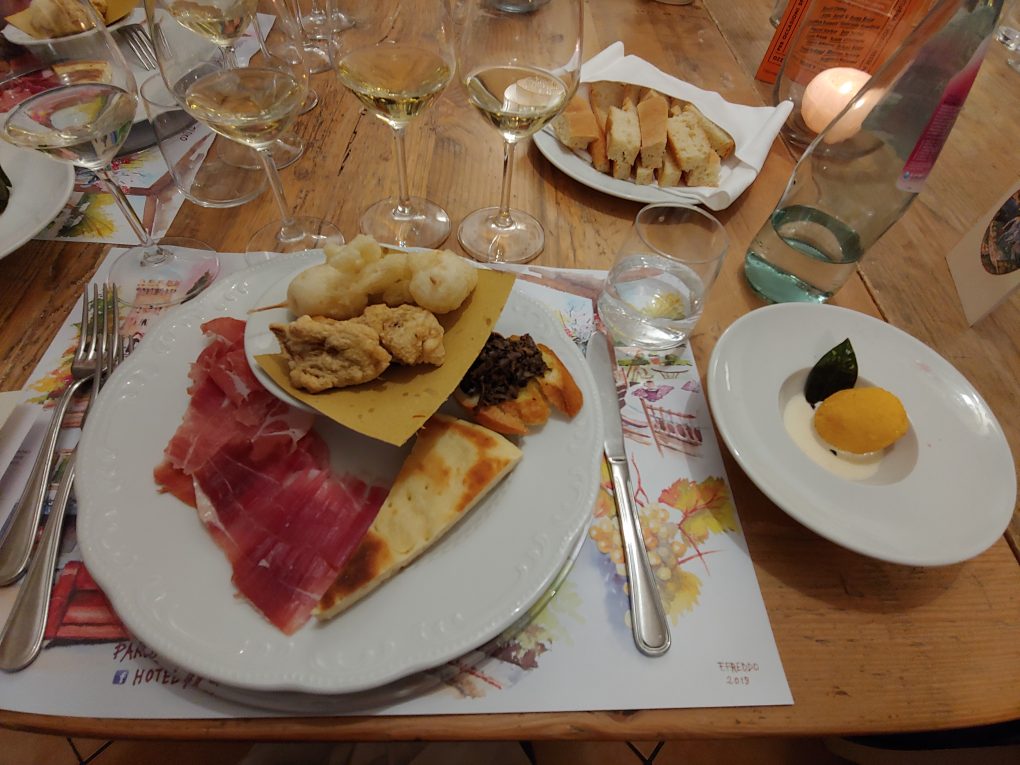
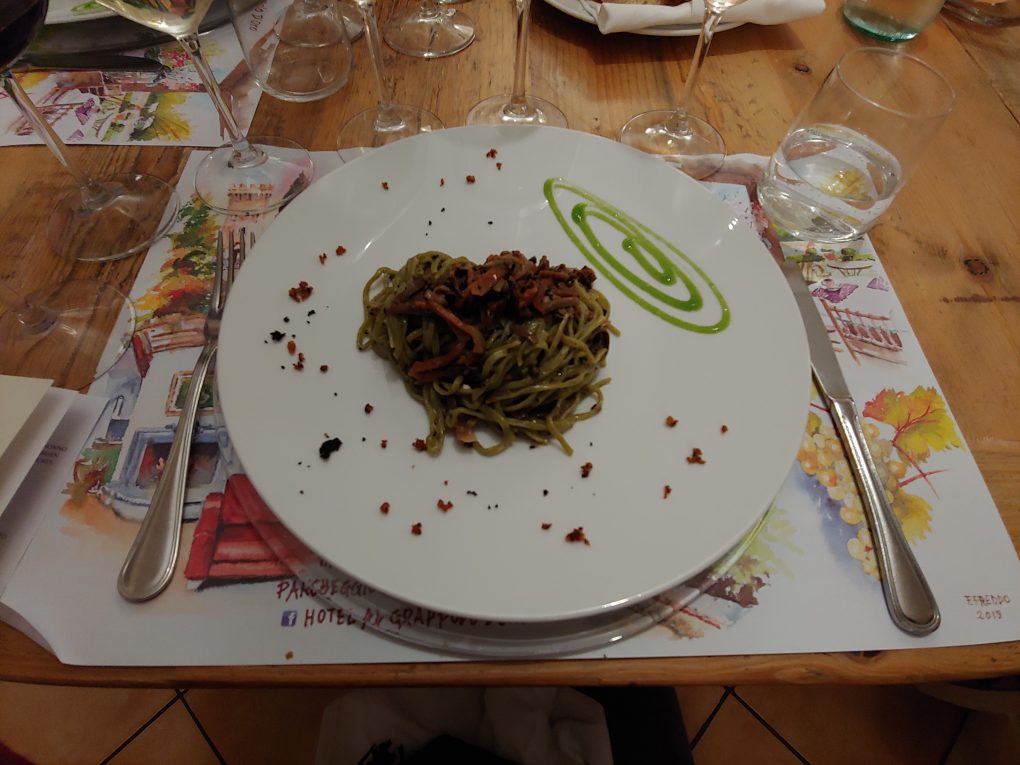
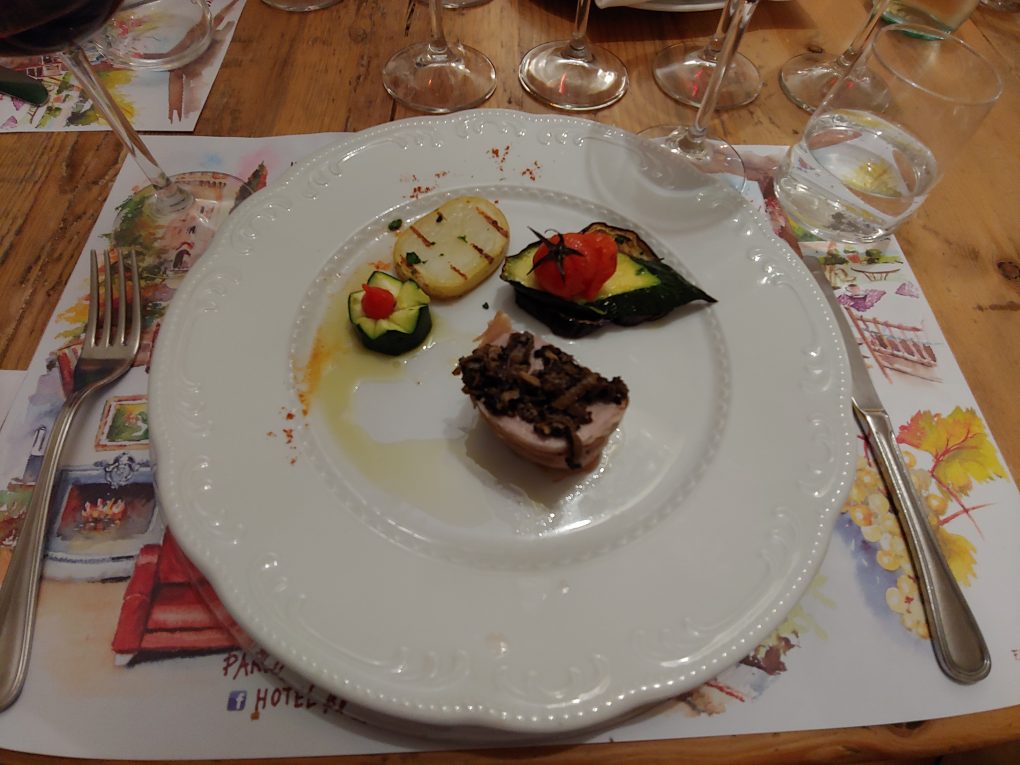
I enjoyed a fine dinner in the company of the gracious producers in Torgiano that evening. They brought a carefully curated selection of wines that seamlessly complemented the local and regional specialties prepared at Restaurant Siro.

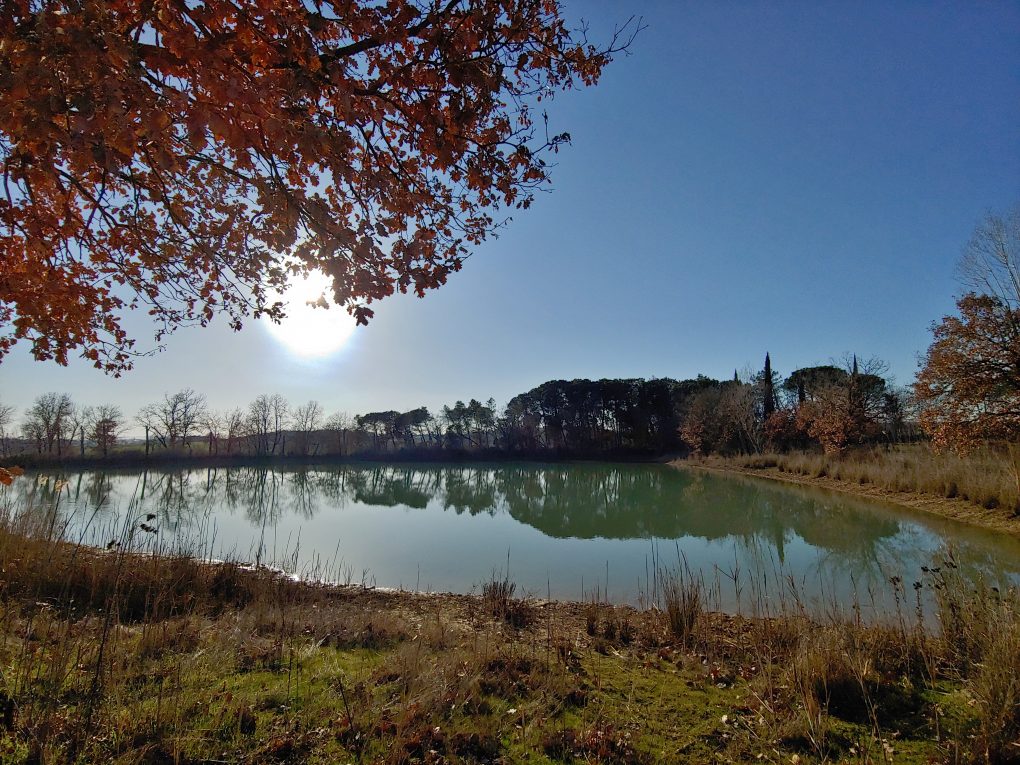
I was off to Trasimeno the following day. Lake Trasimeno is rich in wildlife; carp, perch, and trench draw fishing enthusiasts to its waters, and being that this lake is Italy’s fourth largest and most pristine body of freshwater, it’s not surprising to find that swimming is a popular summer pastime here. The lake itself and surrounding areas have been designated a national park. Trasimeno is also a site of fine olive oil production; its vast stretches of rolling hills are lined with trees cultivated for this purpose. The nearby villages hold a provincial charm and are living portraits to the Etruscan and Roman history that remain well preserved here. You’ll also find rustic restaurants specializing in the local wine and cuisine; the bucolic ambiance makes for a perfect agrotourism destination. The area is also prime DOC winemaking territory. These are the grape type and percentage guidelines that govern DOC wine production in Trasimeno.
Colli del Trasimeno DOC Spumante must consist of 70% to 100% of Chardonnay, Pinot Bianco, Pinot Grigio, and Pinot Nero (or a blend of these varietals), and a maximum 30% of other permitted white grapes
Colli del Trasimeno DOC (or DOC Riserva) must be comprised of at least 85% Cabernet Sauvignon, Gamay, Grechetto, or Merlot, and a maximum 15% other permitted white or red varietals depending on the blend.
Colli del Trasimeno DOC Bianco and Vin Santo del Trasimeno DOC (can be a still wine or a Frizzante), must be made up of 40% to 70% Procanico, 30% to 60% Grechetto, Chardonnay, Pinot Bianco and Pinot Grigio (or a blend of these varietals), and a maximum 30% of other permitted white grapes.
Colli del Trasimeno DOC Rosato and Rosso (still wine, Riserva, or Frizzante), must consist of 40% to 70% Sangiovese, and 30% to 60% Cabernet Sauvignon, Ciliegiolo, Gamay, or Merlot (or a blend of these varietals), with the possible addition of other permitted red grapes.
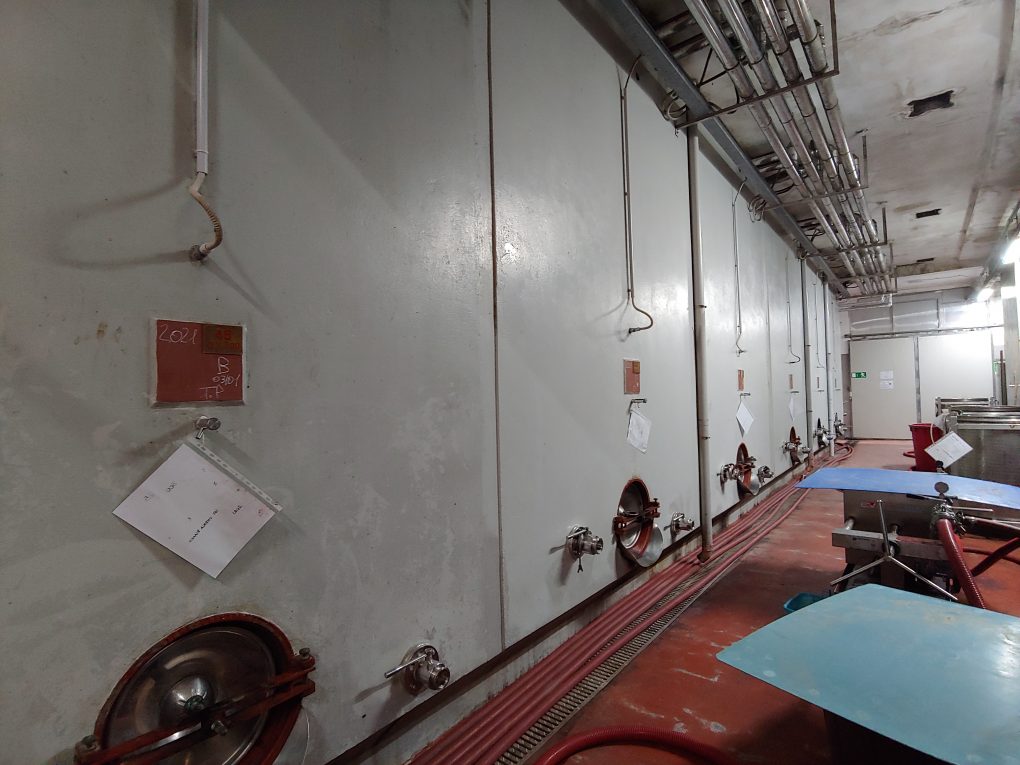
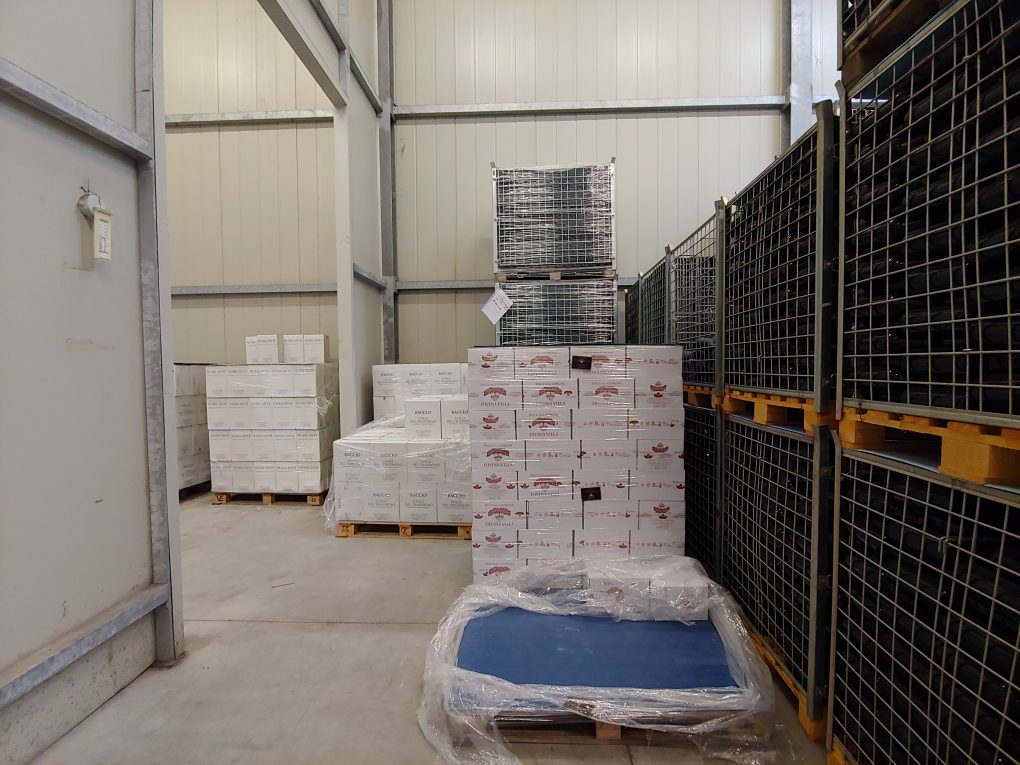
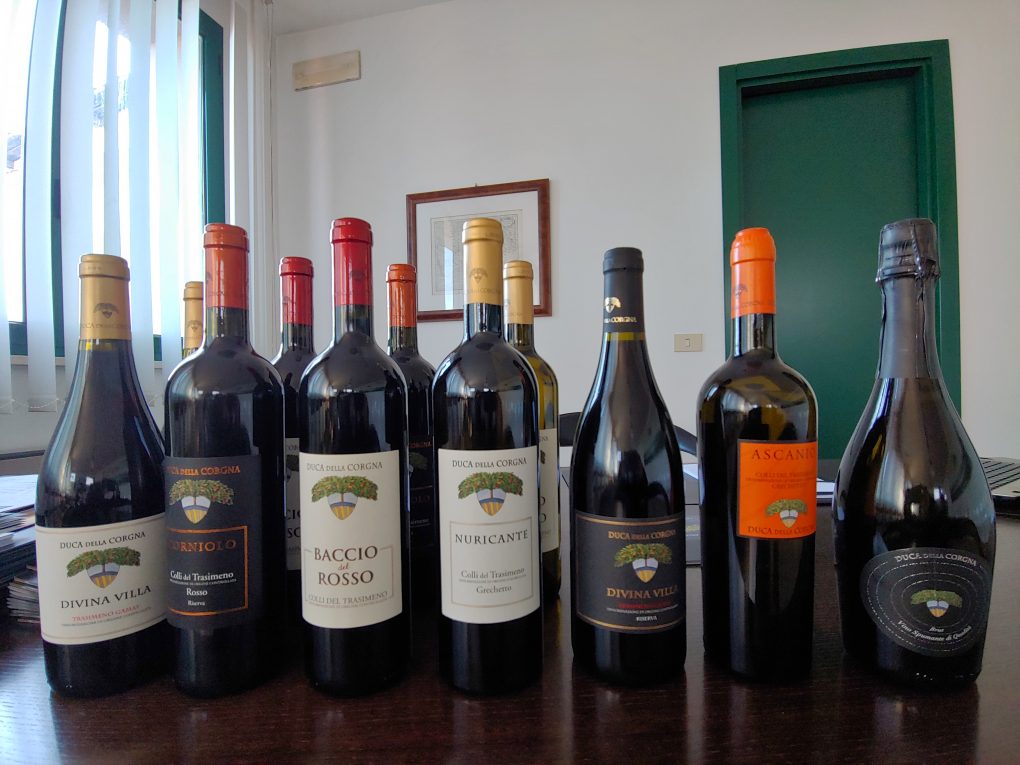
I started my Trasimeno wine tour at Cantina Coldibetto. Cantina Coldibetto is an organic winery and farm situated in the Trasimeno DOC winemaking territory near Monte Tezio Park, Antognolla Castle, (once part of a Benedictine monastery, and the site of an ancient crypt), and the Villa del Colle del Cardinale, (built in the 16th century for the Cardinal Fulvio della Corgna). The estate, dating back to the 18th century, has been practicing sustainable and environmentally-friendly methods of farming for the past 20 years. The winery’s 10 hectares of clay and calcareous soil-rich vineyards are situated at between 300 and 400 meters (asl), and produce both white and red grapes including Vermentino, Sangiovese, Merlot, and the autochthonous varietal Trasimeno Gamay. They are surrounded by naturally fertilized vegetable gardens and bean fields that provide them, and the adjacent olive tree groves, with nitrogen that helps maintain the health and structural integrity of the vines. The clay and calcareous soil-dominant vineyards inherently possess good water retention, reducing the need to irrigate. When additional hydration is needed, water is drawn to the land by means of an underground water transport network sourced from a semi-artificial lake. I tried two single-varietal wines from Coldibetto.
Cantina Coldibetto, Verzellino, Umbria Bianco IGP
Vermentino
Aged one year in stainless steel, and in bottle
Crisp, with a good acidity, minerality, and salinity
Aromas of white flowers, citrus and orchard fruits, and fresh vegetation
Notes of honeysuckle, lime zest, and grapefruits, as well as green apples, grass, and almonds
Cantina Coldibetto, Etrusco, Gamay del Trasimeno DOC
Gamay del Trasimeno
Aged one year in stainless steel, and in bottle
Full-bodied, elegant, and complex, with a subtle acidity
Aromas of dark flowers, red and dark berries, and black cherries, as well as mocha
Notes of violets, and ripe raspberries, and blueberries, as well as blackberries and dark chocolate
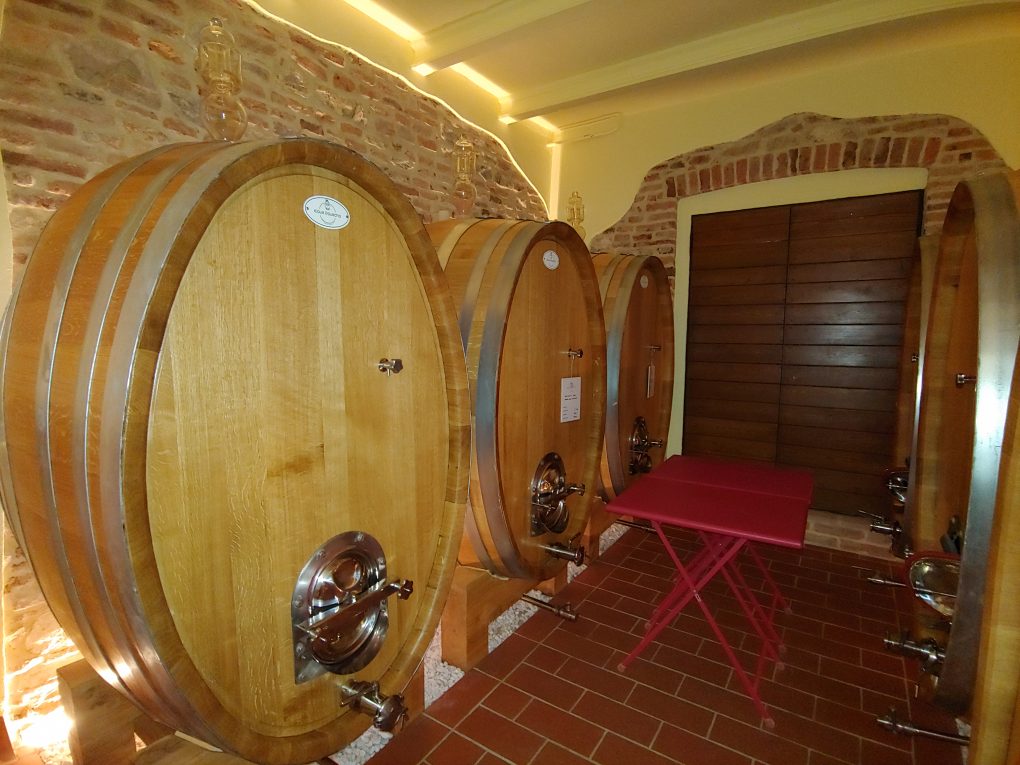
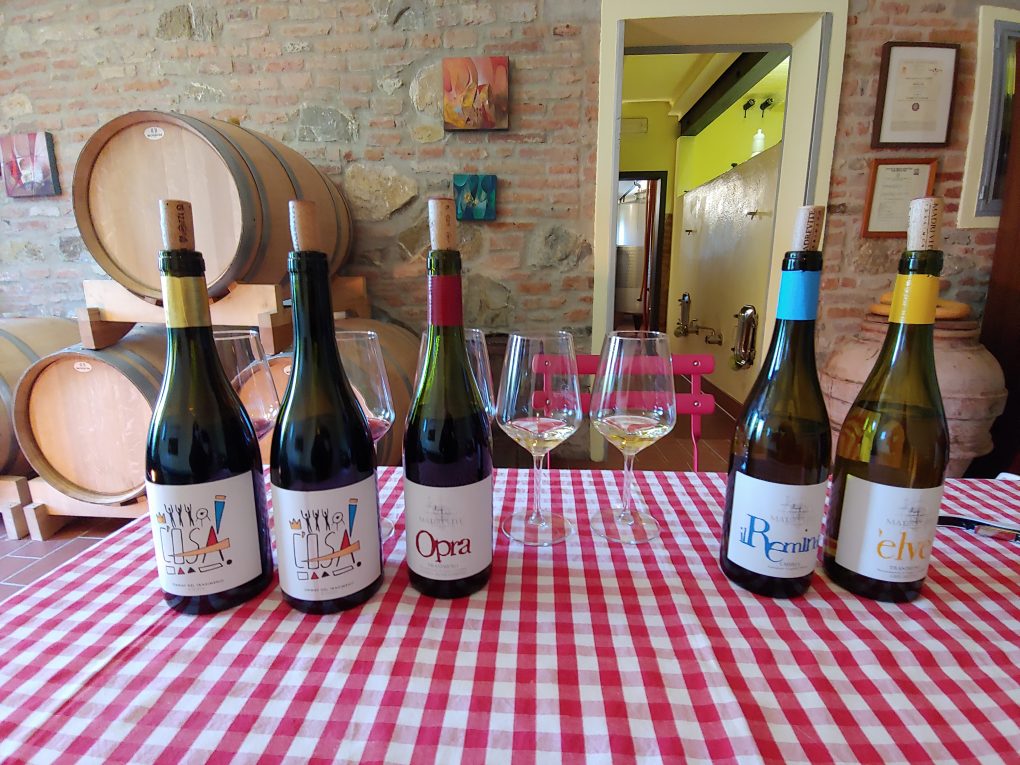
I headed to the venerable Madrevite afterwards. Madrevite, established in 2003, is an organic and environmentally-sustainable winery located in Cimbano village within Castiglione del Lago, a municipality in Perugia province, bordering Tuscany, and surrounded by Lakes Trasimeno, Chiusi, and Montepulciano. Its production area is centered in Colli del Trasimeno DOC wine territory. The autochthonous grape Gamay del Trasimeno, the regional varieties Trebbiano Spoletino, Grechetto, and Sangiovese, as well as Montepulciano, and the international grape Syrah, are planted on the 11 hectares of sand and clay soil-dominant, hilltop vineyards situated at 280 to 350 meters (asl). Proprietor Nicola Chiucchiurlotto credits his grandfather Zino with having played a pivotal role in the renaissance of Trasimeno Gamay in the area 50 years ago, when he began planting Trasimeno Gamay using shoots sourced from a century-old vineyard. Nicola has continued to cultivate Trasimeno Gamay to craft classic wines using scientifically updated processing methods. The estate was renovated in 2008 to support organic wine production.
Madrevite, Il Reminore, Umbria IGP Bianco
Trebbiano Spoletino
Aged six months in stainless steel and in bottle
Full-bodied and complex, with a refreshing minerality
Aromas of citrus, orchard, and tropical fruits, grass, and herbs
Notes of ripe lemons, peaches, and apples, along with basil and honeysuckle
Madrevite, La Bisbetica Rosé, Umbria IGP Rosato
Gamay del Trasimeno
Aged four months in stainless steel and cement tanks, and three months in bottle
Bright and fruit-dominant, with both minerality and salinity
Aromas of dark flowers, citrus fruits, and red berries
Notes of violet and rose petals, pink grapefruits, and strawberries, along with raspberries
Madrevite, Opra, Gamay del Trasimeno DOC
Gamay del Trasimeno
Round and smooth, with soft and velvety tannins
Aged 10 months in cement tanks and three months in bottle
Aromas of red berries and dark stone fruits, spices, and earth
Notes of black plums and cherries, pepper, and dark chocolate
Madrevite, C’osa, Gamay del Trasimeno DOC Riserva
Fermented six months in cement tanks, and aged one year in oak casks and cement tanks and six months in bottle
Fresh, elegant, and balanced
Aromas of dried dark flowers, mixed berries, and black stone fruits, along with sweet spices
Notes of violets, strawberries, and raspberries, along with blackberries, cherries, and earth

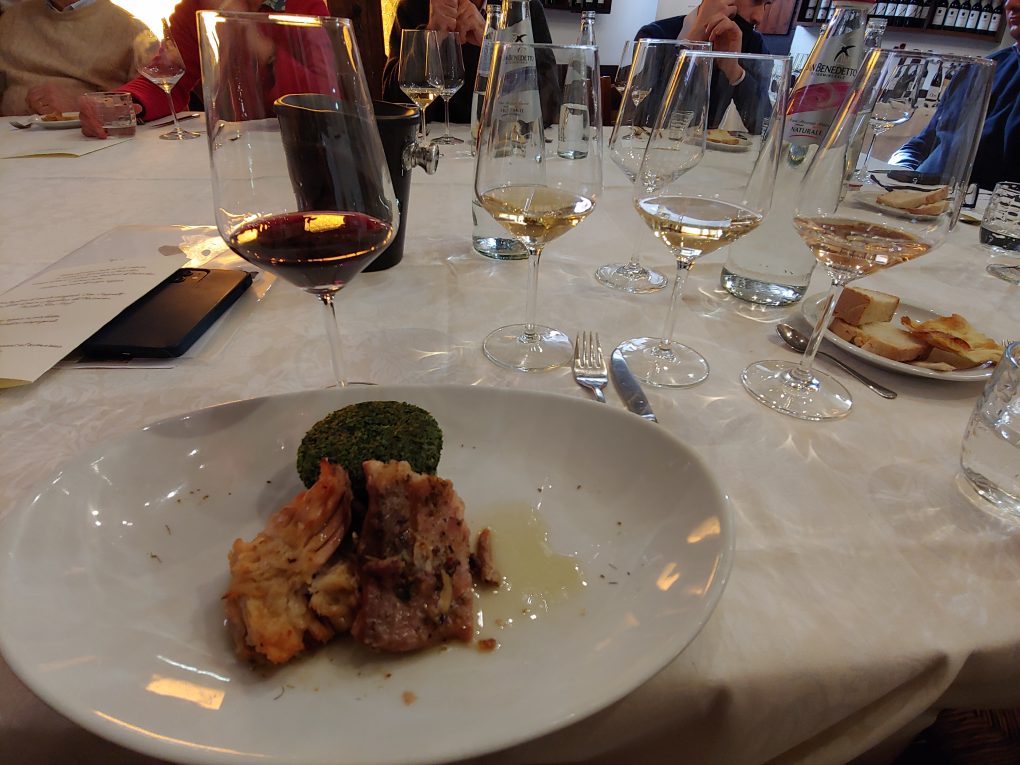
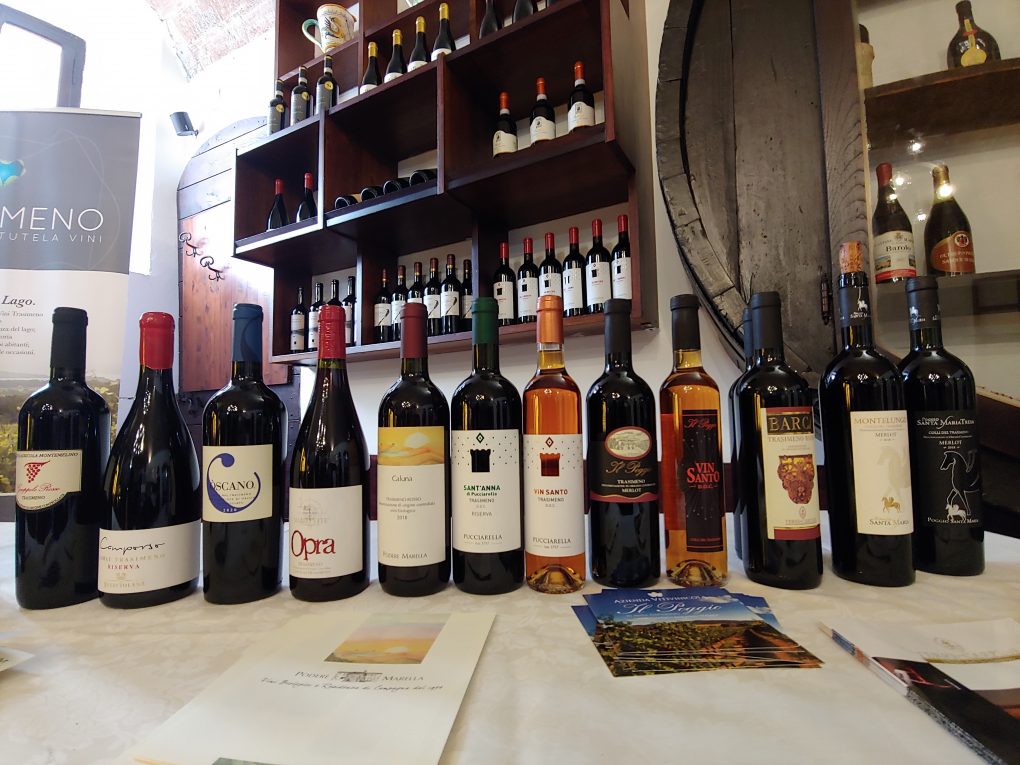
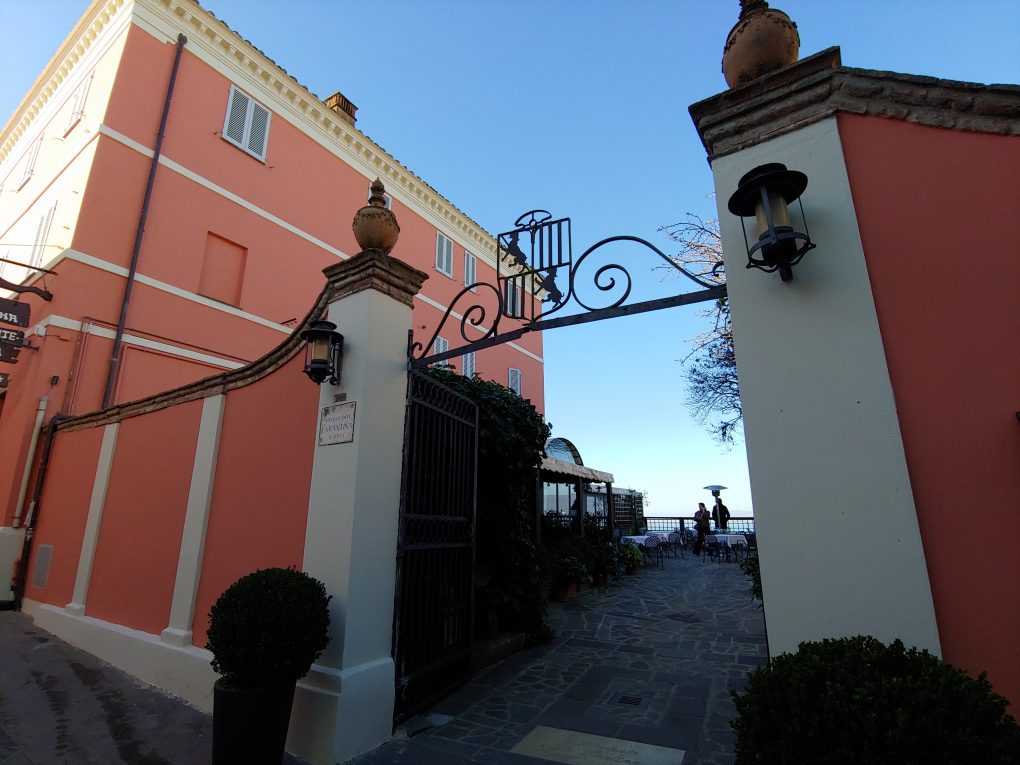
I enjoyed a fantastic lunch with the members of the Consorzio Tutela Vini del Trasimeno at Ristorante La Cantina overlooking Lake Trasimeno. The four-course lunch emphasized local and regional selections including a trout and a carp sourced from Lake Trasimeno, and paired harmoniously with the carefully curated selection of wines from the area’s producers. A short stroll through town afterwards, and I was back on the wine trail.
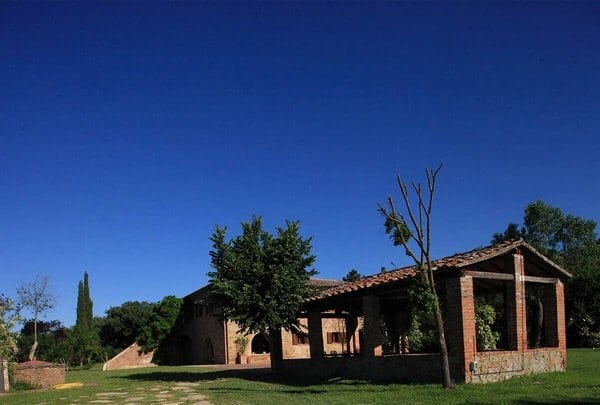
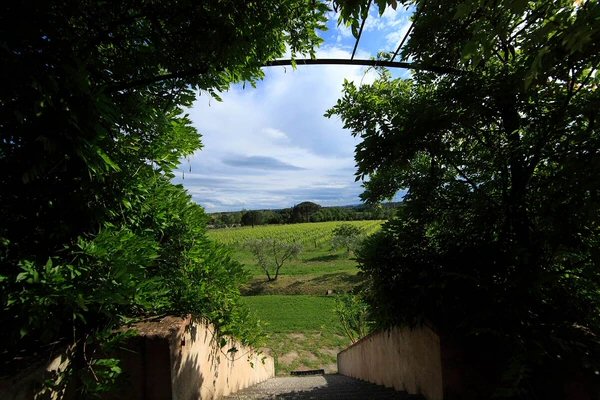
First on the post-lunch agenda was Podere Marella, set among a dense thicket of oaks nestled in the foothills by Lake Trasimeno. The winery was founded by Fiammetta Inga in 1974. Fiammetta was a trendsetter of her time, being one of the first producers in Trasimeno to convert to organic winemaking. In the 1980s, Fiammetta helped to jumpstart agrotourism in the area when she opened her rustic estate to guests looking to commune with nature. Podere Marella is now managed by Fiammetta’s son Cosimo, who, together with oenologists Jean Natoli and Guido Beltrami, and agronomist Gwenaël Thomas, continue her decades-long legacy of producing quality organic Umbria IGT and Trasimeno DOC white, rosé, and red wines.
All wines in the Podere Marella portfolio are produced from hard-harvested grapes sourced from low-yielding vines that are nourished, aerated, and hydrated using “green techniques” that avoid the use of chemical additives and pesticides. I tried a pair of wines from the “Fiammetta” line, and a Colli del Trasimeno Rosso DOC, in the winery’s tasting room.
Podere Marella, Fiammetta Vermentino, Umbria Vermentino IGT
Vermentino
Aged six months in steel tanks and at least two months in bottle
Refreshing and round, with a soft acidity
Aromas of citrus and orchard fruits, fresh vegetation, and spices
Notes of lemons, grapefruits, and pears, along with subtle elements of white pepper
Podere Marella, Fiammetta Sangiovese, Umbria Sangiovese IGT
Sangiovese
Aged two years in stainless steel tanks and at least three months in bottle
Fresh, with a juicy, red fruit-dominant character
Aromas of preserved mixed berries, red stone fruits, and mocha
Notes of candied raspberries, ripe cherries, and black stone fruits, along with dark chocolate, and black pepper
Podere Marella “Caluna,” Colli del Trasimeno Rosso DOC
Blend of Sangiovese, Gamay del Trasimeno, and Canaiolo
Aged two years in stainless steel tanks and at least three months in bottle
Elegant and well-balanced, with concentrated ripe red-fruit flavors
Aromas of red berries and fruits, and spices
Notes of ripe strawberries, raspberries, and cherries, along with subtle elements of tobacco and black pepper
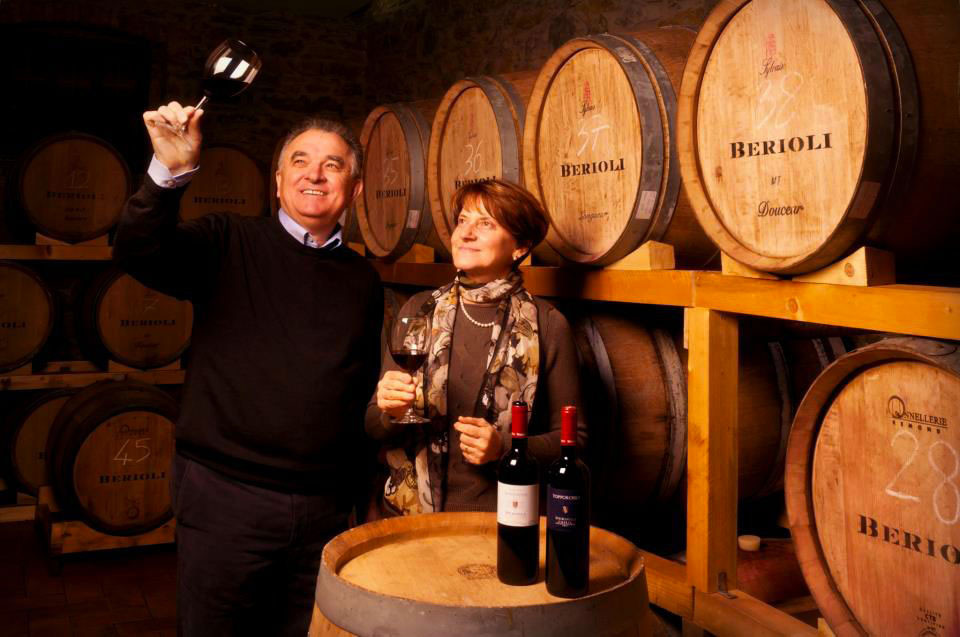

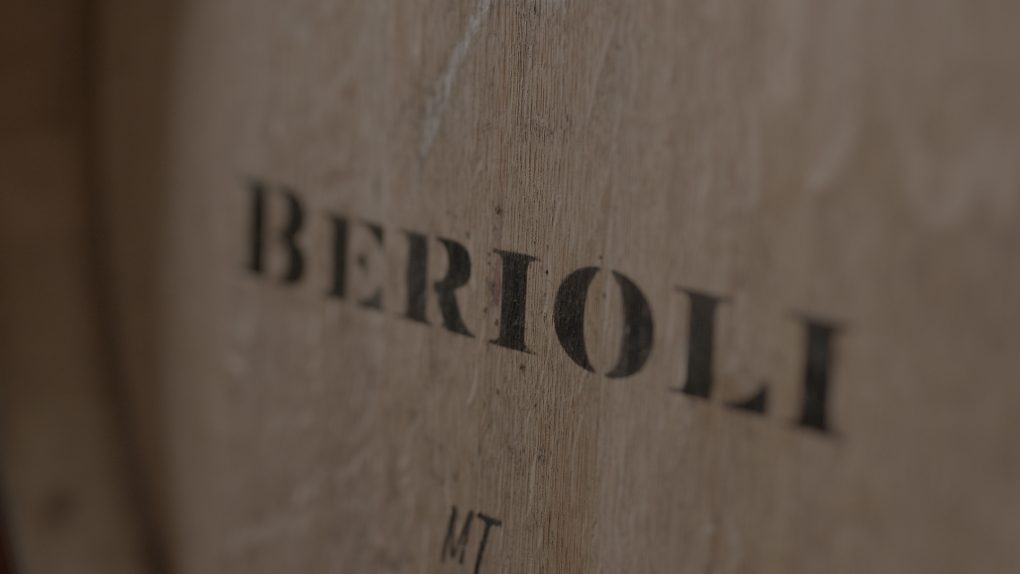
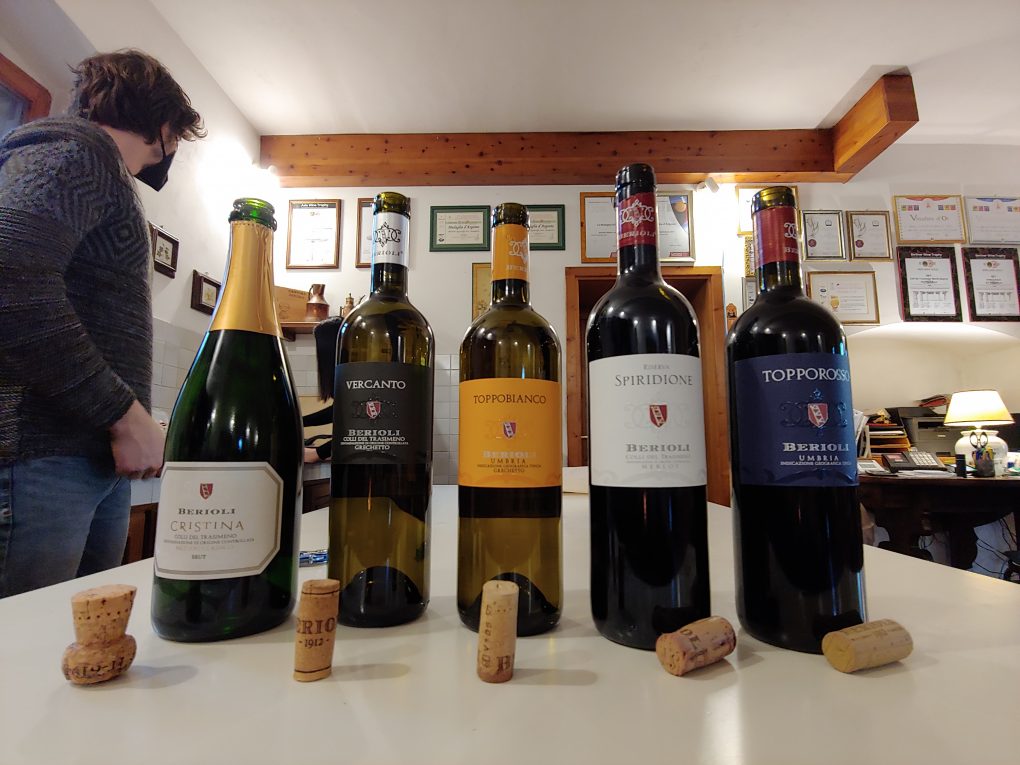
My final stop before heading to dinner was the nearly century-old Cantine Berioli located in the medieval hamlet of Montesperello di Magione by Lake Trasimeno. The estate encompasses 12 hectares of recently acquired or renovated hillside vineyards with calcareous, clay, and sand-dominant soils that are best suited to the cultivation of the regional grapes Grechetto, Procanico, and Sangiovese, as well as the international varietals Chardonnay, Merlot, and Cabernet Sauvignon. Proprietor, enologist, and vigneron Roberto Berioli is at the helm, and he, along with his wife Cristina, their children Assunta and Matteo, and other members of the Berioli family, are all actively engaged in day-to-day operations at this organic winery. The family recently converted the vineyards to support organic production because they believe that grapes planted on chemical and pesticide-free soil yield the best wines. They employ only environmentally-sustainable techniques when making not only their wine, but also their wheat, and extra virgin olive oil, because they believe these minimally environmentally invasive methods help to best preserve the purity of the natural landscape. These methods include the hand-harvesting of grapes and using “green” methods as opposed to chemical additives and pesticides to nourish, aerate, and protect the soil. I paired Cantine Berioli’s eclectic portfolio of wines with a selection of cheeses and meats in their rustic tasting room. I found several gems, including a Spumante made in the traditional method, a Vin Santo crafted from regional grapes, a single-varietal Grechetto, and a Riserva produced from the international grape Merlot.
Cantine Berioli, Cristina – Colli del Trasimeno DOC (Blanc de Blancs)
Chardonnay
Fermented in stainless steel tanks using indigenous yeasts and aged 36 months in bottle
Elegant, with a lively effervescence, and a balanced salinity and minerality
Aromas of white flowers, tropical fruits, and nuts, along with brioche
Notes of lemons, papayas, and pineapples, along with toast, vanilla, and almonds
Cantine Berioli, Toppobianco – Umbria IGT Bio
Grechetto
Fermented in stainless steel tanks
Fresh and well-balanced, with a subtle minerality
Aromas of white flowers, and citrus and orchard fruits
Notes of grapefruits, green apples, and pears, as well as peaches, acacia, and broom
Cantine Berioli, Spiridione – Colli del Trasimeno DOC Riserva
Merlot
Fermented in stainless steel tanks, and aged for a minimum of 18 months in medium-toasted French oak barrels, and in bottle
Complex and structured, with well-rounded tannins
Aromas of dark flower petals, mixed berries, and dark stone fruits, as well as spices
Notes of violets, raspberries, and cherries, as well as plums, tobacco, and black pepper
Cantine Berioli, Sperello – Vinsanto Colli del Trasimeno DOC
Blend of dried Grechetto and Procanico
Elegant and fresh, with a soft texture
Aged four years in oak barrels
Aromas of preserved orchard fruits, nuts, and honey
Notes of candied apricots, dates, and figs, as well as warm chestnuts, and brown sugar

Palazzo Bontadosi Hotel & Spa
Dinner that evening was in the ancient stonewalled city of Montefalco where two millennia later, cars maneuver deftly past an entranceway that knights in shining armor once rode past. I had just enough time beforehand to check in at the Palazzo Bontadosi Hotel & Spa hotel in the center of the city. I decided to ascend the cobblestone path on foot so that I might get a better look at the quaint enotecas, salumerias, trattorias, and osterias that lined the street on either side. As the heel of my boot rang against the floor, I could almost hear the rumble of wooden cart wheels and the echo of shod hooves. I know this might sound like the set up for a cheesy romance novel, but the Old World vibe here is truly pristine. The hotel was a perfect blend of classic décor with modern accents. Some rooms have hand-painted frescoed walls, while others offer exposed wood-beamed ceilings. There’s a charming onsite restaurant with a welcoming and solicitous staff, serving regional and international fare well-prepared by a chef who relocated to Montefalco from the United States after falling in love with the area while on holiday. Breakfast is first-rate. There’s also a wellness spa that’s sometimes just what you need after a day spent exploring.
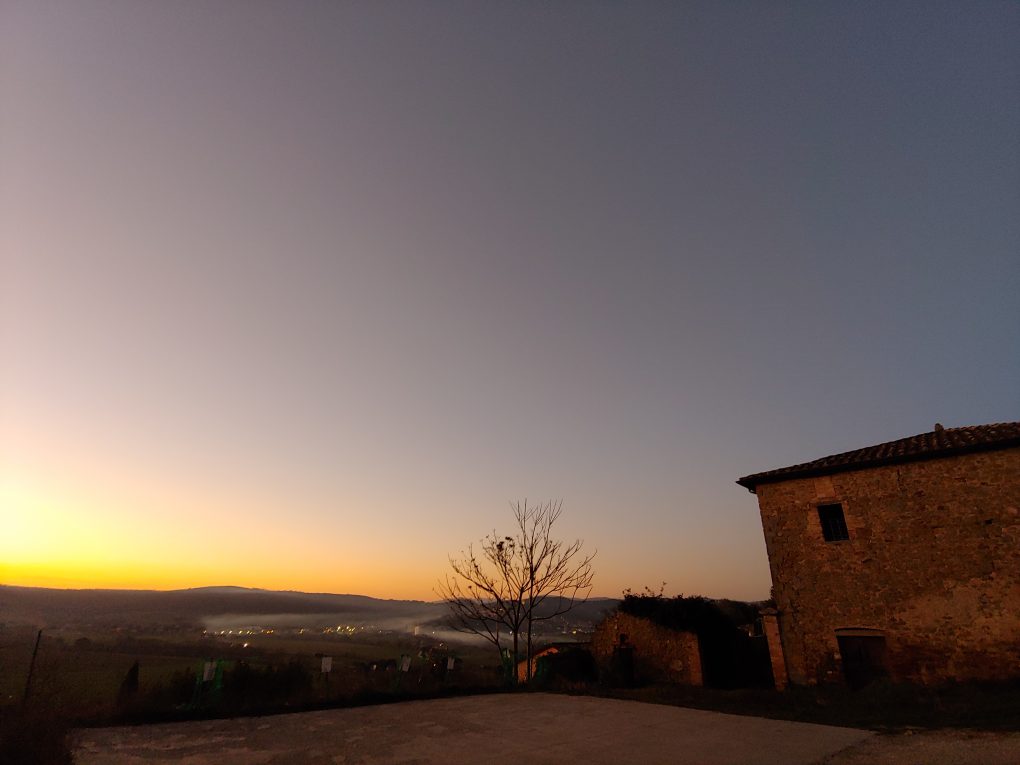
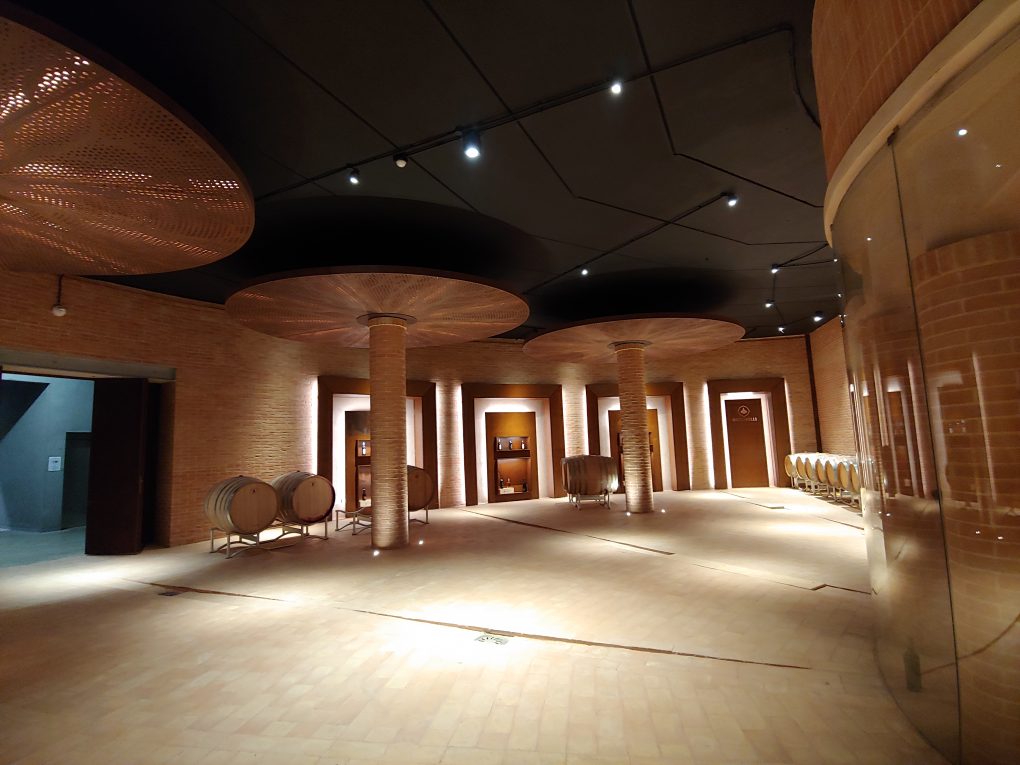
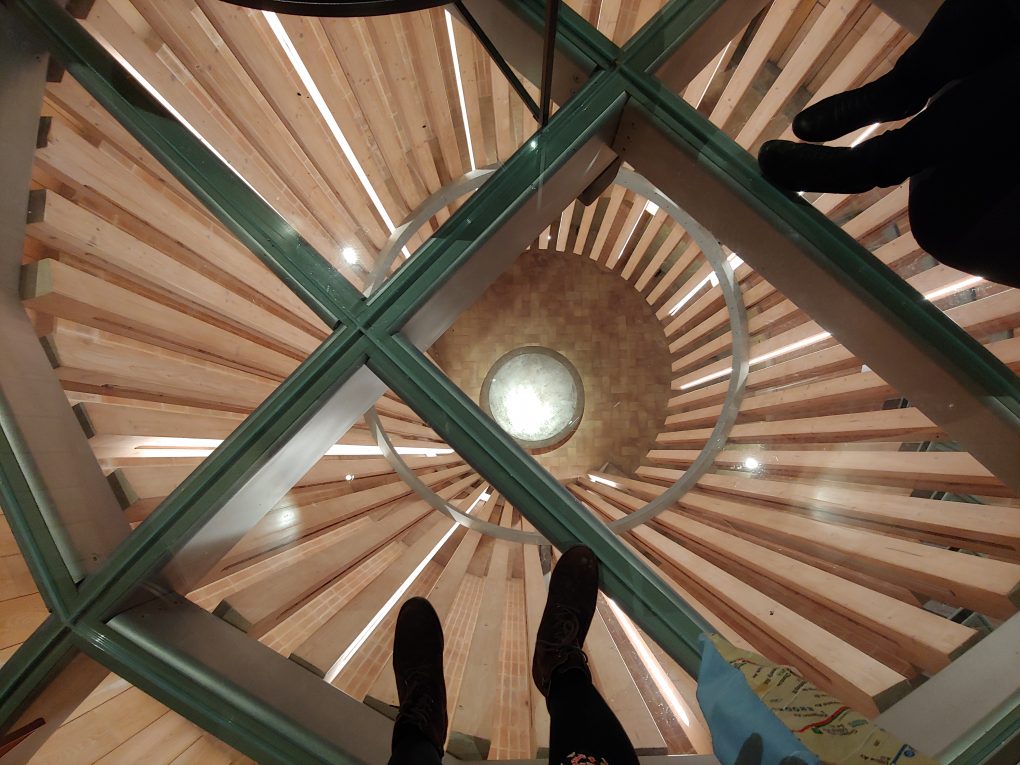

The Consorzio Tutela Vini di Montefalco hosted a dinner with creatively executed gourmet fare courtesy of Ristorante La Locanda del Teatro. It was held at Cantine Briziarelli, a beautifully designed, contemporary wood, steel, and glass marvel-of-a-winery, complete with a winding staircase that leads to a transparent landing, offering a dramatic view of the floors below. The over 100 year-old Cantine Briziarelli planted its first vineyards in Montefalco in 2003. Since then, the winery has continued to expand its production, building a new cellar in 2012, and revamping its label and logo in 2021. The winery’s approach to winemaking? Make updated versions of classic wines from carefully cultivated and meticulously processed local, regional, and international varietals that appeal to the new generation of wine drinkers. I tried the winery’s Montefalco Rosso DOC, and single-varietal Sagrantino.
Cantine Briziarelli, Montefalco Rosso DOC 2019
Blend of 60% to 80% Sangiovese, 10% to 25% Sagrantino, and a percentage of other regional red varietals depending on the vintage
Fermented in stainless steel tanks, and aged 20 months in stainless steel tanks and four months in bottle
Well-rounded, with a good acidity and salinity, as well as bright tannins
Aromas of dark flower petals, red and dark stone fruits, and sweet spices
Notes of violets, roses, and fresh cherries, along with plums, vanilla, and mixed herbs
Cantine Briziarelli, Vitruvio – Montefalco Sagrantino DOCG 2011
Sagrantino
Aged two years in French oak barriques and stainless steel tanks, and one year in bottle
Full-bodied, with good weight, well-rounded tannins, and a bright acidity and salinity
Aromas of dried dark flower petals, ripe black stone fruits, and scented wood, as well as spices
Notes of crushed violets and roses, baked cherries and plums, as well as oak, leather, and cinnamon
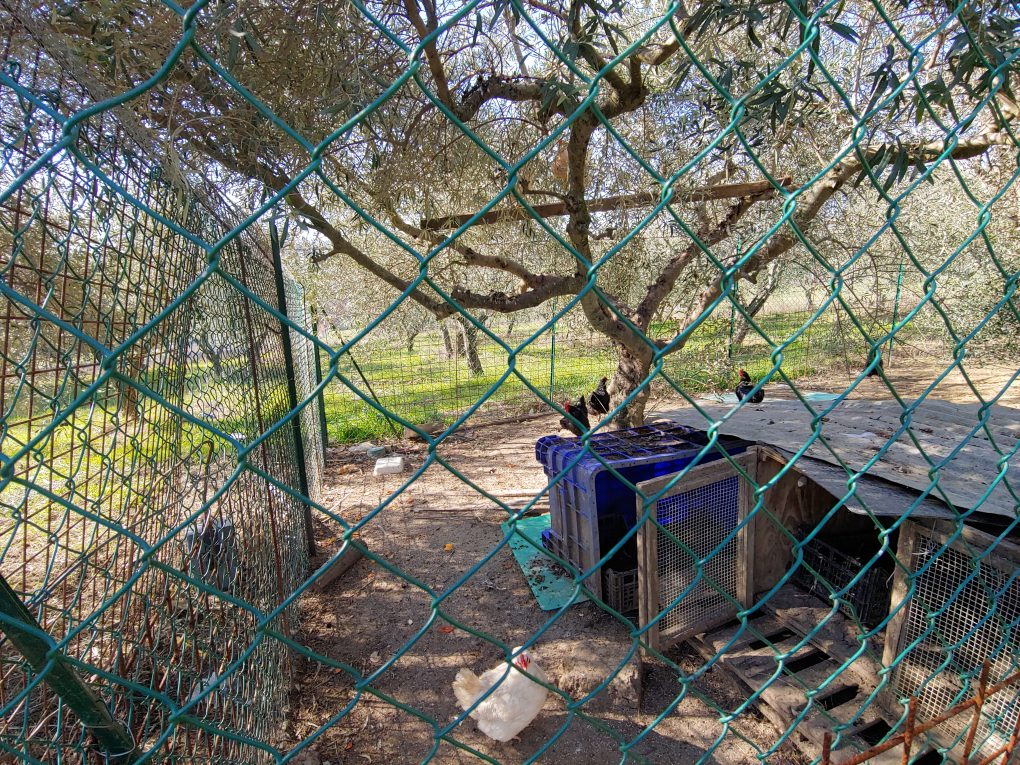

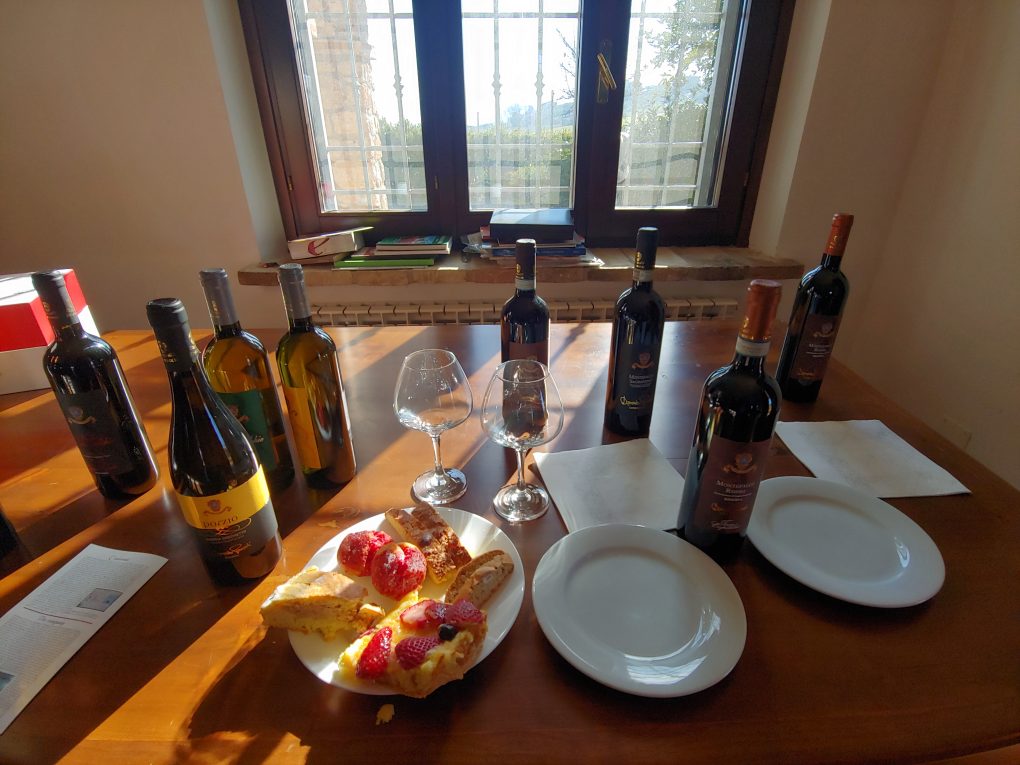
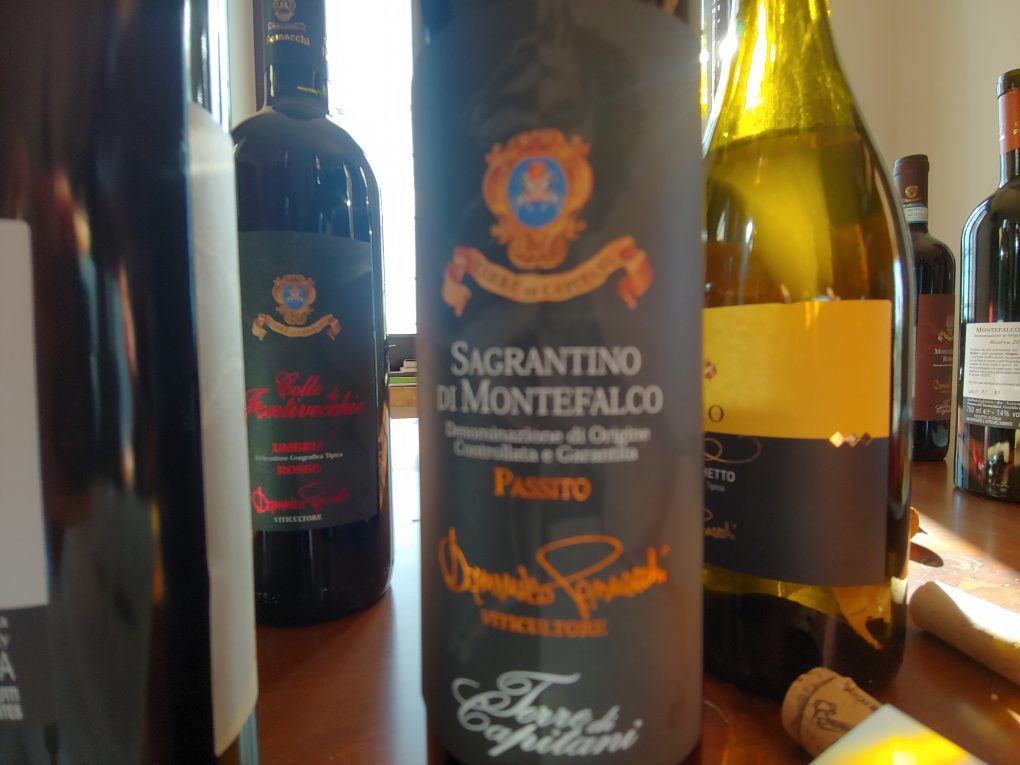
My first winery stop in Montefalco the following morning was the rustic Terre di Capitani, located in the municipality of Gualdo Cattaneo, in Perugia province. Its 10 hectares of clay soil-dominant vineyards, situated in the Colle di Fontivecchie at 400 meters (asl), are dedicated to the cultivation of the autochthonous varietal Sagrantino, the regional grapes Grechetto, Procanico, Malvasia Bianca, Sangiovese, and Montepulciano, and the international varieties Chardonnay and Merlot. Grapes are harvested by hand, and vinified in glass-lined cement tanks. Concrete tanks offer better insulation and more stable temperature regulation, while allowing for greater oxygen exchange that fosters the gradual development of well-rounded tannins. Aging (depending on the type of grape), takes place in French oak barriques. The winery, constructed underground to allow for natural temperature regulation, provides a consistently cool environment for wine storage. I was particularly impressed with this winery’s Grechetto blend, the single-varietal Sagrantino, and the Passito.
Terre di Capitani, Colle di Fontivecchie, Umbria Grechetto IGT
Blend of 95% Grechetto and 5% Malvasia Bianca
Fermented in concrete tanks
Medium bodied, with a bright acidity and minerality
Aromas of white flowers, citrus and orchard fruits, and fresh herbs
Notes of lemons, green apples, and peaches, as well as broom and basil
Terre di Capitani, Sagrantino di Montefalco DOCG
Sagrantino
Fermented in concrete tanks, and aged two years in French oak barriques
Elegant and complex, with well-rounded tannins
Aromas of dark flowers, ripe mixed berries, and black stone fruits, as well as scented wood
Notes of violets, raspberries, and blackberries, as well as blueberries, plums, and chocolate
Terre di Capitani, Sagrantino di Montefalco Passito DOCG
Sagrantino (dried for two to four months prior to processing)
Fermented in concrete tanks, and aged two years in French oak barriques
Complex, with concentrated flavors, and a soft and silky texture
Aromas of preserved red berries and dark stone fruits, along with herbs and sweet spices
Notes of mixed berry jam, candied cherries and plums, along with dried figs and honey
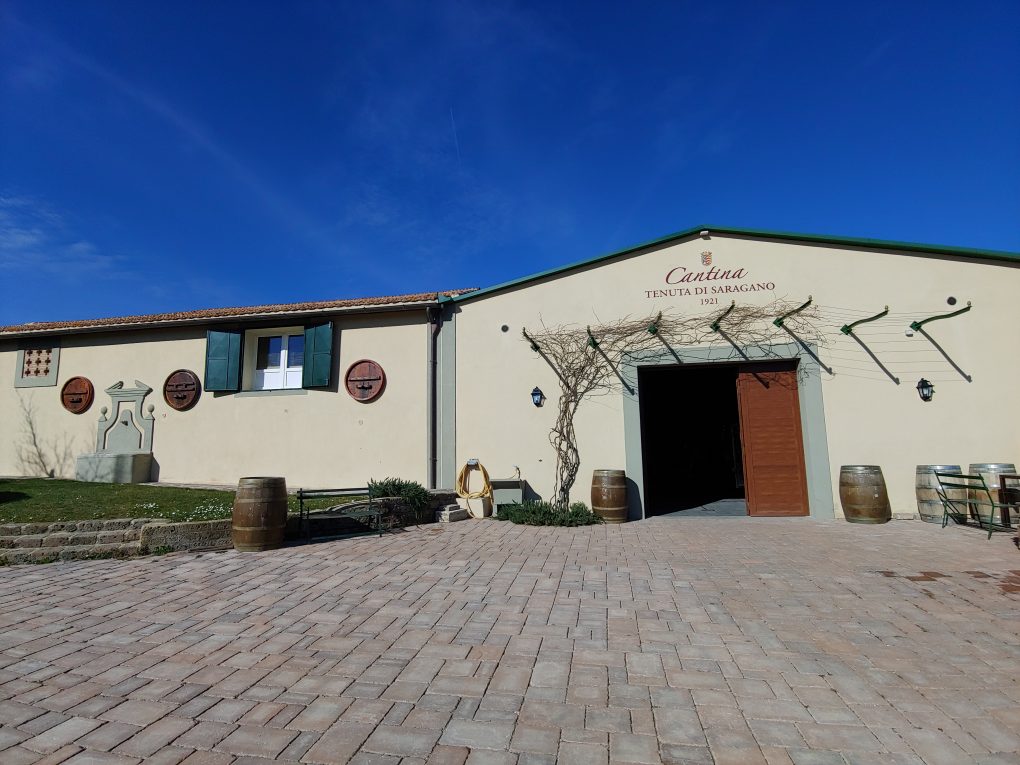
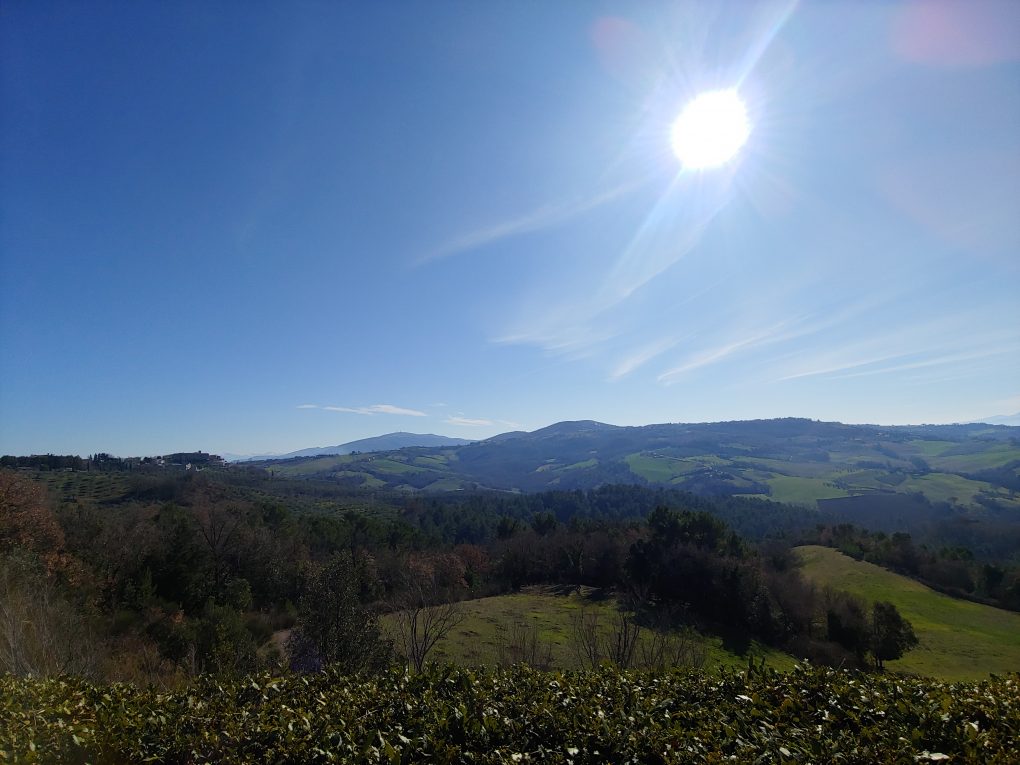
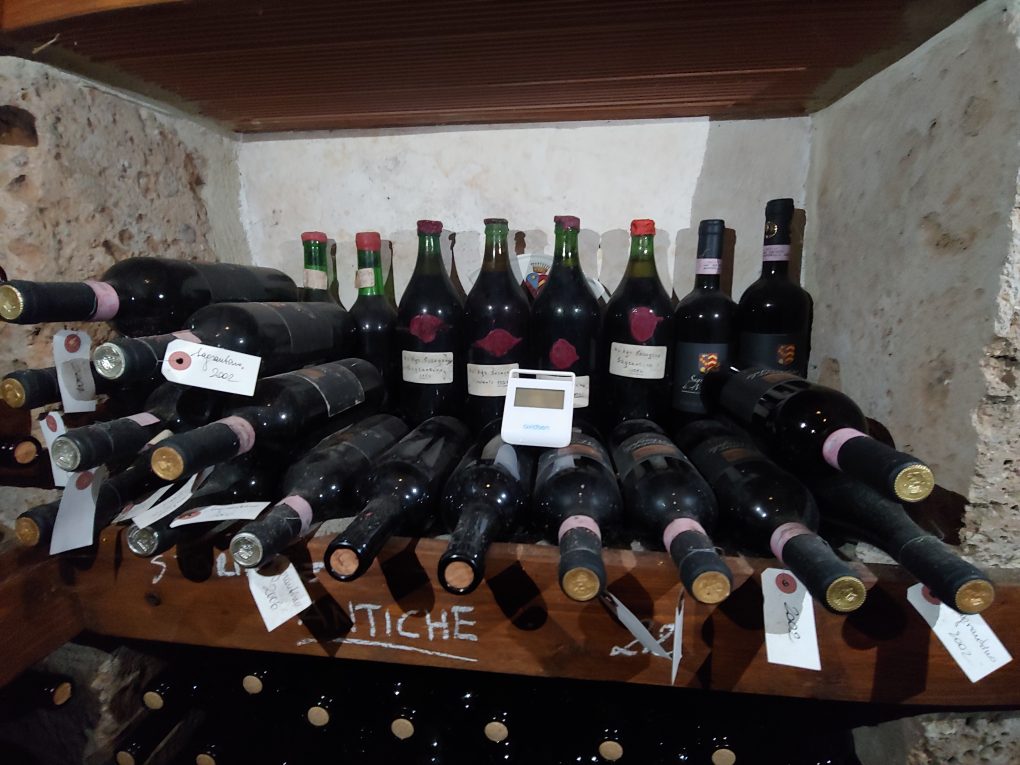

Tenuta di Saragano is set on a vast 14th century, family-owned estate spanning 220 hectares that is located within Montefalco winemaking territory near the municipality of Gualdo Cattaneo. The winery looks out over a verdant landscape of olive tree groves, dense woods, and a Saracen-style tower. If you look carefully, you can spot a lake nestled among the lush valleys. The roughly 10 hectares of calcareous and clay soil-dominant vineyards are situated at a lofty 500 meters (asl) (the highest in all of Montefalco), and the unobstructed views from this vantage point are absolutely breathtaking. The first thought that came to my mind when I looked out over this expansive and unspoiled territory was the Paramount television series Yellowstone. (For those of you who aren’t familiar with the show, it’s a drama centered on the travails of the Dutton family who own a serious amount of land and established their legacy in Montana cattle country). Tenuta di Saragano would be sort of like Yellowstone if the show was set in Umbria and the Duttons traded in wine. Well, the Duttons might not make wine, but Count Riccardo Pongelli Benedettoni, the proprietor of Tenuta di Saragano, does raise horses and free-range Chianina cattle. I saw some of them grazing on the grounds during my tour with Riccardo’s son Guillermo through the property in the winery’s Polaris Ranger. Given the natural beauty of this landscape, it’s no surprise that Tenuta di Saragano is one of Umbria’s top agrotourism sites. La Ghirlanda, a 13-room manorhouse renovated in 1994, and equipped with fireplaces and a swimming pool, as well as two farmhouses, are available for short or long-term stays. The estate also offers a guests-only, seasonal farm-to-table restaurant, and a newly opened cantina in a converted stable that is open to the public and houses the Umbrian cooking School of Amalija. Hiking, horseback riding, and bicycle trails provide abundant opportunities to commune with nature. And of course, there’s wine tasting. The wines at Tenuta di Saragano are born out Riccardo’s deeply rooted love for the land that has belonged to his family for a millennia and counting. Riccardo and oenologist Ivan Vincareti believe that the condition of the soil determines the quality of a wine, so every step in the winemaking process, from the cultivation of the vines to bottling, is carried out with attention to preserving the terroir. This means employing high-density planting of vines to keep grape yields low and quality high, protecting the 40+ year-old vines, and allowing the surrounding natural environment to thrive by choosing minimally invasive processing techniques whenever possible. Trebbiano Spoletino, Grechetto, Riesling, Sagrantino, Sangiovese, Montepulciano and Merlot are cultivated to produce Spumante, white, rose’, red, and Passito wines. I sampled the Tenuta di Saragano portfolio of wines alongside an expertly executed four-course meal prepared at the onsite cooking school.
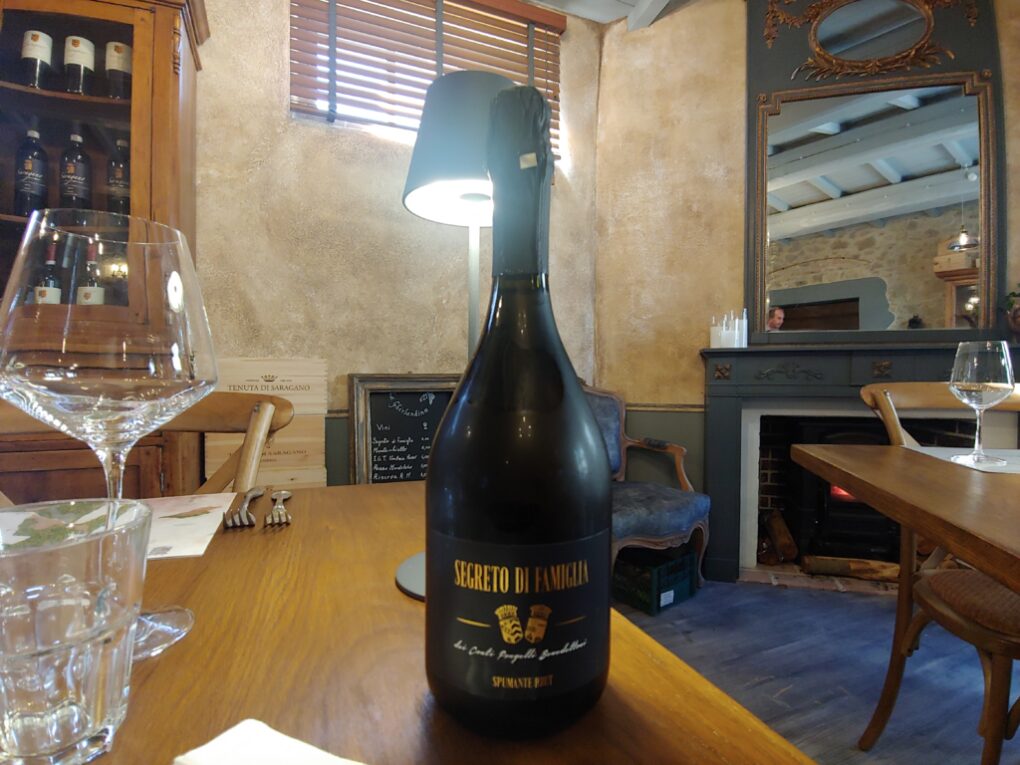
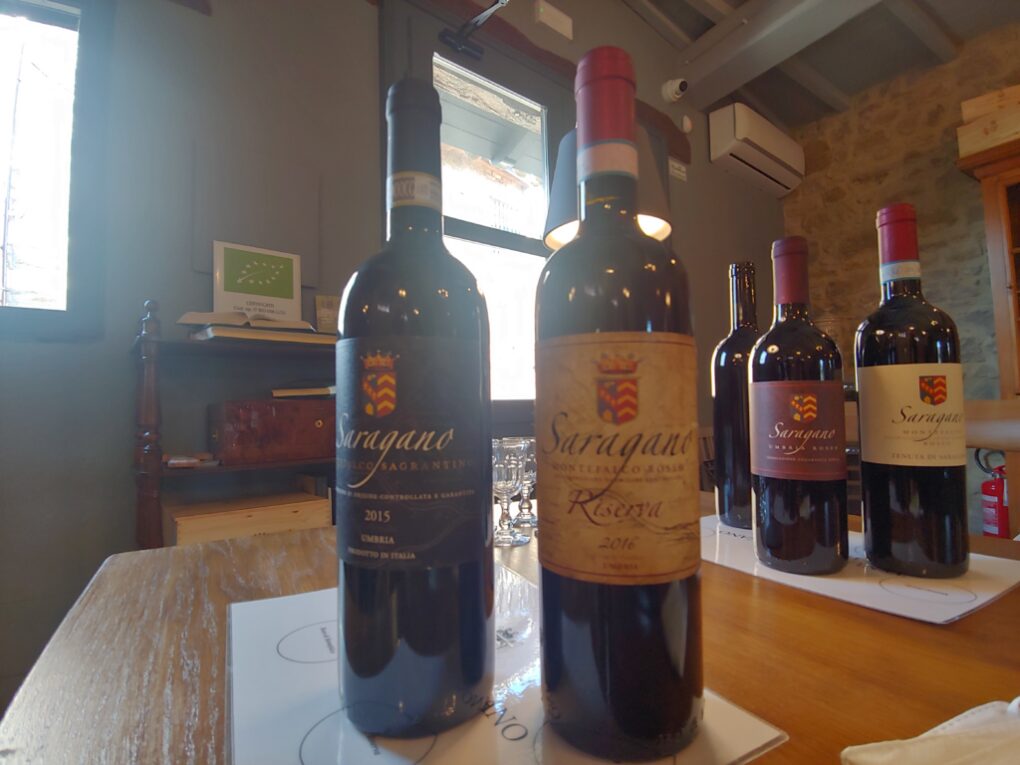
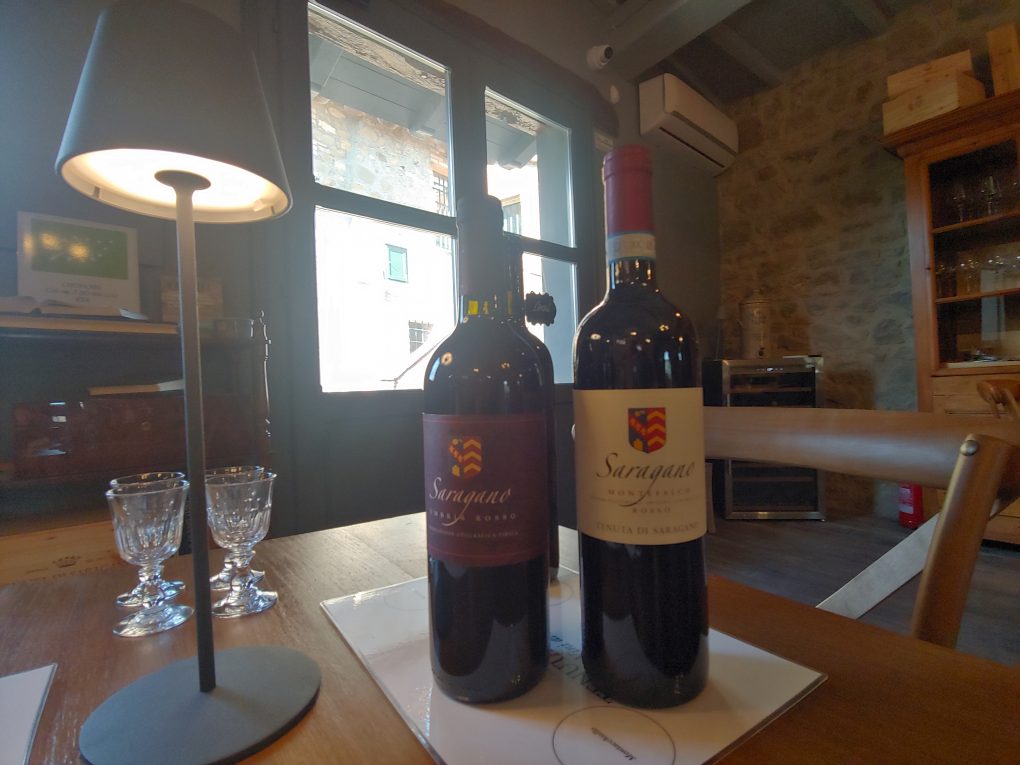
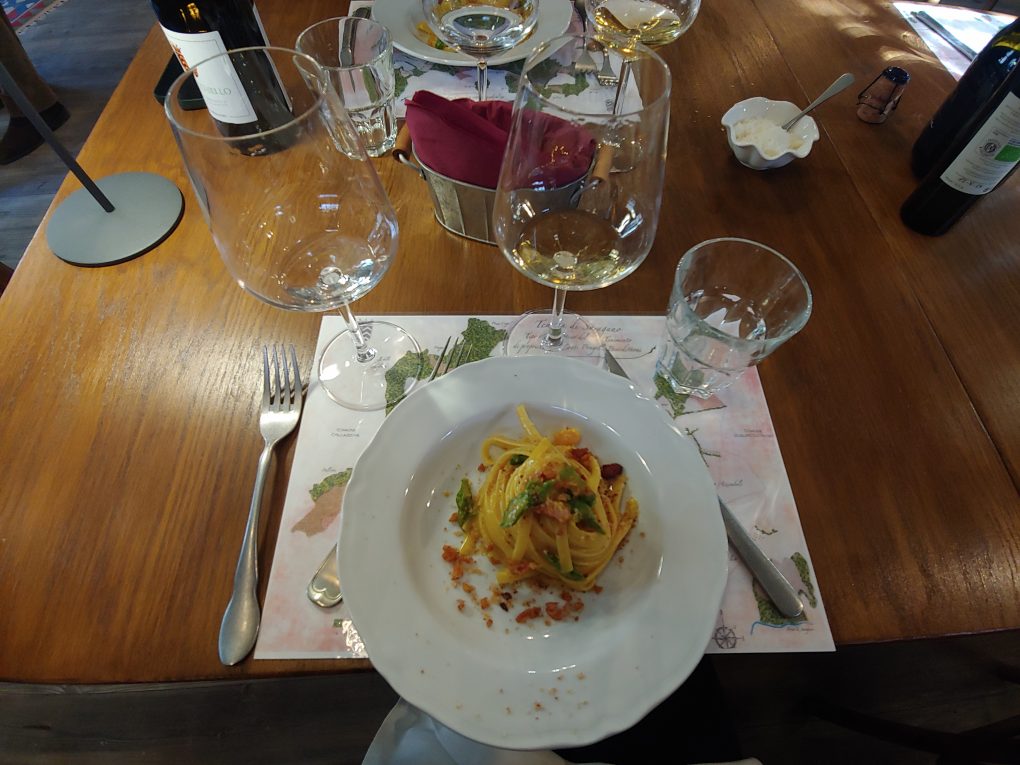
Tenuta di Saragano, Segreto di Famiglia, Spumante Brut
Riesling
Fermented in stainless steel tanks (Charmat method)
Crisp, with a refreshing acidity, and a subtle salinity
Aromas of white flowers, citrus and orchard fruits, and grass
Notes of lemons, peaches, and apricots, as well as pears and fresh herbs
Tenuta di Saragano, Montacchiello, Montefalco Grechetto, DOC
Grechetto di Todi
Well-balanced, with a subtle salinity and minerality
Aged three months in stainless steel tanks and in bottle
Aromas of ripe citrus and orchard fruits, nuts, and sweet spices
Notes of dried lemons, orange peels, and peaches, along with apricot jam, almonds, and nutmeg
Tenuta di Saragano, Umbria Bianco IGT
Blend of Grechetto di Todi and Trebbiano Spoletino
Aged three months in stainless steel tanks and in bottle
Fresh, with a good acidity and salinity
Aromas of yellow flowers, orchard and tropical fruits, and nuts
Notes of limes, green apples, and pears, as well as honeydew, broom, and almonds
Tenuta di Saragano, Umbria Rosso IGT
Blend of 70% Sangiovese and 30% Merlot
Aged three months in French oak barriques and in bottle
Well-rounded, smooth, and balanced
Aromas of red berries and stone fruits, earth, and tobacco
Notes of raspberries, blackberries, and cherries, along with scented wood, and dried herbs
Tenuta di Saragano Montefalco Rosso DOC
Blend of 60% Sangiovese, 25% Merlot, and 15% Sagrantino
Aged 18 months in French oak barriques and one year in bottle
Round, with a good acidity, and bright tannins
Aromas of dark flowers, mixed berries, and preserved fruits, as well as menthol
Notes of violets, raspberries, and blackberries, as well as blueberries, anise, and earth
Tenuta di Saragano, Sagrantino di Montefalco DOCG
Sagrantino
Aged two years in French barriques and in bottle
Full-bodied, with powerful, but well-rounded tannins
Aromas of red and black berries and fruits, earth, and leather, along with coffee
Notes of ripe blackberries, cherries, and plums, along with tobacco and mocha
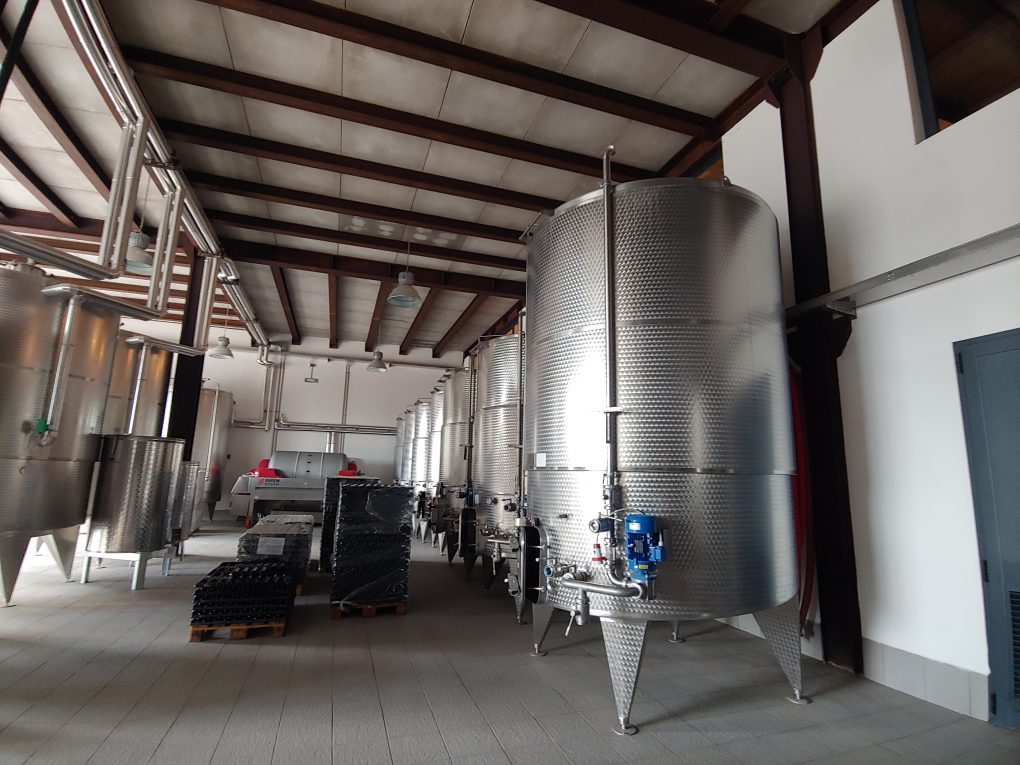
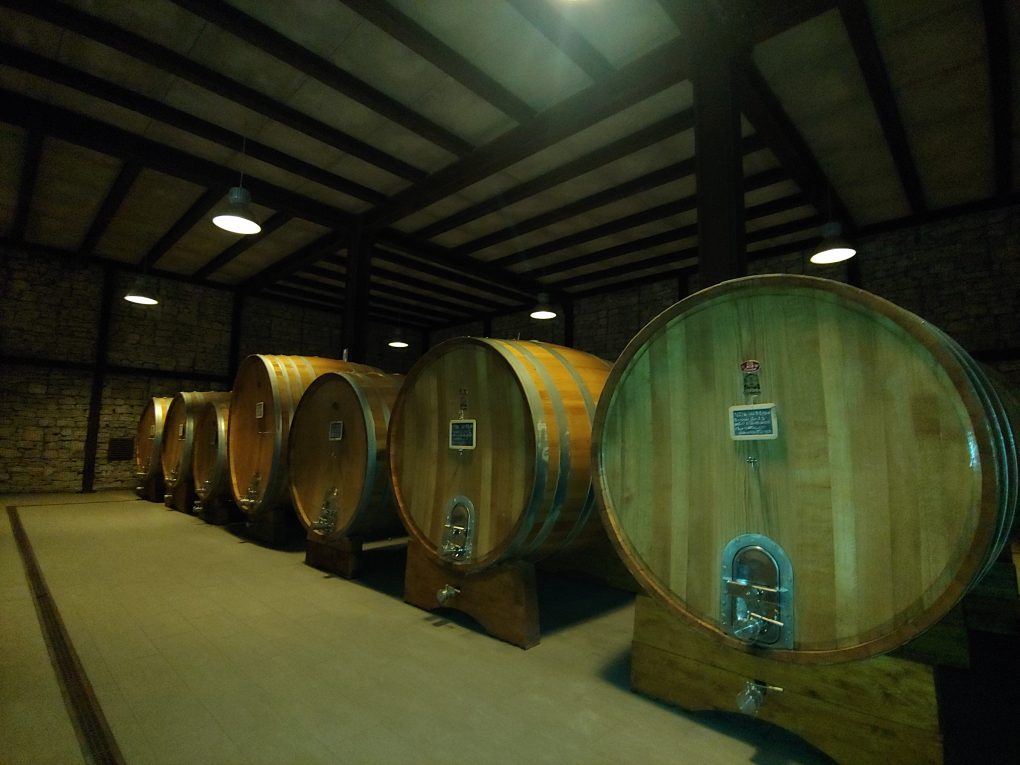
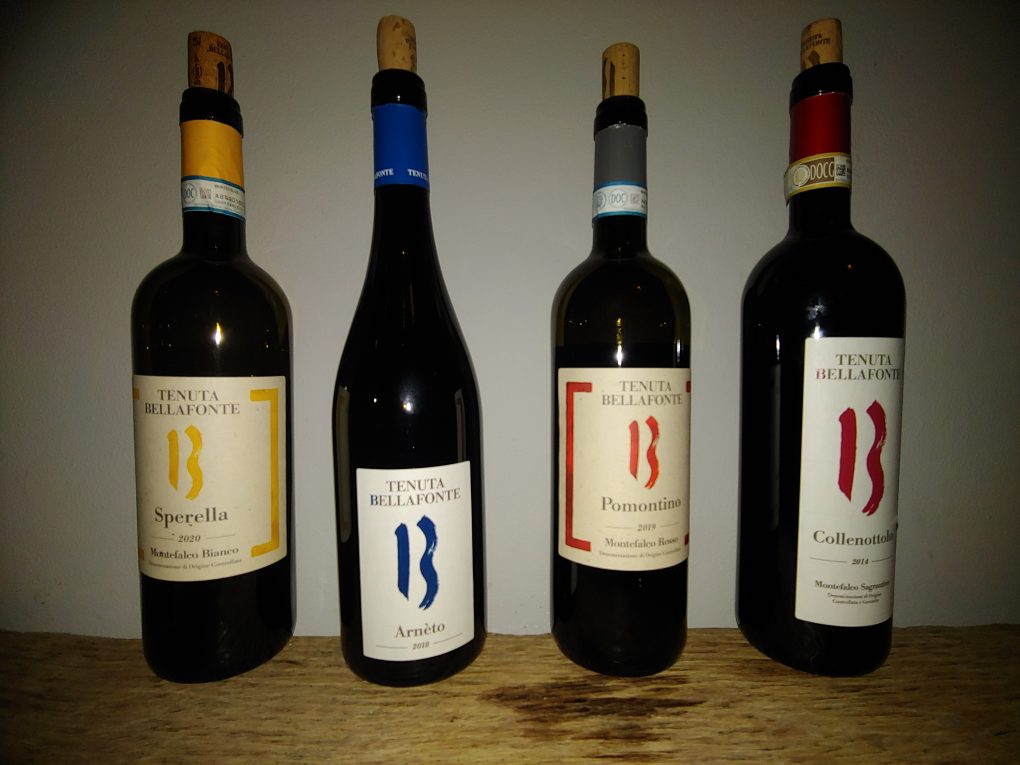
Tenuta Bellafonte is located near the historic village of Torre del Colle, in Brevagna. This contemporary, environmentally-sustainable estate with 11 hectares of clay and sand soil-dominant vineyards situated at 260 to 320 meters (asl), runs on solar and biomass energy. Wine is stored underground in a steel, stone, and glass-lined cellar that is built in contiguity to the soil and is connected through a network of pipes that naturally regulate the temperature and conserve energy. The name, an Italian translation of proprietor Peter Heilbron’s German surname, (heil meaning well-being and beauty, and bron meaning source), reflects Peter’s Germanic roots as well as his admiration for the idyllic landscape of his adopted homeland. The Tenuta Bellafonte portfolio is the culmination of years of aspiration and hard work to create local and regional wines that best express the terroir using eco-friendly processes whenever possible. The soil is kept aerated and healthy using machines instead of chemicals and pesticides. Peter believes a wine shouldn’t be released into the market before it’s absolutely ready to be consumed. In other words, vendors should never sell customers a wine and tell them they can’t drink it for two years. A properly made wine using varietals that age well should evolve over time, but it should also be as close to perfect as possible before it hits the shelves. I sampled an array of wines from Tenuta Bellafonte among the towering oak casks in the underground cellar and here are some highlights.
Tenuta Bellafonte, Arnèto, Umbria Bianco IGT
Trebbiano Spoletino
Aged at least seven months in Slavonian oak casks and six months in bottle
Crisp, with a balanced acidity, and a subtle minerality
Aromas of white and yellow flowers, citrus, orchard, and tropical fruits, and fresh vegetation
Notes of grapefruits, ripe peaches, and pears, as well as pineapples, acacia, and herbs
Tenuta Bellafonte, Collenottolo, Montefalco Sagrantino DOCG
Sagrantino
Aged for at least three years in Slavonian oak casks and for a minimum of two years in bottle
Rich and full-bodied, with robust tannins
Aromas of dark flower petals, mixed berries, and herbs, along with sweet spices
Notes of violets, preserved raspberries, and blackberries, along with blueberries and cardamom
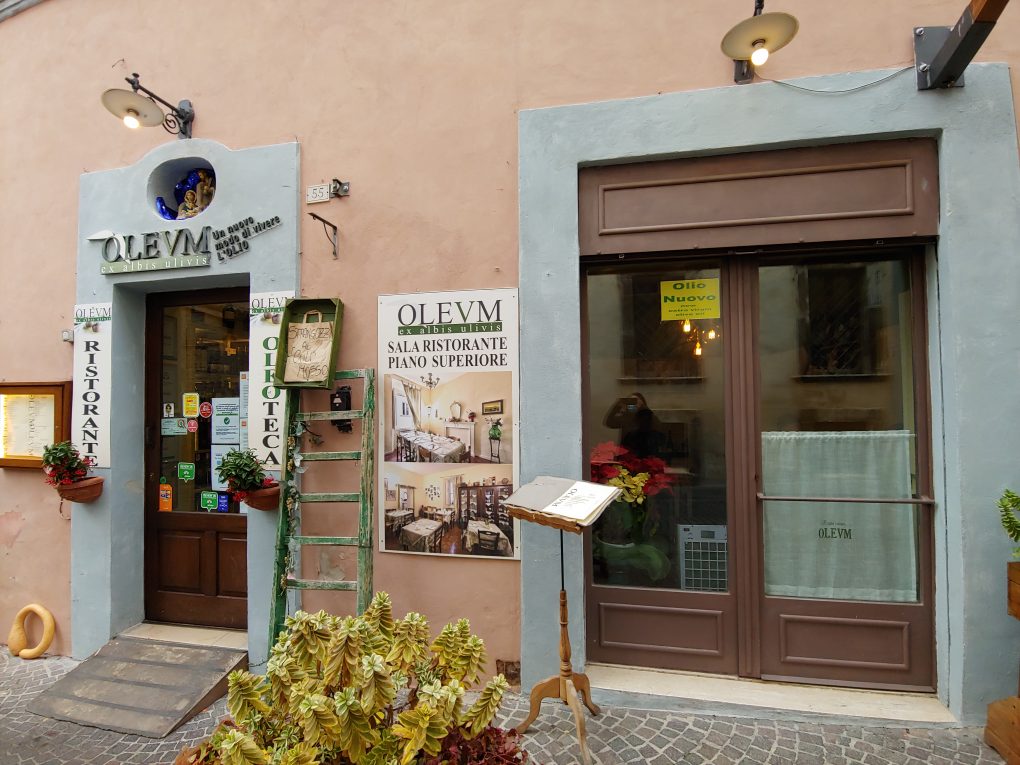
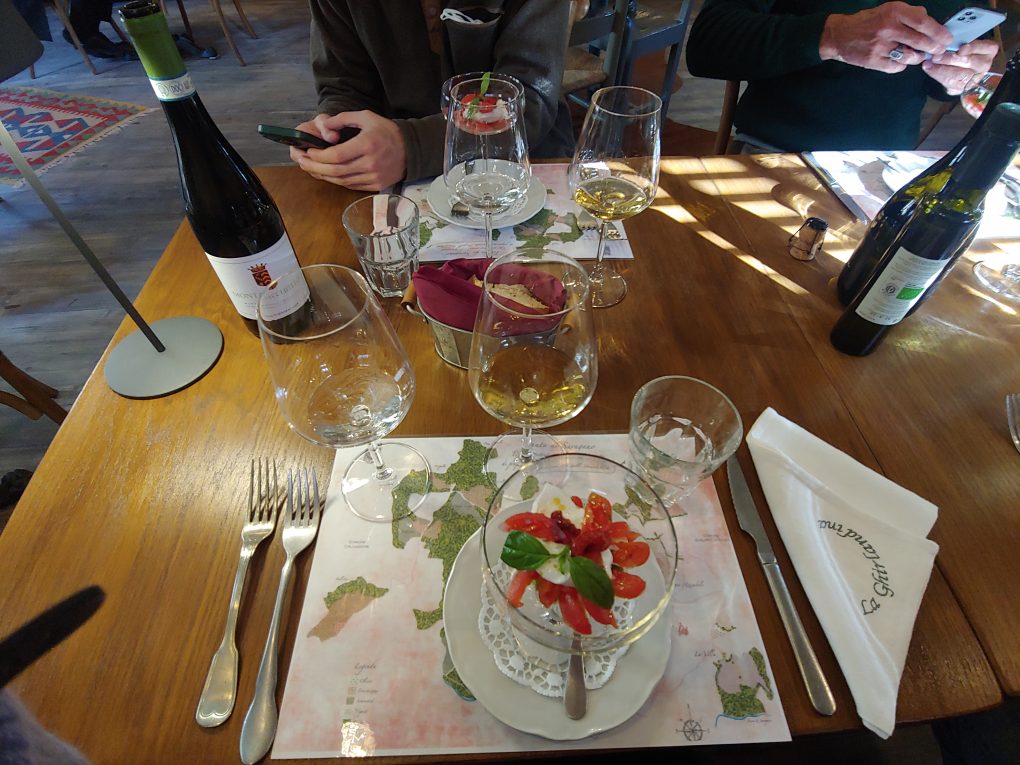

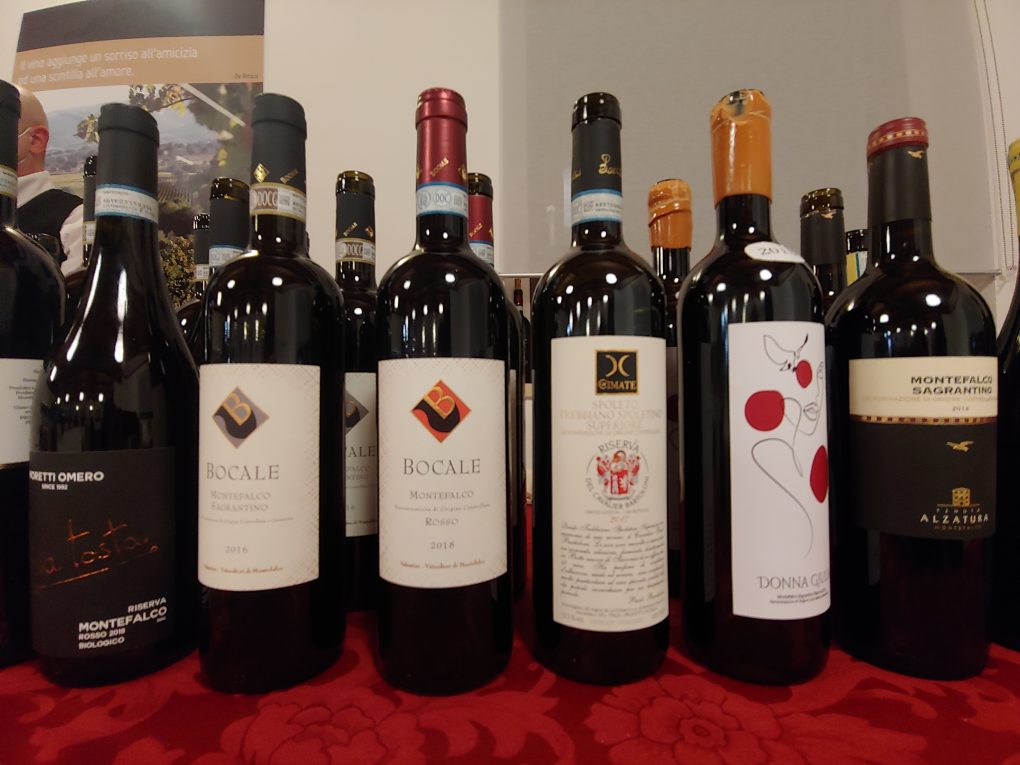
Dinner that night was delicious, thanks to the delectable cuisine of Ristorante Olevm. It was held at Cantina Le Cimate, a modern winery established in 2011 by Paolo Bartoloni. It has 24 hectares of calcareous, silt, and clay soil-dominant vineyards where the autochthonous varietals Trebbiano Spoletino and Sagrantino, and regional grapes including Grechetto, Montepulciano, and Sangiovese are cultivated, not to mention some unconventional varieties (for these parts) such as Viognier, and even the Swiss varietal Müller-Thurgau. The cellar is energy self-sufficient by way of photovoltaic panels that convert thermal to electric power, and the heating and cooling systems are regulated via touchscreen panels.
Cantina Le Cimate, Trebbiano Spolentino Superiore DOC
Aged one year in French oak barrels and in bottle
Trebbiano Spoletino
Complex, with great balance, and a soft minerality
Aromas of yellow flowers, citrus and orchard fruits, and balsamic
Notes of ripe grapefruits, white peaches, and lychees, along with broom, lemongrass, and vanilla
Cantina Le Cimate, Montefalco Sagrantino DOCG
Sagrantino
Full-bodied and structured, with refined tannins
Aged two years in a combination of French, Austrian, and Slavonian oak barrels and 36 months in bottle
Aromas of dark flowers, preserved dark berries and stone fruits, and garrigue, as well as mixed spices
Notes of violets, blackcurrant and plum jam, and licorice, as well as oak, sage, and pepper
Look out for the winery’s release this spring of Donnachiara, named after Paolo’s daughter!




Needless to say, wine and gastronomy go together. Given that Umbria is truffle country, and a big importer of this prized fungus, you’d be remiss not to go on a truffle hunt while you’re there. I visited Valnerina Tartufi, one of Italy’s top sellers and importers of truffles to participate in a comprehensive “forest to table” truffle experience. The company headquarters is located in the medieval town of Arrone, a municipality dating back to the 9th century in Terni province that is as much a truffle hunter’s as it is a nature lover’s destination. Arrone is set within the pristine and verdant Nera River Park, popular with watersport, extreme, and rock climbing enthusiasts, not to mention hikers and bicyclists, who are drawn to its challenging peaks and valleys. Valnerina Tartufi is family-owned, with a 50-year history of truffle gathering and processing that spans four generations. It began in the 1960s as a local business with a cleaning and processing facility. In 2007, siblings Elisabetta and Leonardo Matteucci decided to expand operations and take the family business onto the international stage with the launch of Valnerina Tartufi and A.R. Tartufi srl. with two factories, production and packaging facilities, and a showroom. Nevertheless, when it comes to truffle gathering, the Matteucci family still does things the traditional way. Like clockwork, Elisbatetta and Leonardo’s grandfather heads out in the mornings, walking stick in hand, with his trusty duo of tartufi (the Italian dog breed tartufi or Lagotto Romagnolo are considered the best truffle hunters), into the steep forests in search of truffles. He gives his commands and words of encouragement in Italian to the tartufi, who sniff the ground until the sound of excited barking, and the sight of vigorous tail-wagging, signal they’ve hit truffle gold. For the tartufi, the reward are savory sausage treats their owner retrieves from his worn leather pouch. The truffle type and size of the yield vary, depending on the time of year. The company sources only naturally-occurring “Melanosporum Vitt”, “Magnatum pico,” “aestivum,” and “brumale” truffle varieties from Norcia, Spoleto, and Sila, depending on the season. Summertime brings the search for white truffles in Alba. The Valnerina Tartufi truffle line includes whole, shaved, and ground black and white truffles, that are sold fresh, dried, or frozen, in addition to a selection of truffle spreads. The truffles are processed without preservatives and other chemical additives.


I enjoyed a four-course truffle-inspired lunch at Valnerina Tartufi that helped me understand exactly why truffles are among the most sought-after ingredients in the world. It truly is gastronomic gold. It’s also versatile, adding complex savory and pleasantly pungent aromas to everything from bruschetta and focaccia, to pasta and polenta. The flavors harmonized with the quartet of wines from Montefalco that were served with the dishes. The rich and satisfying meal made me grateful that I had gotten in some cardio when I hit the truffle hunt trail with the Matteuccis and their tartufi that morning.




Dinner in Montefalco that night was held at Tabarrini, a sleek and polished, state-of-the-art, family-owned winery where everything from the lights, to the temperature controls of the tanks and casks used for fermentation and aging in the cellar, are regulated by a single touch screen panel paired with a smartphone. Giampaolo Tabarrini is the fourth generation of the Tabarrini family to stand at the helm, and he’s clearly not tech-shy. In fact, Giampaolo is as equally comfortable making wine and importing truffles, as he is laying the groundwork for an e-bike rental initiative through the now defunct Spoleto – Norcia Railway, and organizing the contents of his cellar into an app that allows him to access the precise location of every single bottle with the touch of a fingertip. Did I mention he’s also just about the most energetic and affable guy you’d ever meet? His prized possession? Four bottles of Grechetto made by his grandfather that date back to 1940.




Tabarrini has been entirely organic for some time, but Giampaolo doesn’t want to emphasize this aspect when marketing his wines. Why? Well, because he would prefer that consumers purchase his wine for their style and quality, and not just because they’re organically produced. He recognizes the importance of recognizing trends in the wine industry, but he doesn’t necessarily need his wines to be trendy. Nevertheless, Giampaolo did help to spark renewed interest in Trebbiano Spoletino when he blended this autochthonous white varietal he had sourced from ancient Vite Maritata trained vines on the estate with Grechetto shortly after taking the reins in the management of the winery in the 1990s. Giampaolo was also the first Montefalco-area winemaker to release a single-varietal Sagrantino. I had the opportunity to try his Montefalco Rosso DOC and Sagrantino di Montefalco DOCG at dinner that night.
Tabarrini, Boccatone, Montefalco Rosso DOC 2015
Blend of Sangiovese, Barbera, and Sagrantino (grown on clay and silt soil-dominant vineyards)
Aged 18 months in a combination of French oak casks and barriques and one year in bottle
Medium-bodied, and balanced
Aromas of dark berries and stone fruits, earth, and tobacco
Notes of ripe blackberries, cherries, and plums, along with chocolate, leather, and licorice
Tabarrini, Colle Grimaldesco, Sagrantino di Montefalco DOCG 2015
Sagrantino (grown on a clay and silt soil-dominant vineyard)
Aged three years in French oak casks and one year in bottle
Robust and structured, with firm tannins, and a bright acidity
Aromas of fresh dark flowers, dried citrus fruits, and mixed berries, as well as spices and mocha
Notes of violets, raspberries, and blackberries, as well as blueberries, cherries, and pepper
So if you decide to hit the Umbrian wine trail, do stop by and check out these wineries. Odds are, the folks there will be more than happy to share their fine wines made from autochthonous grapes while offering you some farm-to-table regional cuisine, a bit of history, and maybe a local fact or two. This they will do with warmth and hospitality. Their graciousness, along with their pride in their Umbrian heritage, and unwavering respect for the unparalleled beauty of the natural landscape around them, come together to tell the centuries-old tale of the Umbrian people and culture that lies at the heart of this ancient land.
Pizzeria Charlie Orvieto
Via Loggia dei Mercanti, 14, 05018 Orvieto TR, Italy
Grand Hotel Italia Orvieto
Via di Piazza del Popolo, 13
05018 Orvieto (TR) Italy
39 0763.342065/6
https://www.grandhotelitalia.it
Tenuta Vitalonga
Strada Montiano, 8
05016 Ficulle (TR), Italy
39 0763.836722
Tenuta Vitalonga Winery
Bigi Winery Gruppo Italiano Vini
Via Ponte Giulio, 3 05018 Orvieto (TR) Italy
39 0763.315888
https://www.gruppoitalianovini.it/index.cfm/en/brand/bigi/winery
Cantina Castello di Corbara
Località Corbara, 7, 05018 Orvieto TR, Italy
39 0763.304035
Home
Tenuta di Freddano
Località Fossatello, 34, 05018 Orvieto TR, Italy
39 3338.364754
Castello di Montegiove
Via Beata Angelina, 1
05010 Montegiove
Montegabbione (TR) Italy
39 07638.37473
http://www.castellomontegiove.com
Cantine Giorgio Lungarotti
Viale Giorgio Lungarotti, 2, 06089 Torgiano PG, Italy
39 07598.8661
Agricola Tenute Baldo
Via degli Olmi, 9, 06083 Bastia Umbra PG, Italy
39 07580.10621
Col di Betto s.s.
Strada Sant’Antonio 6, Colle Umberto I
06133, Perugia PG Italy
39 33942.31044
Terre Margaritelli
Strada S. Rocco, 06089 Torgiano PG, Italy
39 075 782 4668
https://www.terremargaritelli.com
Azienda Agricola MADREVITE di Nicola Chiucchiurlotto
Via Cimbano 36, Vaiano – 06061 CASTIGLIONE DEL LAGO
39 07595.27220
Podere Marella
Località Ferretto, 32, 06061 Castiglione del lago PG, Italy
39 07596.59028
https://www.poderemarella.com/it
Berioli Agricola
Via del Moscatello, 3 – Frazione Montesperello, Magione – 06063 (PG) – ITALY
39 33554.98173
Ristorante La Locanda del Teatro
Piazza Antonio Martini, 3, 06036 Montefalco PG, Italy
39 34778.82235
Palazzo Bontadosi Hotel & Spa
Piazza del Comune, 19
06036 Montefalco (PG) Italy
39 07423.79357
Cantine Briziarelli
Via Colle Allodola, 06031 Bevagna PG, Italy
39 07423.60036
Terre di Capitani Az. Agr. Domenico Pennacchi
Voc. Sant’Angelo, 10 Loc. Marcellano – 06035 Gualdo Cattaneo (PG)
39 07429.20069
http://www.pennacchidomenico.com/?lang=en
Tenuta di Saragano
Via del Poggio, 5, 06035 Gualdo Cattaneo PG, Italy
39 33343.38231
https://www.tenutadisaragano.it
Tenuta Bellafonte
Via Colle Nottolo, 2, 06031 Bevagna PG, Italy
39 07427.10019
Ristorante Olevm
Corso Goffredo Mameli, 55, 06036 Montefalco PG, Italy
39 07423.79057
Cantina Le Cimate
Via Cecapecore, 41, 06036 Montefalco PG, Italy
39 07422.61771
Valnerina Tartufi
Fraz. Palombare, 5 – 05031 – Loc. Acquasolfurea – Arrone (TR)
39 07446.2412
https://www-valnerinatartufi-com
Farm Giampaolo Tabarrini
Frazione Turrita – 06036 Montefalco (PG) Italy
39 07423.79351

Be First to Comment